








Save on energy and water consumption, and optimise your process with no additional resources. It can be achieved with software! Think of it as the most knowledgeable and experienced mentor guiding your operators 24/7. If your operator needs a break or leaves, just turn on ‘autopilot’.
Digitalisation and artificial intelligence have become part of our day-to-day lives, both personally and in our work environment. The economic pressures and dwindling of resources globally have added to financial strain across all industries. The resource shortage and cost-cutting actions are putting severe strain on employees—and with a dwindling resource pool, it may seem like an endless battle to increase production.
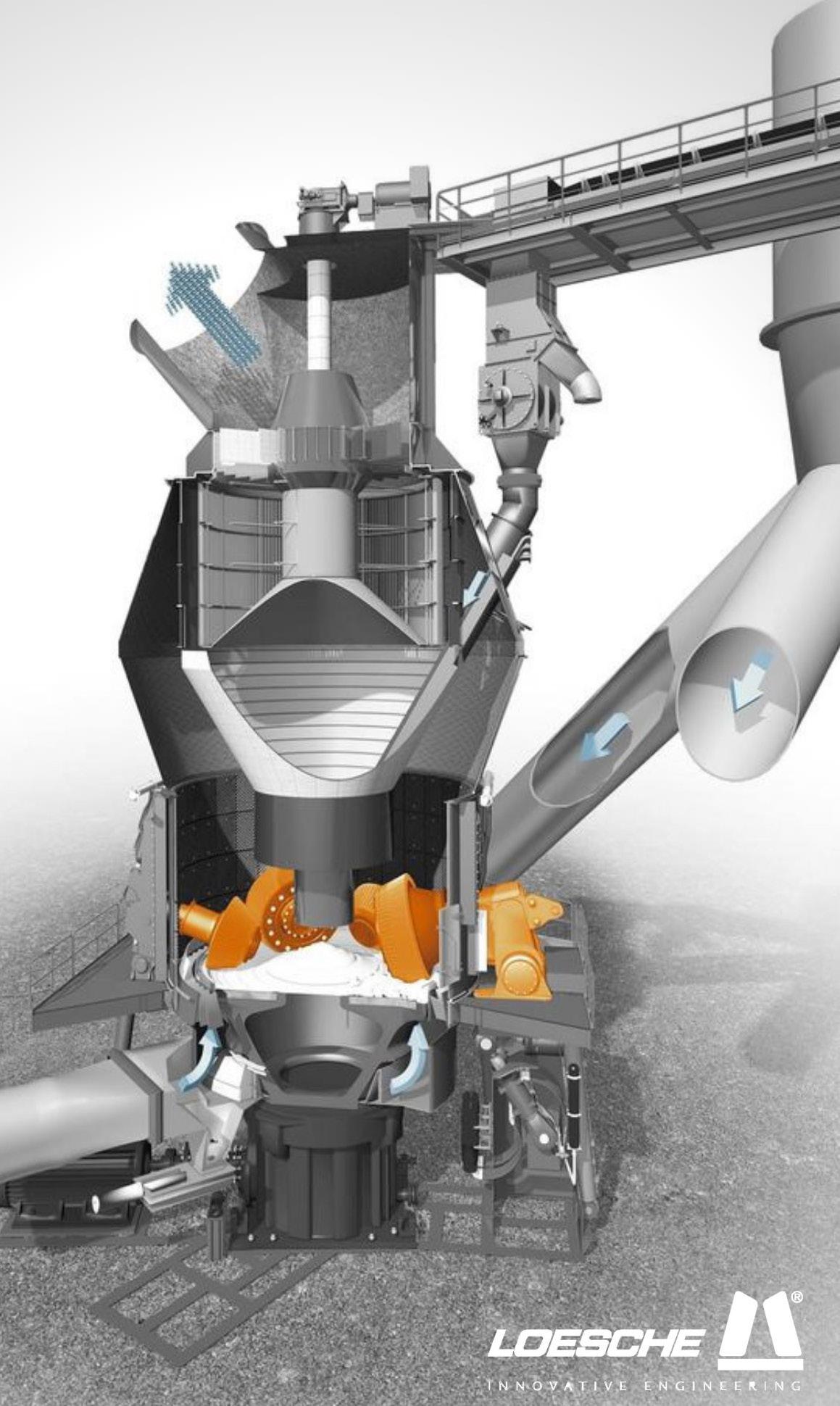


Artificial intelligence (AI) in process control and optimisation is not a new technology and has proven itself in numerous industries and applications. The optimisation and control solutions developed by original equipment manufacturers such as Loesche have been game-changers.
You can trust the technology developed by a product owner that has engineered and perfected its equipment for over 100 years. Loesche has mastered the vertical roller mill and related equipment and has been supporting clients in all industries by engineering solutions to overcome any and all obstacles as they arrive. The digital software developed for automation and control is no different.
Loesche developed its digital solution packages to address specifically skill shortages, energy savings and increasing production, all while utilising clients’ current equipment irrespective of the vendor.
The main goal of the AI software is to reduce the energy consumption of the current equipment, while ensuring an increase in output and keeping your plant performing optimally. You can compare it to having the best and most experience operator sitting with your current operation and advising them to reach all production goals, 24 hours a day, 7 days a week. No annual leave, no sick leave—and, most important, very little production interruptions.

Steinmüller Africa is a B-BBEE level 1 contributor.
Founded in 1960, Steinmüller Africa is a member of The Bilfinger Group of companies, offering a wide range of engineering, manufacturing, pre-fabrication, construction and maintenance services for the power, mining, pulp and paper, petrochemical and other industries all over the world. Steinmüller Africa offers comprehensive expertise in welding and environmental technology, manufacturing, maintenance, lifetime extension plans and project management. In addition, the company provides a wide range of cranes, lifting gear, welding equipment and mobile offices for site establishment.

Your trusted partner in Engineering Excellence!
OUR SERVICES:
Engineering design services
Boiler pressure parts
Commissioning, field, and testing services
Milling plant maintenance
Induction bending of HP/HT piping

Heat treatment (workshop and in situ)
HP heaters & bellows
Piping technology
Pipe supports
Plant erection services
Explosive welding
Shaping the future of industrial engineering
In industrial engineering and machinery, Loesche Engineering Company stands as a testament to innovation, excellence and adaptability. With a history dating back over a century, this German-based firm has consistently pushed the boundaries of technology, revolutionising industries and shaping the future of vertical roller mill technology.

10 FROM THE EDITOR Spirit of innovation and resilience
12 EVENTS
Conferences and meetings for the African mining industry
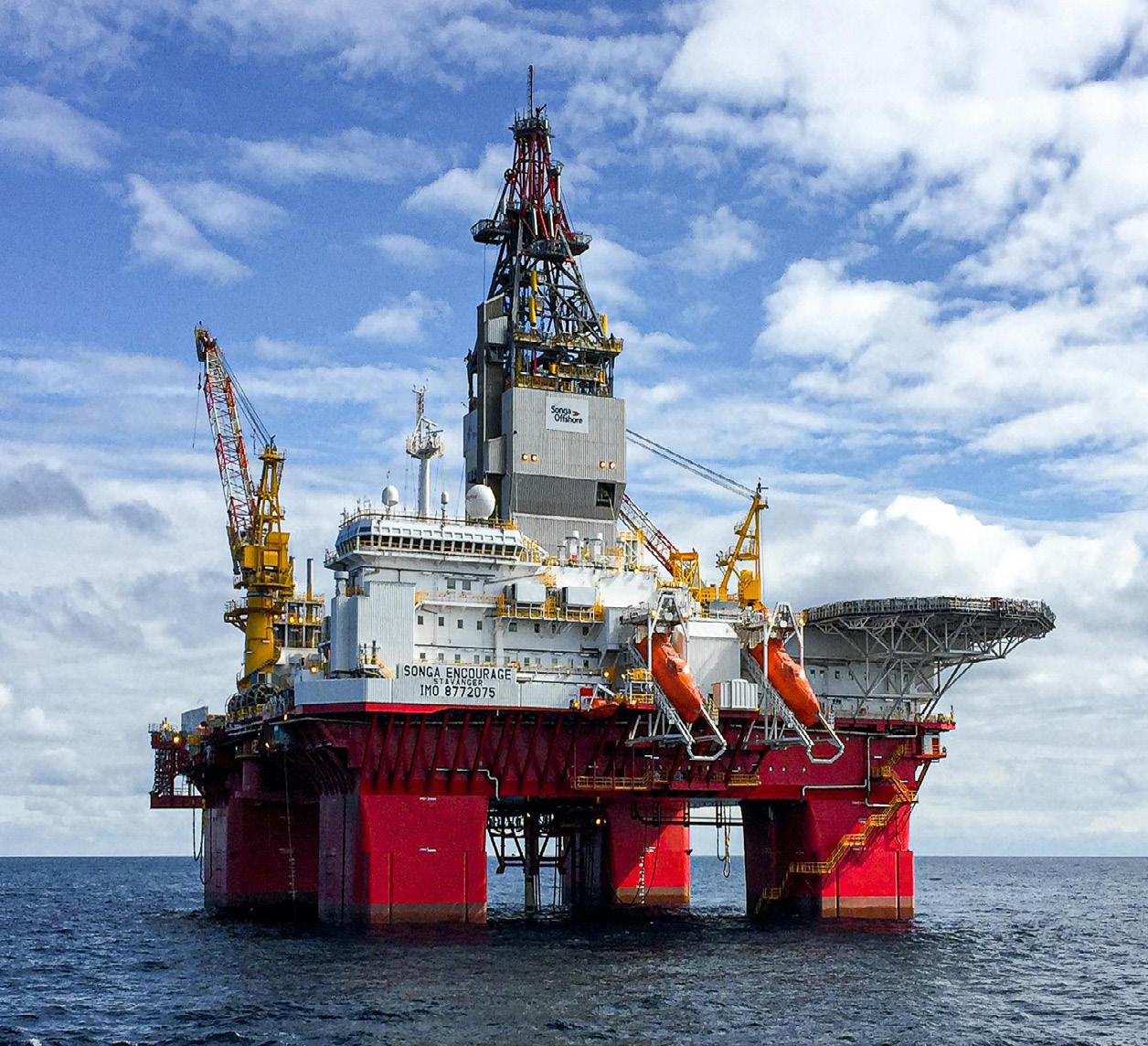

Showcasing and celebrating over 100 years of automotive history with a unique and exciting collection of vehicles, motorcycles, bicycles and memorabilia in the magnificent setting of the L’Ormarins Estate, situated in the picturesque Franschhoek Valley.
R80 adults | R60 pensioners
R60 motor club members
R40 children (3-12yrs)
Achieving sustainable development in Africa’s oil & gas sector demands collaborative action from all stakeholders
38
The top risks facing the world’s natural resources organisations
44 INVESTMENT
Multibillion-dollar opportunities in cross-border co-operation for oil and natural gas projects in southern Africa
Namibia’s energy sector needs a proactive introduction of solid local content regulations
Female leaders are transforming their respective energy industries into Africa’s most sought-after exploration hot spots
US–Africa: Strengthening security, supporting development and reducing conflict amid geopolitical competition
68
How the Namibian government is ensuring an integrated energy mix and sending a strong signal of confidence to global investors


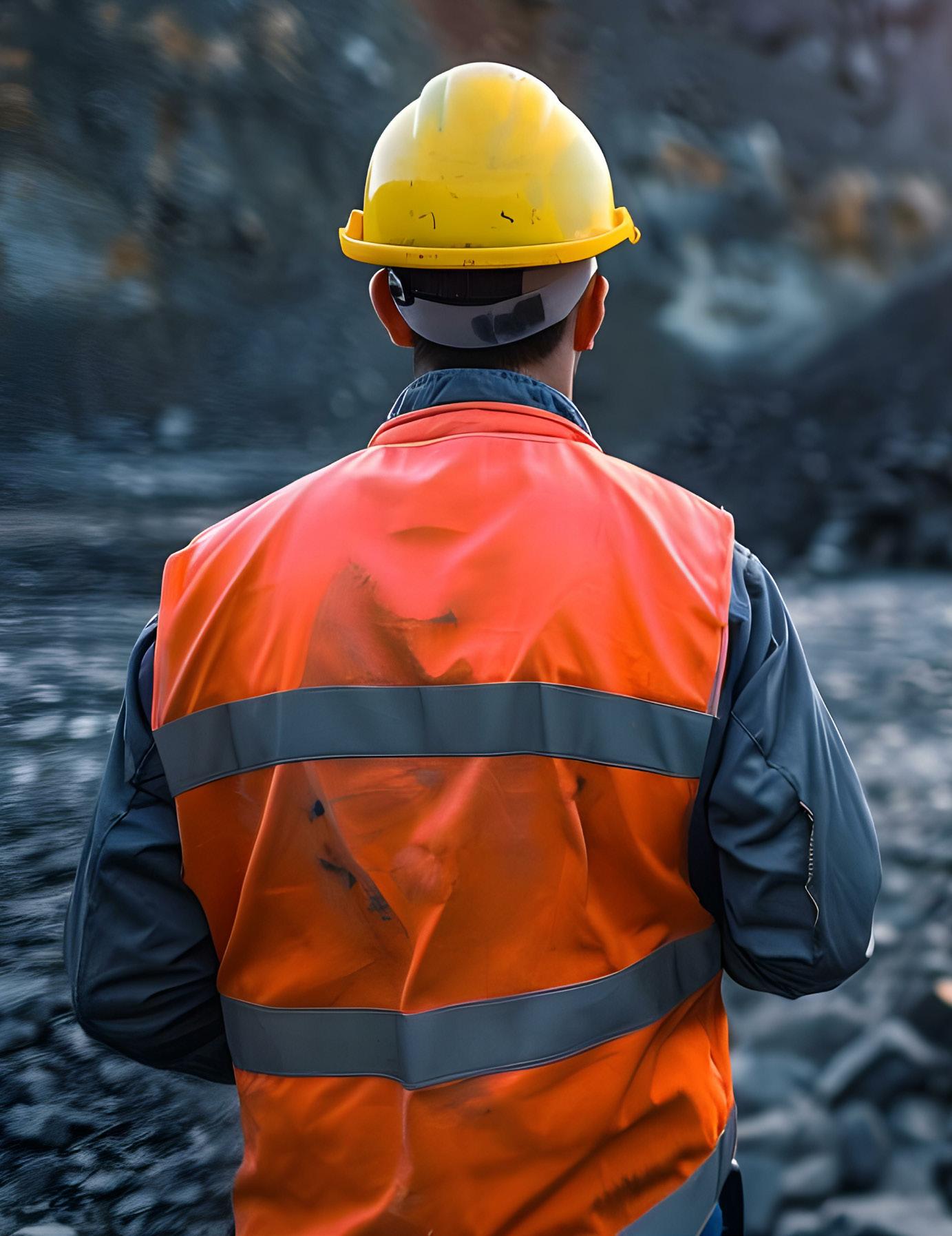


It is important we all fully understand the immense benefits of oil, and the petroleum products derived from it
80 gas
South Africa needs to use its abundant domestic natural gas to fix its energy crisis today
86 social development
#MiningMatters: The Minerals Council
South Africa highlights the relevance and impact of mining
92
An African Development Bank project returns thousands of children from cobalt mines to schools in the Democratic Republic of the Congo


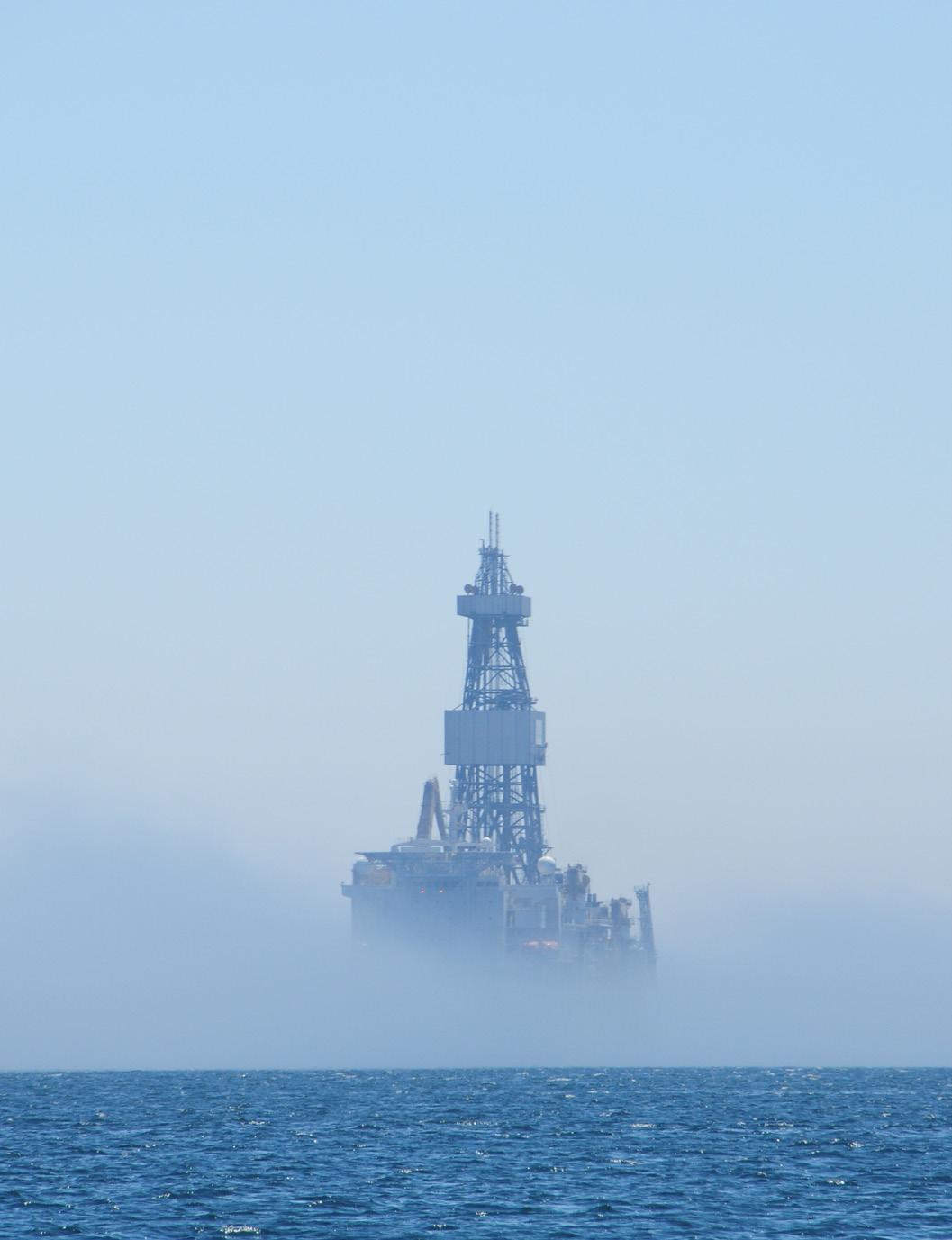




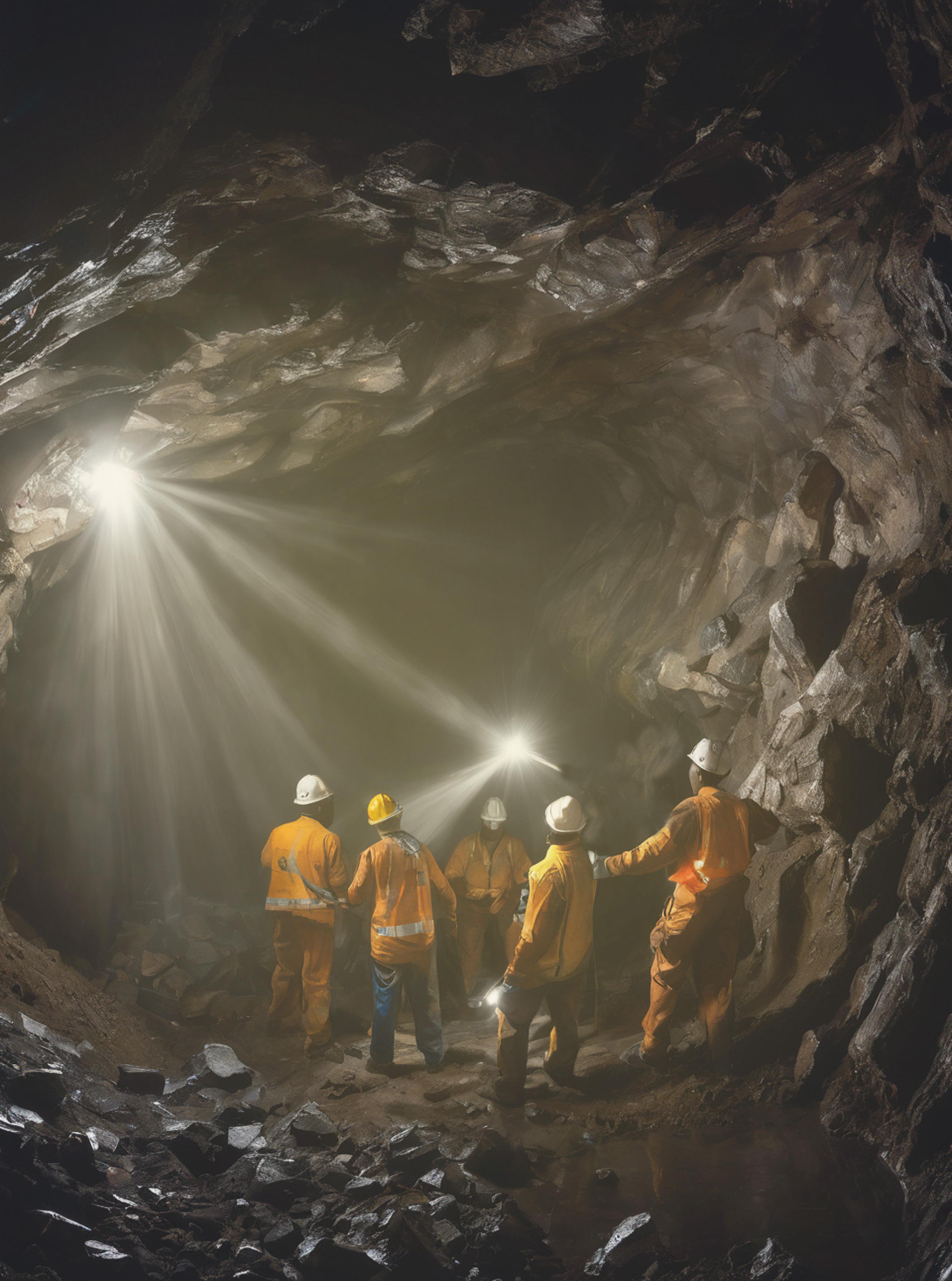

Iot’s that time of year when once again the junior miners gather to rub shoulders, and I’d like to salute every one of them. Often, they represent the bold frontier of the mining industry, embodying the spirit of innovation, risk-taking and entrepreneurialism.


These companies, typically smaller in scale and exploration-focused, play a crucial role in the diversification and growth of the mining sector. While they face unique challenges and uncertainties, junior miners have the potential to unlock new mineral discoveries, drive economic development and create value for stakeholders.


mining news
PUBLISHER: Donovan Abrahams

EDITOR: Ashley van Schalkwyk (ashley@avengmedia.co.za)
COPY EDITOR (PRINT & ONLINE): Tania Griffin
DESIGN: Shadon Carsten
EDITORIAL SOURCES: NJ Ayuk, HE Haitham Al Gais, Labi Ogunbiyi, African Development Bank, Energy Capital & Power, Aon South Africa, Minerals Council SA
IMAGES: Adobe Stock, Pexels, Freepik
PROJECT MANAGER: Viwe Ncapai
However, the journey of junior miners is not without its obstacles. They face myriad challenges including access to financing, regulatory hurdles and market volatility. Securing investment for exploration and development projects can be particularly challenging, as investors may perceive junior mining ventures as high-risk endeavours.
Despite these challenges, the junior mining sector continues to thrive, fuelled by a relentless spirit of innovation and resilience.
Looking ahead, the future of the junior mining sector in South Africa is brimming with promise and potential. As the global demand for minerals continues to rise—driven by population growth, urbanisation and technological advancements— junior miners are well-positioned to capitalise on emerging opportunities.
By fostering a supportive ecosystem that encourages investment, innovation and collaboration, South Africa can unlock the full potential of its junior mining sector and pave the way for sustainable growth and prosperity. This is precisely why events such as the Junior Indaba are so imperative: The indaba is a superb platform for incisive, informative and frank discussions tackling the challenges of, and opportunities for, junior mining and exploration in South Africa and elsewhere in Africa.
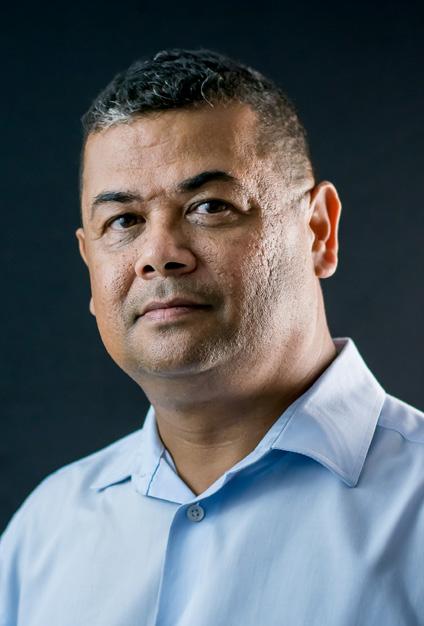
ADVERTISING EXECUTIVES: Andre Evans, Kim Jenneker, Reginald Motsoahae Mellouise Thomas, Lunga Ziwele,
ONLINE CO-ORDINATORS: Majdah Rogers, Ashley van Schalkwyk, Tharwuah Slemang
IT & SOCIAL MEDIA: Tharwuah Slemang
ACCOUNTS: Benita Abrahams, Bianca Alfos
HUMAN RESOURCES MANAGER: Colin Samuels
CLIENT LIAISON: Majdah Rogers
PRINTER: Novus Print
DISTRIBUTION: www.africanminingnews.co.za, www.issuu.com
DIRECTORS: Donovan Abrahams, Colin Samuels
PUBLISHED BY: Aveng Media

Boland Bank Building, 5th Floor
18 Lower Burg Street Cape Town, 8000

Tel: 021 418 3090
Fax: 021 418 3064
Email: ashley@avengmedia.co.za
Website: www.avengmedia.co.za
DISCLAIMER:
© 2024 African Mining News magazine is published by Aveng Media (Pty) Ltd. The Publisher and Editor are not responsible for any unsolicited material. All information correct at time of print.
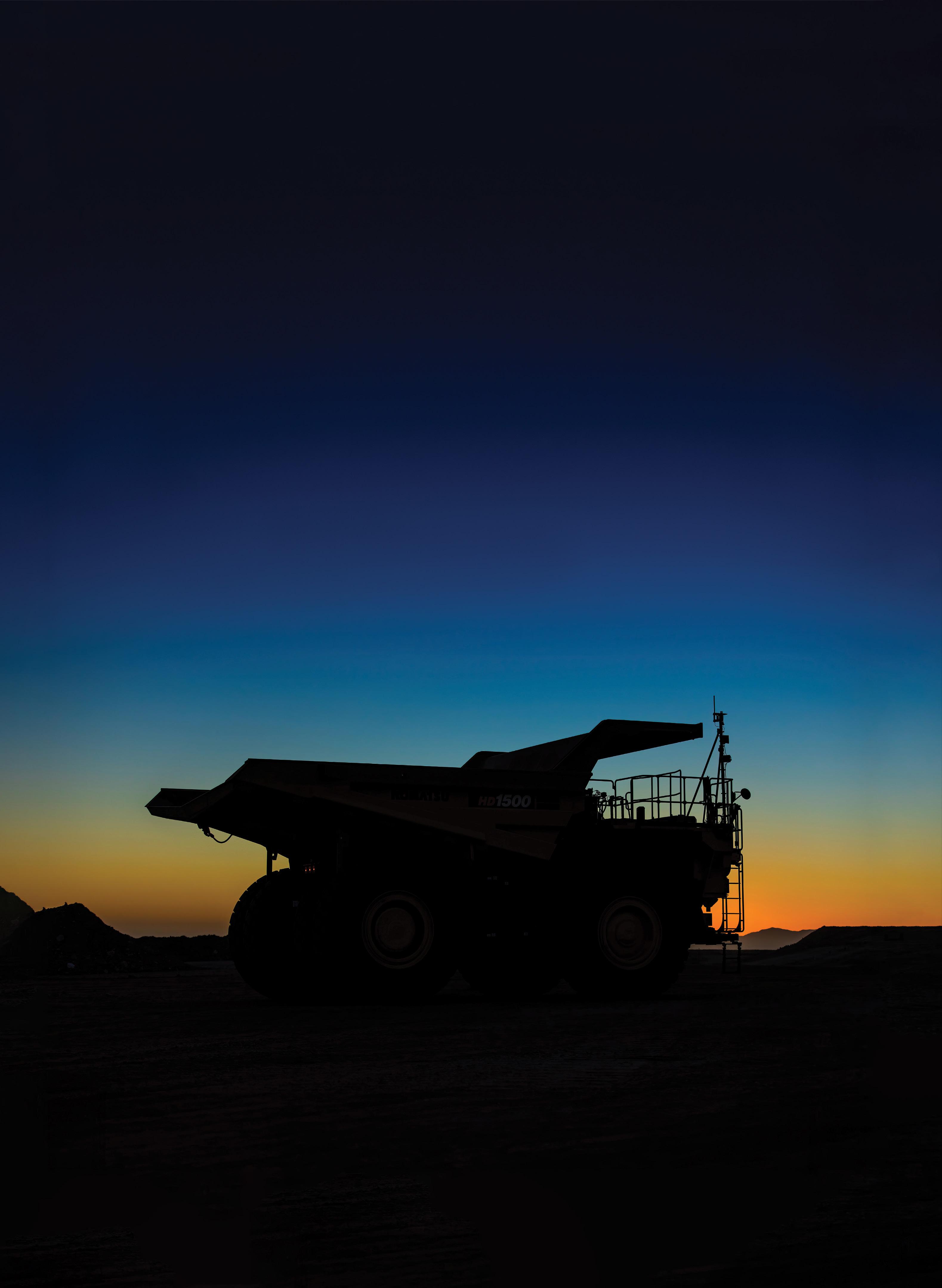
The Country Club Johannesburg, Auckland Park, South Africa www.juniorindaba.com
The Junior Indaba is a popular meeting place for junior miners and is enjoyed by all for its incisive, informative and frank discussions tackling the challenges and opportunities for exploration and development for junior mining companies in South Africa and elsewhere on the continent.
19 & 20 JUNE
Swakopmund Hotel & Entertainment Centre, Namibia www.saimm.co.za
.This conference will focus on the global impact of African rare earth deposits and their role in the sustainable supply of these critical materials. It will discuss in detail the latest developments in the industry, and explore the opportunities and challenges to the optimisation of the African rare earth value chain. There will be focus on the production of rare earth metals, with specific emphasis on geology, exploration, beneficiation, separation and refining, applications, policies, environmental issues, new technological developments, market opportunities, and the future outlook of the industry.
Africa’s only event dedicated to the water resources sector discussing all aspects of mine water management, treatment, closure, water characterisation and tailings management. This exclusive event will shine a light on the latest policies, research, best practices and developments in water digitalisation that embodies the circular economy, sustainability and innovations for the efficient water usage in the resources sector.
18 & 19 JULY
12 TO 14 JUNE
Grand Karavia Hotel, Lubumbashi, DRC wearevuka.com/mining/drcmining-week Dakar Expo Center, Senegal lpgexpo.com.sg
A premier event that stands at the forefront of shaping the burgeoning liquefied petroleum gas (LPG) market in the West Africa region. In the current landscape, West Africa has emerged as one of Africa’s fastest growing LPG markets, with an impressive annual consumption of nearly 2.9 million tonnes. The expo is a pivotal platform for leaders, industry experts and government representatives in the LPG sector to forge valuable connections, exchange groundbreaking ideas and showcase their latest products and services.
DRC Mining Week stands as the central hub where prominent mining entities gather to cultivate opportunities. This event holds widespread recognition as the foremost business gathering of the year. It serves as the meeting point for industry leaders to exchange innovative ideas and forge business alliances that drive innovation and new prospects in the country.
6 & 7 AUGUST
The Arena, Enmotweni Casino, Mbombela, Mpumalanga, South Africa www.saimm.co.za
The aim of this conference is to provide the opportunity for thought leaders in the global battery value chain to exchange ideas on recent developments in the fields of: materials and high-purity intermediates for battery components; flow-battery electrolytes; processes for the recycling of batteries; market outlook and legislative implications; new projects and entrepreneurship in the battery industry, among others.
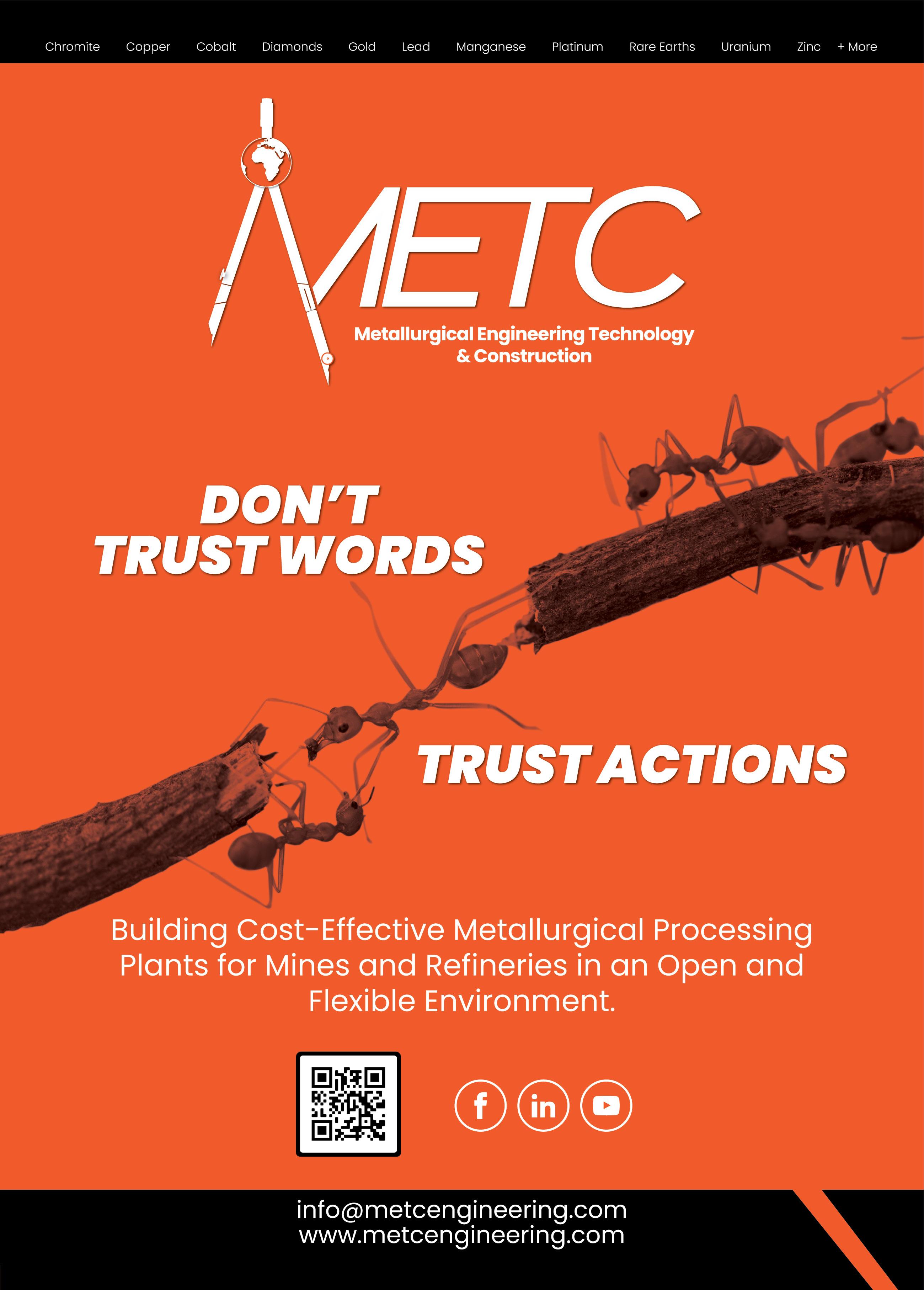


MetSoP aims to become the go-to provider for innovative solutions in the mining industry, A leader in flotation reagents and mineral processing
In the realm of mining, where precision meets profitability, MetSoP Pty Ltd emerges as a trailblazer, pushing the boundaries of conventional practices through innovative solutions.
Established in 2019 by Ipfi Manenzhe and Marcus Manyumwa, visionaries with a background in metallurgy, MetSoP swiftly garnered recognition as a leader in flotation reagents and mineral processing consultancy. With a steadfast commitment to excellence and a culture of continuous innovation, the company has redefined standards in the mining industry.
At the core of MetSoP's inception lies a visionary goal: to revolutionise the mining sector through the development of groundbreaking flotation reagents and solutions.
Manenzhe brings to the table a wealth of expertise. His vision is to address industry challenges headon and introduce transformative technologies that optimise mineral recovery and processing efficiency.
He says, “Our primary goal at MetSoP is to continue leading the way in the development of cutting-edge flotation reagents
that optimise mineral recovery and processing efficiency for our clients. We aim to expand our market presence globally, establishing MetSoP as the go-to provider for innovative solutions in the mining industry.”
Manenzhe's journey as the operations director of MetSoP has been marked by resilience, strategic vision and unwavering dedication. From the outset, he immersed himself in every facet of the company's operations, from research and development to strategic planning and market expansion. His leadership ethos fosters a culture of innovation and excellence within the organisation, propelling MetSoP to the forefront of the industry.
“As the director of MetSoP, my journey has been both challenging and rewarding. I have been deeply involved in every aspect of the company's operations, from product development to strategic planning and business expansion. My focus has always been on fostering a culture of innovation and excellence within the organisation, driving us to continuously push the boundaries of what is possible in the field of flotation reagents,” he says. “We established MetSoP in 2019 with a vision to revolutionise the mining industry. Since then, we have
METSOP'S dedication to delivering value-added solutions underscores its status as an industry leader.
experienced significant growth and success, driven by our commitment to excellence and continuous innovation.”
MetSoP's primary objective is clear: to lead the charge in developing cutting-edge flotation reagents that redefine industry standards. The company's commitment extends beyond mere profitability; it aims to optimise mineral recovery and processing efficiency for clients worldwide.
In recent years, MetSoP has achieved significant milestones including the successful launch of several groundbreaking products. These innovations have garnered widespread acclaim from clients, affirming MetSoP's position as an industry leader. Furthermore, the company's strategic expansion of its distribution network has facilitated market penetration and enhanced customer outreach.
Currently, MetSoP remains focused on refining existing products and spearheading new research initiatives to address evolving industry challenges. The company's research and development team is at the forefront of exploring novel approaches to enhance mineral flotation processes and streamline operational efficiency. Moreover, initiatives such as the development of environmentally sustainable flotation reagents underscore MetSoP's commitment to innovation and sustainability.
“Like any industry, the mining sector presents its share of challenges including fluctuating

MetSoP CEO Ipfi Manenzhe: "We established MetSoP in 2019 with a vision to revolutionise the mining industry."
Manenzhe's journey as CEO of MetSoP has been marked by resilience, strategic vision and unwavering dedication.
commodity prices, regulatory changes and environmental concerns. However, we are confident in our ability to adapt and thrive in a dynamic business environment by staying agile, investing in research and development, and maintaining close partnerships with our clients,” says Manenzhe.
“We have several exciting projects in the pipeline, including the development of environmentally sustainable flotation reagents and the integration of advanced technologies such as artificial intelligence and machine learning into our product development process. These initiatives align with our commitment to innovation and sustainability.”
MetSoP is committed to promoting diversity and empowerment within its workforce and supply chain. The company actively pursues BBBEE (Broad-Based Black Economic Empowerment) objectives through targeted recruitment, training programmes and collaboration with BBBEE-compliant vendors. By prioritising inclusivity and community development, MetSoP aims to drive meaningful change and foster a more equitable society—supporting community development projects to empower marginalised groups.
Despite industry challenges, MetSoP remains resilient and adaptable. The company's ability to navigate obstacles is attributed
to its agility, strategic foresight and close collaboration with clients. By embracing innovation and maintaining a customercentric approach, it is wellequipped to overcome challenges and seize opportunities.
MetSoP's success is rooted in its unwavering commitment to excellence, quality and customer satisfaction. By prioritising innovation and staying abreast of industry trends, the company has solidified its reputation as a trusted partner in the mining community. Its dedication to delivering value-added solutions underscores its status as an industry leader.
“Looking ahead, we envision continued growth and expansion for MetSoP, both domestically and regionally. We will remain focused on delivering value to our clients through innovative solutions while upholding the highest standards of corporate responsibility and sustainability,” says Manenzhe.
“One change I would advocate for in the South African mining industry is greater emphasis on sustainable practices and
environmental stewardship. By adopting cleaner technologies, minimising resource wastage and prioritising ecosystem conservation, we can ensure the long-term viability of the mining sector while minimising its impact on the environment and surrounding communities. MetSoP is committed to driving positive change and contributing to a more sustainable future.”
He extends gratitude to the dedicated team at MetSoP, whose collective efforts have propelled the company to new heights of success. Together, they remain steadfast in their commitment to innovation, excellence and sustainability.
As MetSoP continues its journey of pioneering innovation in the mining industry, its vision for a brighter, more sustainable future remains unwavering.
“I would like to express my gratitude to our dedicated team at MetSoP, whose hard work and dedication have been instrumental in our success. Together, we will continue to push the boundaries of innovation and make a positive impact on the mining industry and beyond,” Manenzhe concludes.
For more information, visit metsop.com.


"I would like to express my gratitude to our dedicated team at MetSoP, whose hard work and dedication have been instrumental in our success."

Achieving sustainable development in Africa's oil & gas sector demands collaborative action from all stakeholders

The African continent stands at a pivotal juncture in the global energy sector, with abundant oil and gas reserves offering immense potential for economic growth. However, while the continent holds significant promise, navigating the upstream oil & gas sector in Africa comes with a plethora of risks and potential setbacks that demand careful consideration and strategic planning.
This is against a backdrop of cutbacks in international capital for carbon-intensive oil and gas developments and increasing competition for the same sources of capital. Innovative financing solutions are thus required to fill the void, but can only be truly successful if tailored to specific needs and adopted and respected by all stakeholders.
Nigeria, Africa’s largest oil producer, epitomises the complexities and opportunities within the continent’s energy sector. Over the past decade, the Nigerian oil & gas industry has grappled with insecurity, asset vandalism and community unrest, leading to a decline in investment. This, coupled with the need for the sanctity of contracts and a properly structured fiscal framework, has seen investment in the sector decline to about US$5 billion per annum from highs of about US$22 billion per annum in 2012.
Nigeria has an abundance of unexploited discovered natural gas (as well as significant prospective gas resources), now heralded as a ‘clean’ transition fuel amid global energy shifts. Nigeria should seek to attract significant investment during this transition era (which has also seen crude oil prices rebound) to take full advantage of this, thus retaining the value of crude oil and gas resources to enable it to position itself for its energy transition (toward net zero) agenda.
‘‘Nigeria, Africa's largest oil producer, epitomises the complexities and opportunities within the continent's energy sector.’’

A just energy transition, the paradigm that gained impetus at the December 2023 COP28 conference, is intended to decelerate financing fossil fuel developments while supporting those most vulnerable to the impacts of climate change when facilitating the transition to clean energy. This is not simply a tweak to existing systems; it is a fundamental transformation toward a cleaner, more sustainable future.
This shift is driven by environmental concerns, the changing balance of power on the global stage, and awareness that the energy-producing nations in the Global South (which produce only a fraction of global
emissions) should be given a chance to ‘catch up’ industrially, technological advancement as consumer demands.
It is estimated that Nigeria needs about US$25 billion of annual investment in the next 10 years to achieve crude oil output of three to four million barrels per day and 3bcf per day of gas production for domestic consumption (an ambition). A lack of available infrastructure, whether because of existing compromised infrastructure through age or sabotage or simply a lack of new investment, and competition for capital regionally, poses challenges that will need to be overcome to achieve this. Inadequate infrastructure


impedes the development and operation of oil and gas projects in Africa, increases project costs, delays timelines and heightens operational risks.
The new government has declared that it is ‘open for business’ and will take urgent steps toward solving the fiscal, regulatory, security and other issues discouraging investment and operations in the nation’s petroleum sector—something that is urgently required to help to push its oil and gas production to the ambitious levels being targeted.
The mechanisms are in place: The Petroleum Industry Act (PIA) has done a lot to bring an enabling framework to the industry, including by allowing the Nigerian National Petroleum Corporation and its subsidiaries to raise capital on their own balance sheets, whether by divestitures or development partnerships on their blocks (including risk service contracts, financial and technical service agreements and the likes), crude forward sales, debt or equity capital raisings etc. Still, there is a need to focus more on implementing the PIA in a manner that restores investors’ confidence and boosts oil and gas production, ultimately increasing jobs, the country’s earnings and prosperity.
While international commodity traders have increased their activity and funding of oil production in Nigeria, they rarely support the development of appraisal and near-production assets. Access to innovative capital structures for such capitalintensive projects, involving a more risk-reward approach, will be key to developing such assets, as will the deepening of regional capital markets to bolster the capital available from institutions such as the African Export-Import Bank and planned new initiatives such as the African Energy Bank.
Effectively, more ‘home-grown’
solutions will be required.
As international oil companies shift focus to deep offshore and gas-rich assets, indigenous companies and smaller operators are stepping in to fill the void. However, accessing capital remains challenging. Innovative financing models, such as the contractor risk service model, offer a promising solution. This model, which involves contractors taking financial risks and receiving payment from production, incentivises efficient asset development while mitigating risk for owners and operators.
The contractor taking such risk is effectively a co-financier of, and investor in, the development of the oil block—ensuring a service that would otherwise require immediate payment to benefit from payment from oil and gas production (therein lies the contractor risk).
The success of such models hinges on the support of all stakeholders including operators, joint venture partners, financiers, regulatory authorities and local communities. By aligning incentives and sharing risks, these partnerships can drive sustainable development and enhance investor returns.
The recent completion of the floating, storage and offloading ELI Akaso infrastructure project by the Century Group (ceslintlgroup. com)—part of an alternative crude oil evacuation system (ACOES)— facilitated by the contractor risk service model, exemplifies the potential for collaboration to unlock value and foster growth. The ACOES is being developed as a result of the need to enhance production and supply security from oil blocks in the eastern Niger Delta due to infractions and prolonged outages of the Nembe Creek Trunkline (historically one of Nigeria’s major oil transportation arteries evacuating up to 150 000
bopd of crude from the Niger Delta to the Atlantic coast for export).
The CG model is ‘Made-in-Nigeriafor-Nigeria’, but can be rolled out regionally (and globally, too) in countries where access to capital for oil and gas developments is tough. Contractors work in a vacuum, the aim of which is to optimise oil production to ensure their clients thrive so that they do, too. However, they rarely take financial and production risk executing a ‘pay-as-yougo’ model (often including mobilisation and other hefty prepayment-type fees), which can leave operators hanging where assets underperform. They also get the job done without involving themselves in the issues that may affect joint venture partner relationships.
Local and international investors including UK-listed San Leon Energy plc, World Carrier Corporation and GT Bank plc have invested heavily in Energy Link Infrastructure Limited (ELI), the sponsor of the ACOES and owner of the FSO ELI Akaso and relevant pipeline infrastructure to develop the ACOES.
With the advent of COVID-19 and a lack of production available from anchor clients, ELI needed to look for alternative sources of capital to ensure the FSO ELI Akaso is ready for operations. Without CG’s involvement in a contractor risk service model, the FSO would not be operationally ready and now established as a terminal for oil export. As the Akaso starts to take on barrels from various oil producers, the business should thrive.
CG, as an investor by the application of its contractor risk service model, should also be rewarded and feted for having stood by the business at a time when access to alternative capital was proving difficult. With the success of this approach, CG is



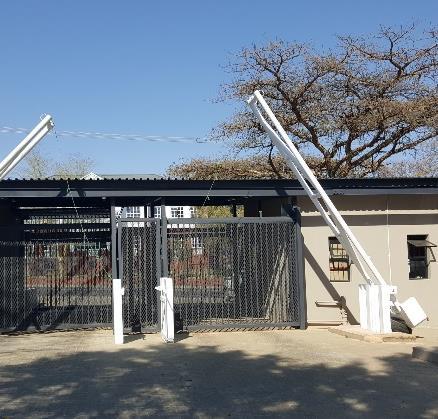
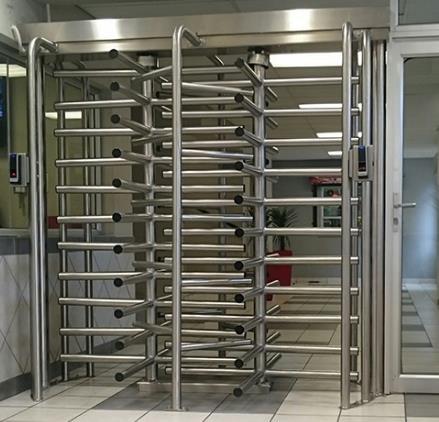
Since 1975, Flow Systems provides prestige and industrial physical barriers for Time and Attendance and Access Control.
The original manufacturer of South Africa’s access control turnstile for the Mining Industry, Flow Systems manufactures, supplies and installs:
• 150 standard models of access control and biometric turnstiles
• Speed gates
• Access control revolving doors
• Access control booths and mant raps
• Standard and Heavy Duty Vehicle access control boom barriers
• Bollards


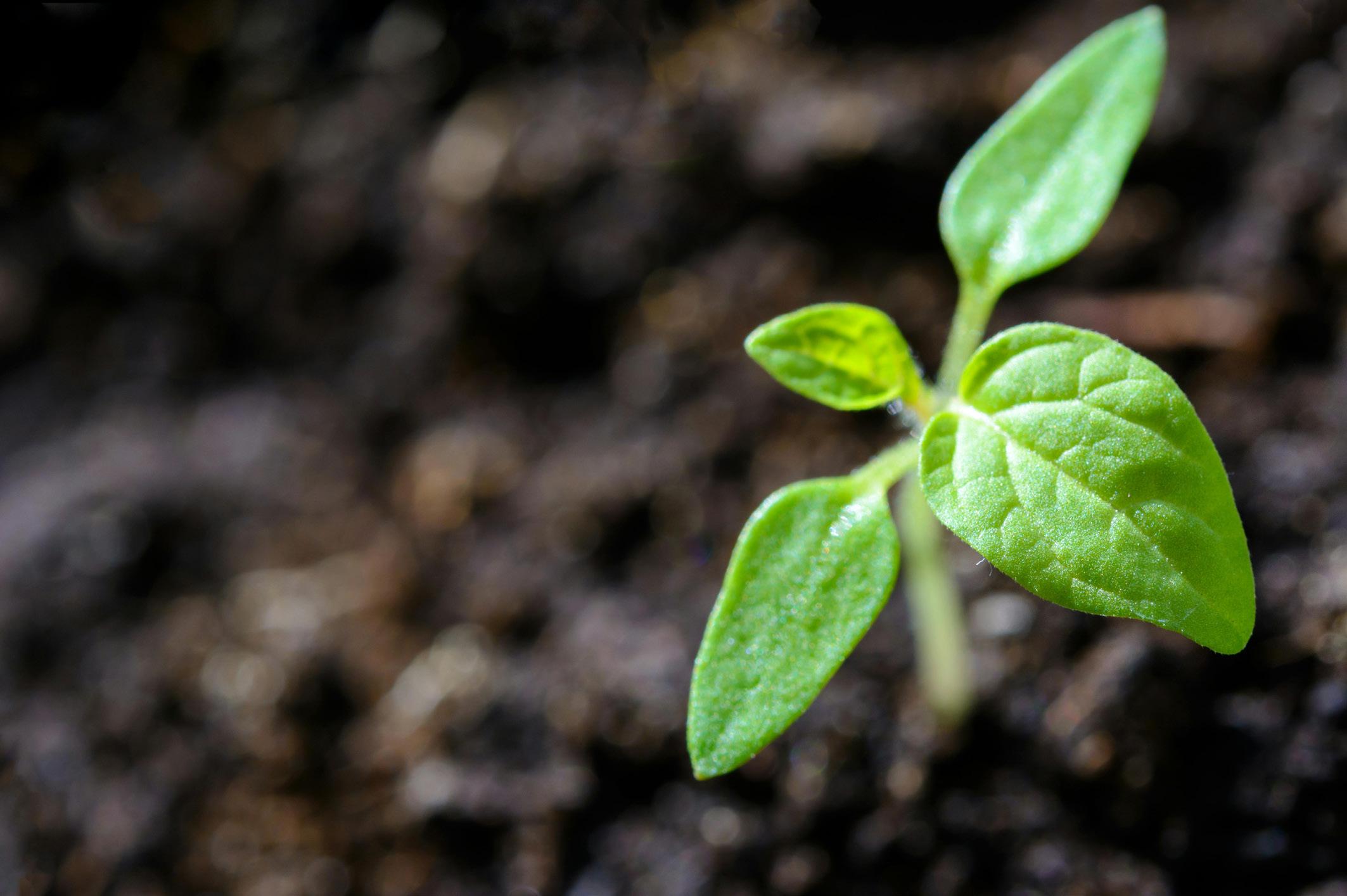
ensuring the contractor risk service model should be considered by the industry as an alternative, proactive and additional funding source for the development of energy projects.
Looking ahead, achieving sustainable development in Africa’s oil & gas sector demands collaborative action from all stakeholders. Local investors, operators and contractors play a crucial role in de-risking opportunities and crafting an appealing investment narrative that attracts capital. By leveraging local expertise and fostering partnerships, these stakeholders can unlock the sector’s full potential while mitigating risks.
Regulatory frameworks also play a pivotal role in shaping the investment landscape. It is imperative that these frameworks prioritise ease of doing business and uphold contract sanctity to instil confidence among investors.
Additionally, addressing bottlenecks to investment and exits is critical for maintaining investor interest and sustaining growth momentum.
Addressing the need to resolve the long-standing saga and delay in the consummation of the $1.3-billion ExxonMobil sale of its 40% stake in Mobil Producing Nigeria Unlimited to Seplat Nigeria Plc, the Nigerian Minister of State for Petroleum Resources, Heineken Lokpobiri, said on 16 April 2024 (shorturl.at/bwSX8): “Now that the whole world is campaigning against investment in fossil fuel, if we close this transaction and Seplat expands their investments, Bonga North, which is predicated on that resolution, comes on board, and the whole world will know that Nigeria has become a new investment destination— and that is the objective of this government.”
In charting the course for Africa’s upstream oil & gas industry,
daring innovations and strategic partnerships will be indispensable. By embracing risk and seizing opportunities, the continent can harness its energy potential to drive economic prosperity and sustainable development for generations to come.
More local investors, operators and contractors (like Century Group) will need to step up to help to de-risk opportunities and ensure the investment narrative is attractive, properly articulated and understood. With traditional international financing techniques becoming more difficult to secure for oil and gas projects, the contractor risk service model is an invaluable additional tool to ensure the continuing development of energy projects.
Labi Ogunbiyi
Ogunbiyi has been involved in the energy (including renewables), fintech and logistics sectors as an investor, strategic adviser and/or director on several boards.


Offering consistent, superior service is part of OUR commitment to OUR customers
COUNTRYWIDE GEARBOX REPAIRS SPECIALIZES IN THE REPAIR AND OVERHAULING OF UNDERGROUND FLAMEPROOF EQUIPMENT
> Flameproof tractors
> 120G Graders
> Forklifts

> Earth moving Equipment
> LHD Load haul dump machines
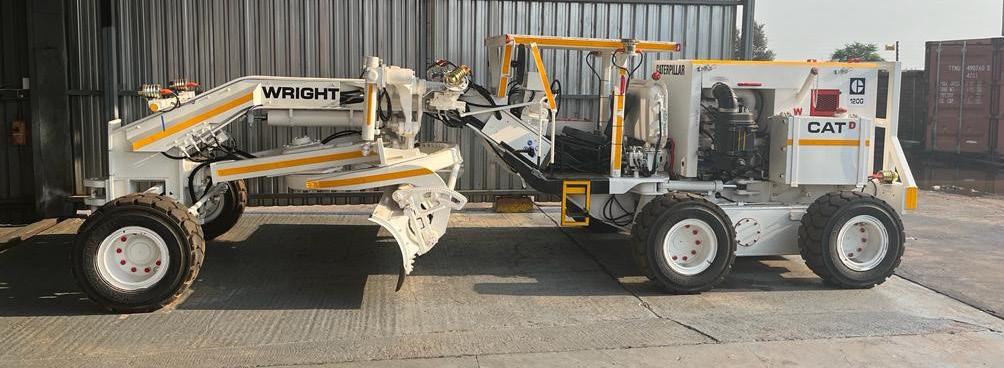

The company’s team of highly-skilled technicians are fully trained in the repair & maintenance of variety of internationally branded machines. In particular we offer expert services in the repair of components for New Holland Flameproof Tractors as well as Clark & Spicer.
COMPONENTS SUCH AS
> Gearboxes
> Transmissions
> Differentials
CONTACT US
> Trumpets
> Gear Levers
> Service Exchange units




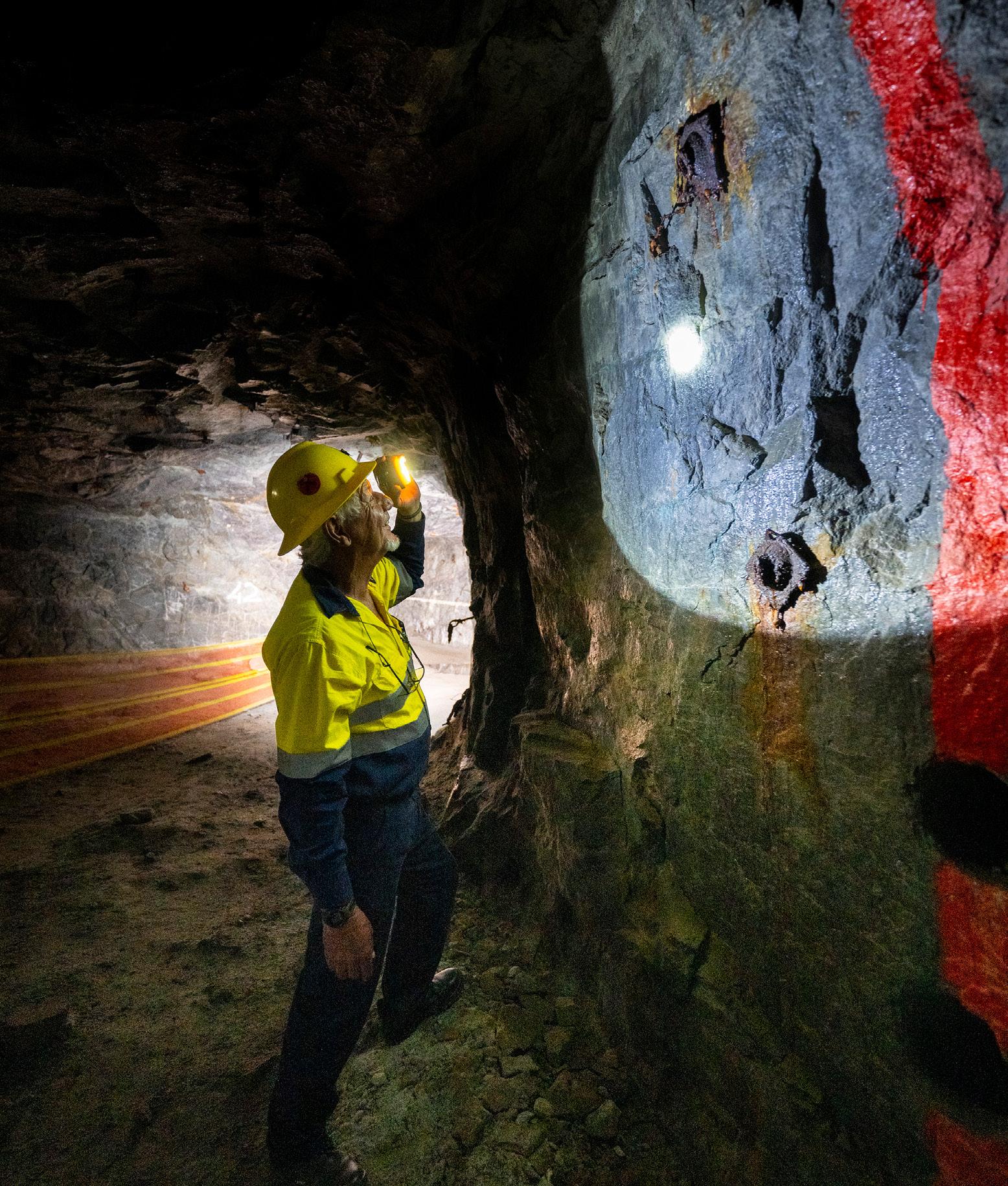
Orion Minerals Limited is a globally diversified metal explorer and developer duallisted on the Australian Securities Exchange and the Johannesburg Stock Exchange.
The company holds a portfolio of high-quality development and exploration assets in South Africa’s Northern Cape, with mineral rights including known deposits of copper, zinc, nickel, cobalt, platinum group elements, gold, silver, tungsten, rare earth elements, and lithium.
African Mining News spoke with CEO Errol Smart about the importance of critical metals such as copper, and how Orion Minerals is playing its part in supplying future-facing metals that will drive the global transition to a lower carbon future.
“Every single country has a published list of what they call 'critical metals': the key metals that allow each country’s economy to function; without receiving those metals in the quantities they expect, the economies will hit severe speed bumps,” he explains. “Each country has a slightly different list, but globally in the top three economies in the world—North America, China and Europe— there's a convergence of the key metals required to keep the global economy operating. The one metal that is common to all, no matter where you go in the world, is copper.”
Whether it is electric vehicles, generation and transmission, consumption of power and electronics, copper is the common denominator.
“If you look at human history, copper has always been a critical metal—whether in the Bronze Age or the Industrial Revolution, copper has always been there and remains a critical mineral,”
says Smart. “But the supply and demand curve at the moment very strongly shows that there isn’t sufficient copper mining being done, and there hasn’t been sufficient copper exploration. So there hasn’t even been sufficient copper discovered to meet the demand cycle as projected.”
That is one of the main reasons Orion is very involved in copper mining, and why it is excited about exploring the Northern Cape. The company sees this region as a really underserviced and underdeveloped part of the world where there could be significant copper production.
And there is no time like the present to get into the copper game. Smart notes that there isn't sufficient copper supply at the moment to keep smelters going. For instance, China has been forced to curtail some of its smelting capacity. The result is that there has been an undersupply of refined copper products—copper wire, copper tubing, copper plates etc.—and a dramatic increase in the copper price.
“People are now starting to speak of significantly higher copper prices because there is a sustained deficit opening in the market at the moment. And we certainly see potential north of $10 000 per tonne, but many of the analysts are now speaking of $15 000 a tonne being a realistic target within two years,” he adds.
Smart describes the Northern Cape as “a smorgasbord of minerals”, with an incredible endowment of critical metals.
“Because of Orion’s exploration methodologies, it is very much about accessing very large mineral rights packages; modern exploration requires you to fly airborne surveys, and to do remote sensing using satellite technology over large tracts of land. The company has ended up holding prospecting and mining

“WHETHER IN THE BRONZE AGE OR THE INDUSTRIAL REVOLUTION, COPPER HAS ALWAYS BEEN THERE AND REMAINS A CRITICAL MINERAL ”
rights over some incredible opportunities,” he explains.
These include Prieska with copper, zinc, gold and silver; Okiep with copper mineralisation and byproducts of gold and silver; Nababeep with two of South Africa's largest historic tungsten mines; and Jacomynspan with large intrusive nickel, copper, cobalt and platinum deposits. “So there is an incredible opportunity in the combined mineral rights in the Northern Cape,” he iterates.
Smart shares that when Orion Minerals came to South Africa in 2016, there were no players in the Northern Cape, so the company decided to go in, secure mineral title ownership and get all the permitting and licensing organised so that the mines could be developed; joint operations were set up, supported by central logistics and management, financial management, engineering services and the like. “And that's what Orion has been
doing the last six/seven years now and we’re achieving it. It’s actually looking very attractive for us,” he says.
Orion’s strategy is very much around having advanced staged projects that are bankable.
“Everything from our mining title holding, the way we hold our mining and prospecting rights, the way we relate to our communities, our BEE shareholders, the way we relate to suppliers and the supply chain... all that is interconnected to create a sustainable, longterm, long-life mining business of scale,” he says.
“We’ve taken the longer and more sure route to long-term sustainable production, and therefore all our projects are on the path to being permitted. Prieska is fully permitted, with our water rights, SLPs [social & labour plans] and our environmental plans in place. We haven’t built

“At Okiep, we are very close to having our water rights in place, and we expect sign-off on our tailings facility imminently. At Jacomynspan, we are revisiting the entire mining plan including looking at some very interesting modern refining technology that may be done onsite or maybe offsite. It changes the way we mine and there’s a cleaner mining footprint. This is important, as particularly Europe, North America and China are very sensitised toward environmental regulations,” explains Smart.
“Orion is very much about being bank financeable so that we can draw on debt financing in the long term, but currently there is an opportunity at the moment to get into earlier stage production using equity funders, and off-take related funding.”
To take advantage of the opportunity at Prieska, the company has, since August 2023, concluded funding arrangements with both the Industrial Development Corporation and Triple Flag, a big streaming finance corporation. By obtaining this finance, Orion has been able to embark on a trial mining exercise that can be seamlessly rolled out and continued as a small-scale mining operation. “It has been brilliant for us,” he says. “It has allowed us to prove things that
are difficult to prove just on paper. There will always be questions about something that is done purely on paper, but this has put those fears to rest.
“Additionally, it has meant we have been able to recruit an entire mining team, a full management team and a mining crew with contractors resident onsite at Prieska. All our people are permanent or on long-term contracts, giving us surety of delivery—and as a result have been able to recruit some very high skill sets. So, when we go to the bank for finance, we can show we have the team and that they are executing the plan.
“We are now in the finalisation of the trial mining phase, and will then go into project financing. We believe we can build the first processing plant and get it into production within 12 months of us having the money in our hands,” adds Smart.
It is expected that Orion will comfortably achieve 30 000 tonnes per annum of copper production, which is the equivalent of what the old Prieska and Okiep were doing. Additionally, Prieska produces about 60 000 tonnes per annum of zinc. At current prices, that is roughly the equivalent of 16 000 or 17 000 tonnes of copper.
According to Smart, Orion is also working on innovative and exciting metal vapour refining
technology for Ni-Cu-CoPGE at Jacomynspan. “These nickel, copper, cobalt, platinum projects are very interesting. There are a number of them around the world and they tend to be relatively grade, so it’s a very unfair world when trying to mine these deposits, as you only manage to achieve about 75% to 80% metallurgical recovery to concentrate. Refinery smelters will only pay you around 70% of what you deliver in concentrate, so effectively you’re only being paid 49% of what you mine of the nickel.
“With the copper, cobalt and platinum, you are lucky to get paid for 10% of the byproducts contained in the nickel concentrate. Many people are trying to find ways of getting the refining into the hands of the miner so that the miner can add value before disposing of the content. With the whole world of electric vehicles (EVs), in particular, and the whole clean energy transition, all this requires very clean, very highly refined metals in a different form,” he explains.
“There is a global trend at the moment where EV manufacturers—Tesla, Toyota, Hyundai, Nissan—are actually buying into mining operations to get their security of supply. This is because they need to guarantee ESG. We came across a technology and completed
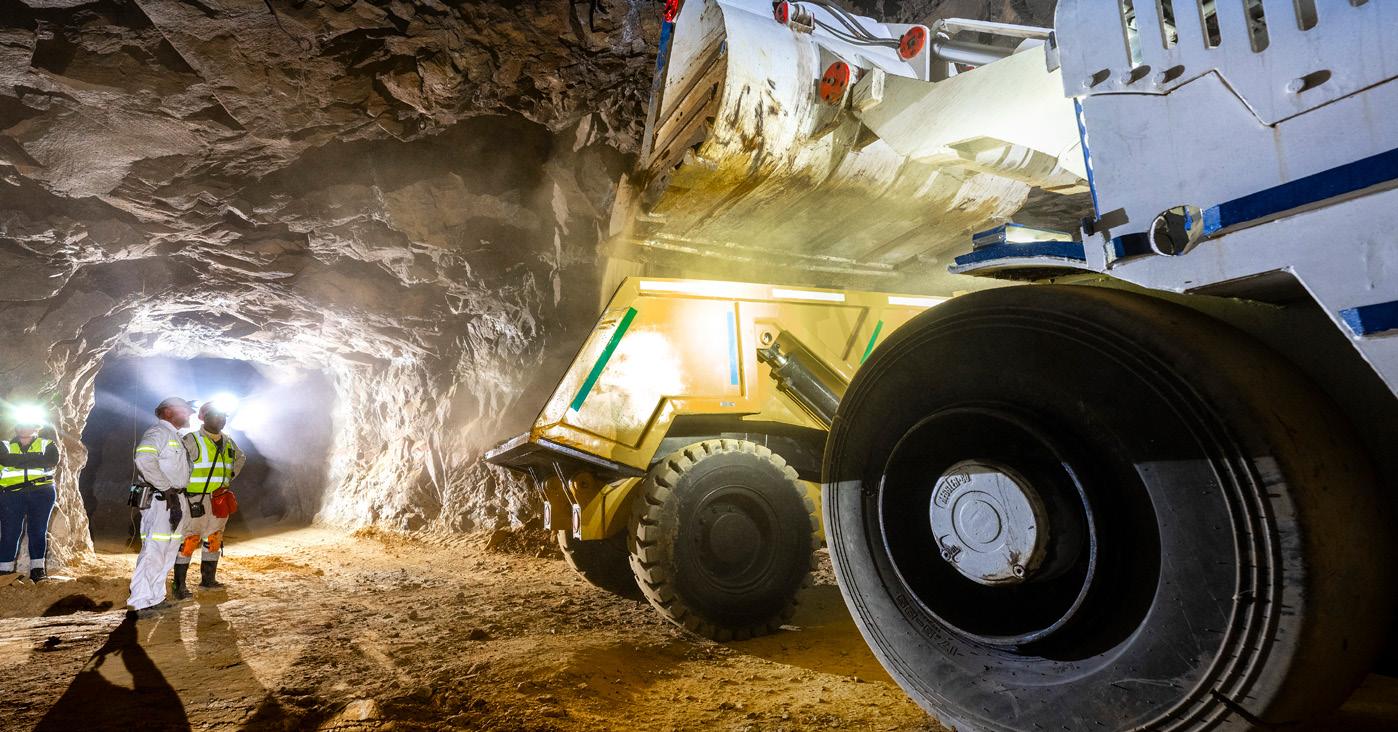
Advancing from an explorer to a developer
Prioritising near term production
Trial mining at PCZM currently underway with Cu ore being stockpiled on surface

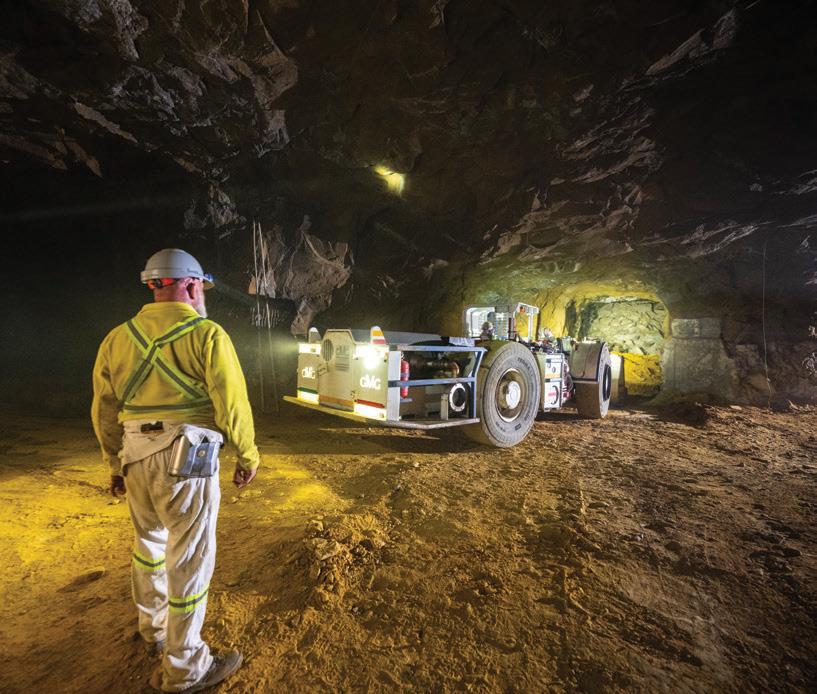
Exceptional exploration pipeline with 10 advanced projects and over 100 significant geological/ geophysical targets
Focused on critical metals for the green transition
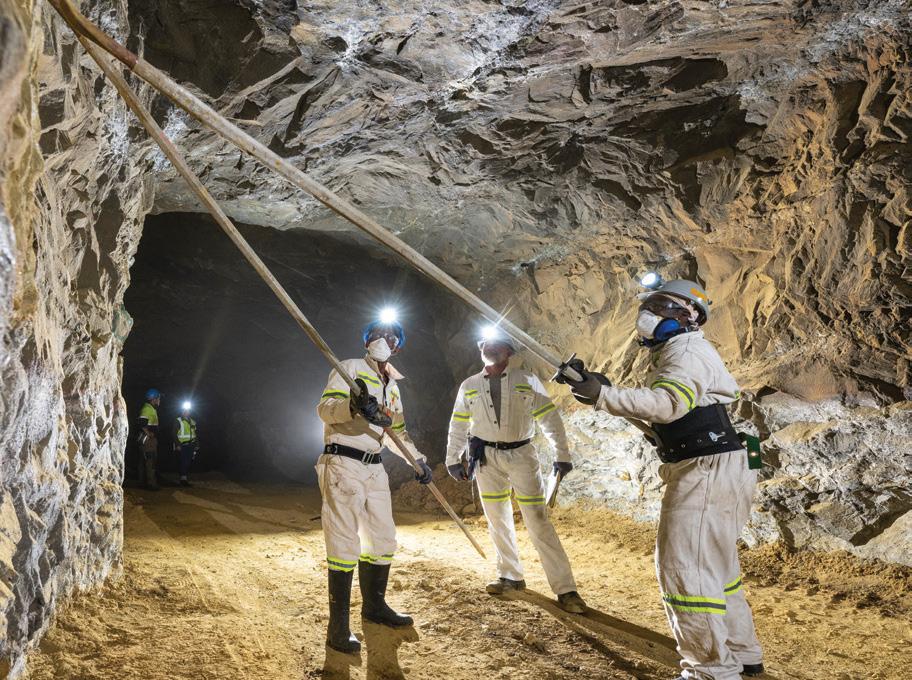
Financing and strategic partners secured
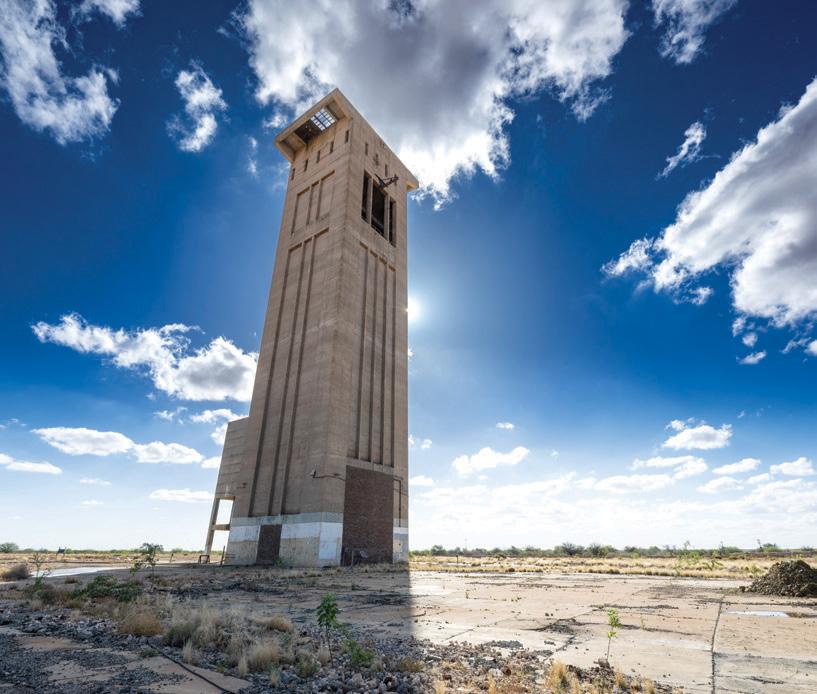
Strong ESG credentials with renewable energy power supply options
a study to see where we could participate in this.
“This technology blows chlorine vapour and carbonyl vapour through the concentrate, causing it to decompose, resulting in metals in a gas vapour form, which you can precipitate separately in a very refined manner. We’re actually getting to use a method that allows us to recover more than 90% of the concentrate as opposed to around 70% to 80%. So, we immediately recover 15% more of the metal. We’re having a lot of success with it to the point where we are in discussions with the big European EV producers.”
According to Smart, the next five years are going to be a very important period as mining moves into this high ESG transition world. “We have gone about a process for the last nine years of identifying potentially one of the most productive mineral belts in the world. We’ve consolidated holdings over this belt and are busy building the first mine. Also, we are busy doing trial mining at the moment, and believe that in the next 18 to 24 months we will become a significant metal producer in South Africa. It is a very exciting time for Orion, as we
will have met all the objectives of the future metal market and the demand for future metals,” he says.
Things are not only looking up for Orion Minerals, though; its host communities have also benefited. According to Smart, there has been visible improvement. “Prieska and Okiep are two different communities, as is Jacomynspan. Okiep is a long-established mining community with a tradition of mining, so there is a large skill set available. Prieska is an agricultural community, so there’s been no mining. There are no mines within 300km.
“At Prieska, we gave the community an undertaking of 50% community employment—we are currently running at 55%. At the moment we have about 170 people on site, 55% are local or host community. Of our approximately 20 Orion employees, it is 75% host community. One of the key things that we have done with all contractors is that we have made it a condition that they also recruit and train locally. So, of the 150 contractors that we have operating, 50% of them are locals from the host community. This has kept the money in the
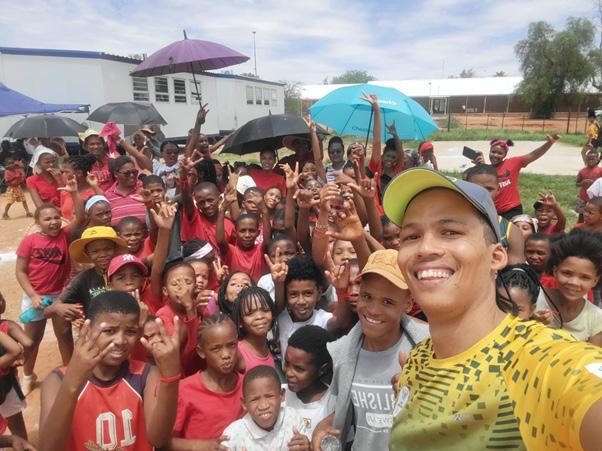
communities, and thereby created a secondary economy. People are taking their salaries home and buying their groceries at the local grocer; they are paying school fees to the local school; supporting the local doctors and clinics.
“We employ many of the older, close-to-retirement miners to train the youngsters to become the next generation of skilled operators. We also send people to the Murray & Roberts Training Centre in Gauteng where they complete a formal accredited course,” he adds.
While things are looking rosy for Orion, Smart feels more can be done to improve South Africa’s mining industry. “I’m well known for arguing that the biggest impediment in the local mining industry is red tape. We have a slow, inefficient mineral title management system. To get a prospecting right and a mining right, and go through all the permits, you have to submit 22 related permits. It just takes too long, and it is killing South Africa’s opportunity.
“We have to cut the red tape, get the efficiencies up, and we have to have responsible, reliable, transparent ownership and management. This will allow investors to invest their money and be certain they can fund exploration to an expected outcome—and if they make a discovery, they can develop it into a mine in a reasonable time frame.
“It is not just the Department of Mineral Resources. It’s our Department of Environmental Affairs, our Department of Water, and our Department of Human Settlements. All of these are an interrelated ecosystem that has to start becoming friendly, because mining has been the history of our economy—and can be the future of our economy if allowed,” concludes Smart.
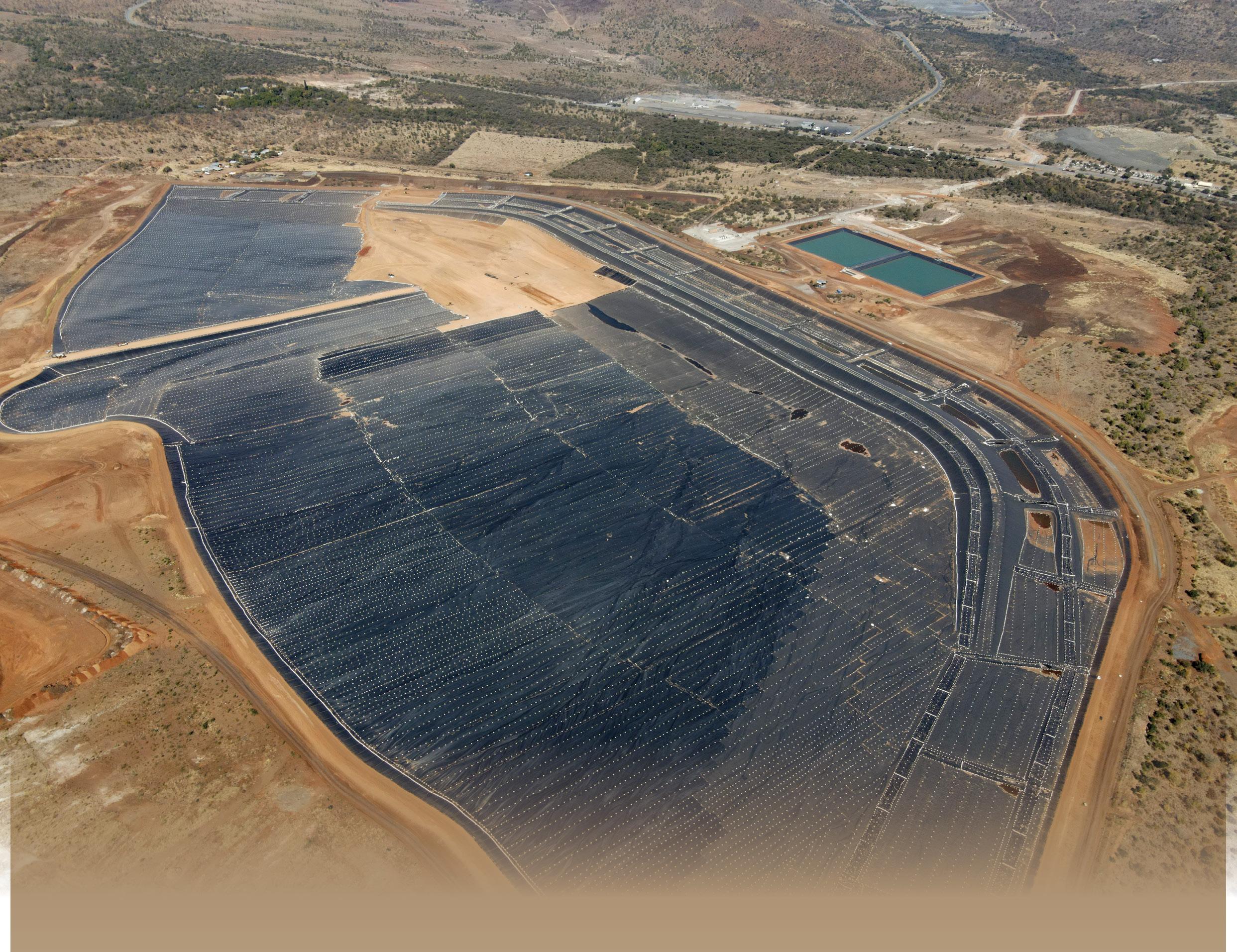







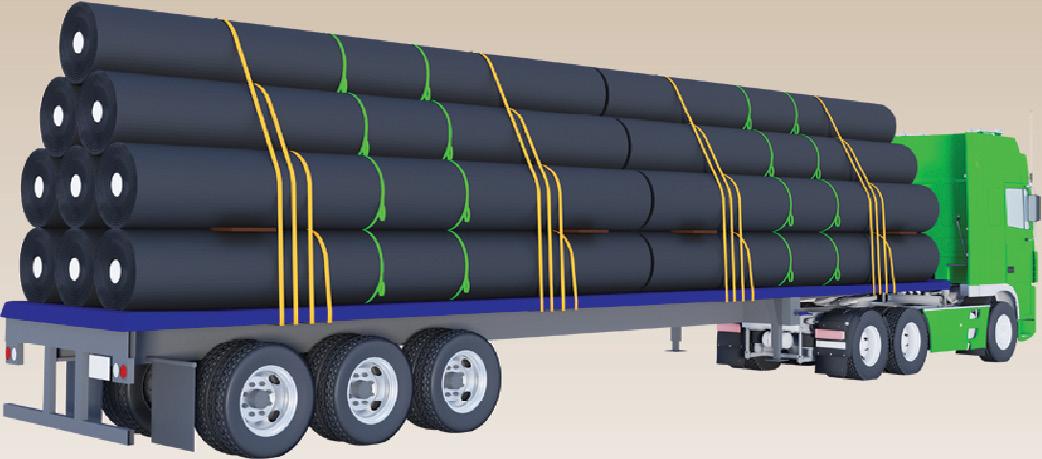

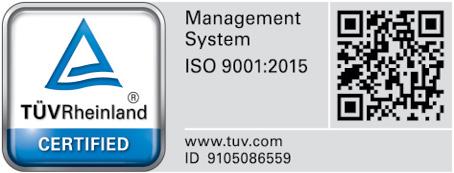
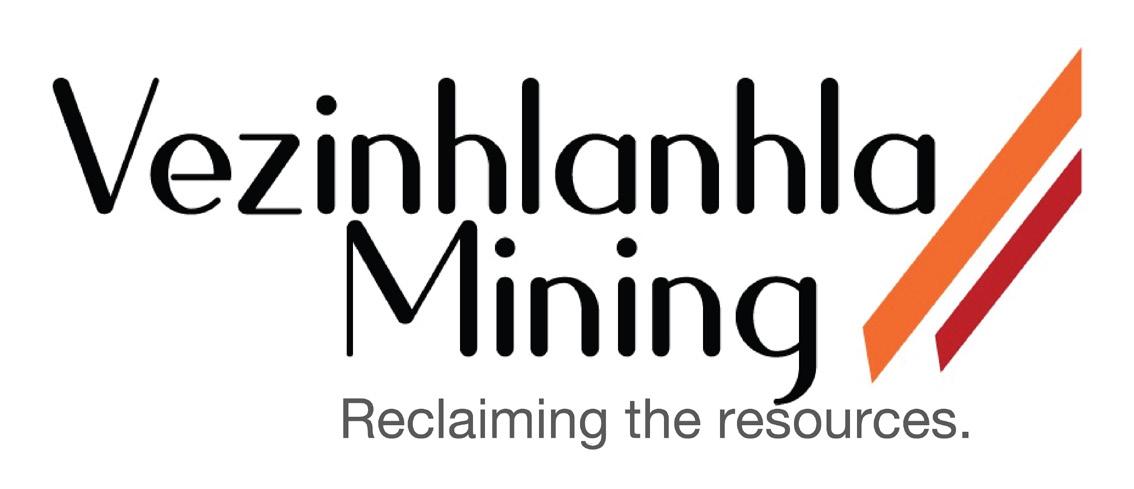

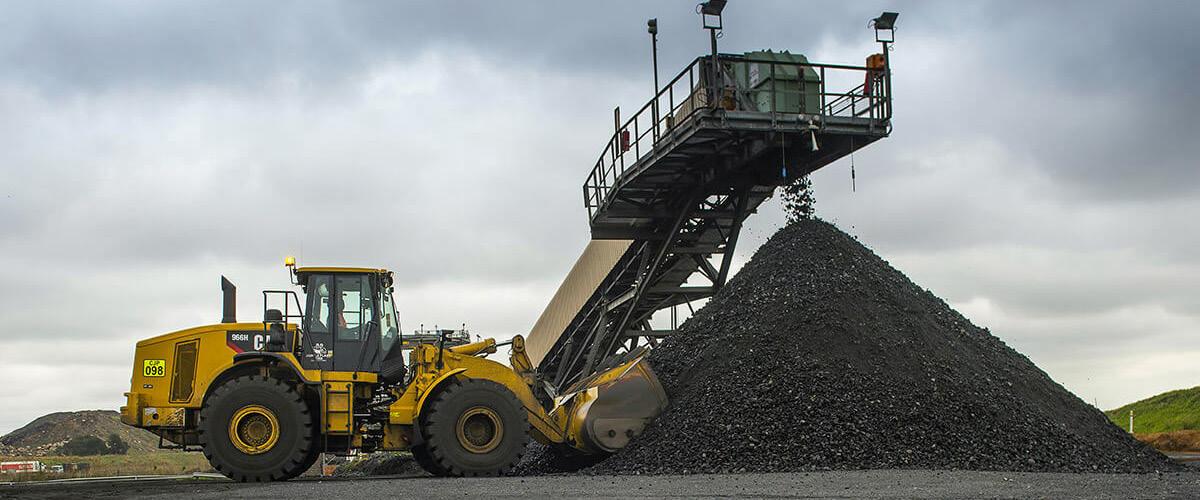
Vezinhlanhla is a 100% wholly black-owned mining contractor established by Prince Vusi, which combines leading experience with the versatility and innovation required by mining to be sustainable for the long term.
Established in 2017 as a mining contractor to service only the mining industry, today Vezinhlanhla is an empowered turnkey contractor with capabilities across the underground and opencast contract mining value chain.
We provide extensive services for coal, gold, iron ore, manganese ore, chrome ore, nickel and platinum group metals (PGMs) producers, undertaking mining operations with continuous miners, roadheaders and drill and blast applications, enabling our clients to outsource according to their unique needs.
Vezinhlanhla's commitment to safety, health, quality and environmental management standards means we work toward continuous improvements in risk management to better deliver project excellence.
Our black empowerment credentials ensure our clients benefit fully in terms of the Mining Charter requirement and the contractual conditions of key minerals purchasers.
The empowerment of women, youth and disabled persons should be achieved in all aspects of works. Vezinhlanhla has more women on board to strengthen the capacity of the business. Youth will also be employed by the company in order to pass on the skills to the next generation as Vezinhlanhla grows, with bursary schemes introduced for students to further their studies. Vezinhlanhla has developed a culture where there will be no discrimination against disabled persons, hence it will seek to find, train and employ disabled persons with potential and enthusiasm.
Vezinhlanhla's objective is to train its staff as well as community undergraduates from university and colleges, especially in engineering, safety and mining; they will be given the opportunity to further their studies in their respective fields.

Vezinhlanhla is committed to broad-based black economic empowerment, supporting the government’s initiative of transformation and affirmative action policies; it will continue to implement such projects where possible.
Vezinhlanhla has initiated projects whereby material and equipment is sourced from black SMMEs, thus speeding up the process of empowering other companies.
Vezinhlanhla strives to be a leading black-owned, diversified mining contractor in Africa while ensuring participation in the discovery, exploration and beneficiation of Africa’s mineral resources.
It is also the mission of Vezinhlanhla to develop and consolidate a diverse portfolio of high-quality assets and services for the benefit of its stakeholders.
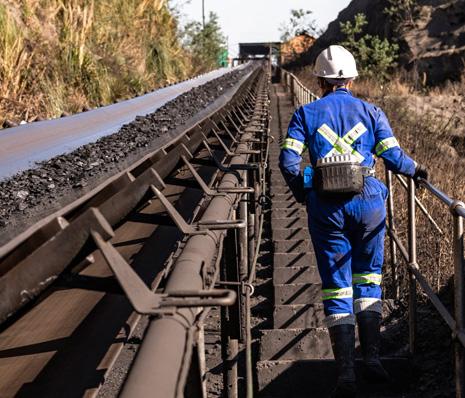

To be a leading black-owned South African company that delivers value to all its stakeholders by:
• understanding the needs of our stakeholders.
• delivering on and exceeding those needs.
• attracting and retaining the best talent.
• focusing on core assets—Pareto Principle.
• focusing on owning and operating our own assets.
• embracing diversity.
• ensuring sustainability, growth and good governance.
• Underground Mining & Opencast Mining
• Project Management & Facilities Management
• Plant Maintenance & Conveyor Maintenance
• Crushing & Screening
• Engineering & Drilling
• Bulk Material Transportation & Hauling
THE FUTURE—VEZINHLANHLA INTENDS TO:
• reinforce our position in the market as a reliable and competitive independent producer and supplier.
• grow our sales and customer base.
• acquire coal, gold, iron ore, manganese ore, chrome ore, nickel and PGM assets to develop new projects.
• pursue power generation as a key area of opportunity— a synergistic venture that is now indelibly written into our corporate objectives.
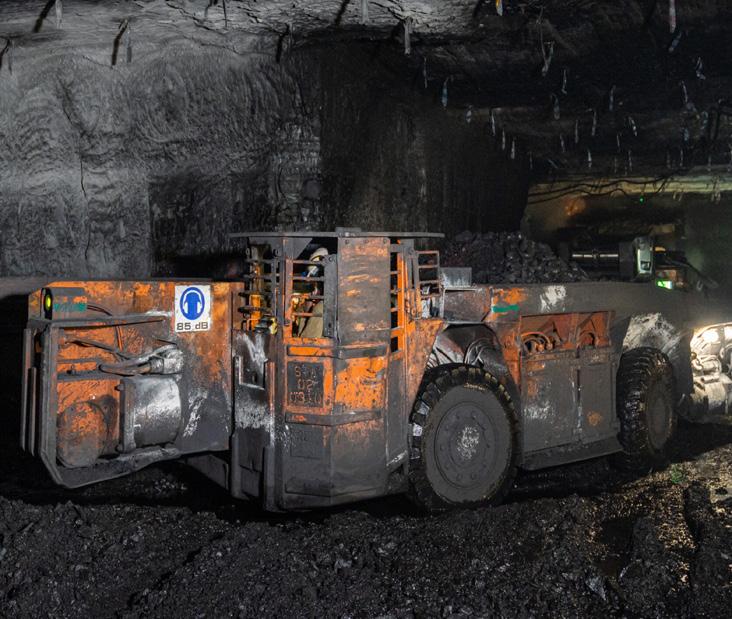

CONTACT DETAILS: info@vezinhlanhla.co.za
+27(0) 087 550 2087
vezinhlanhla.co.za
Facebook @VezinhlanhlaZA
LinkedIn @VezinhlanhlaMining
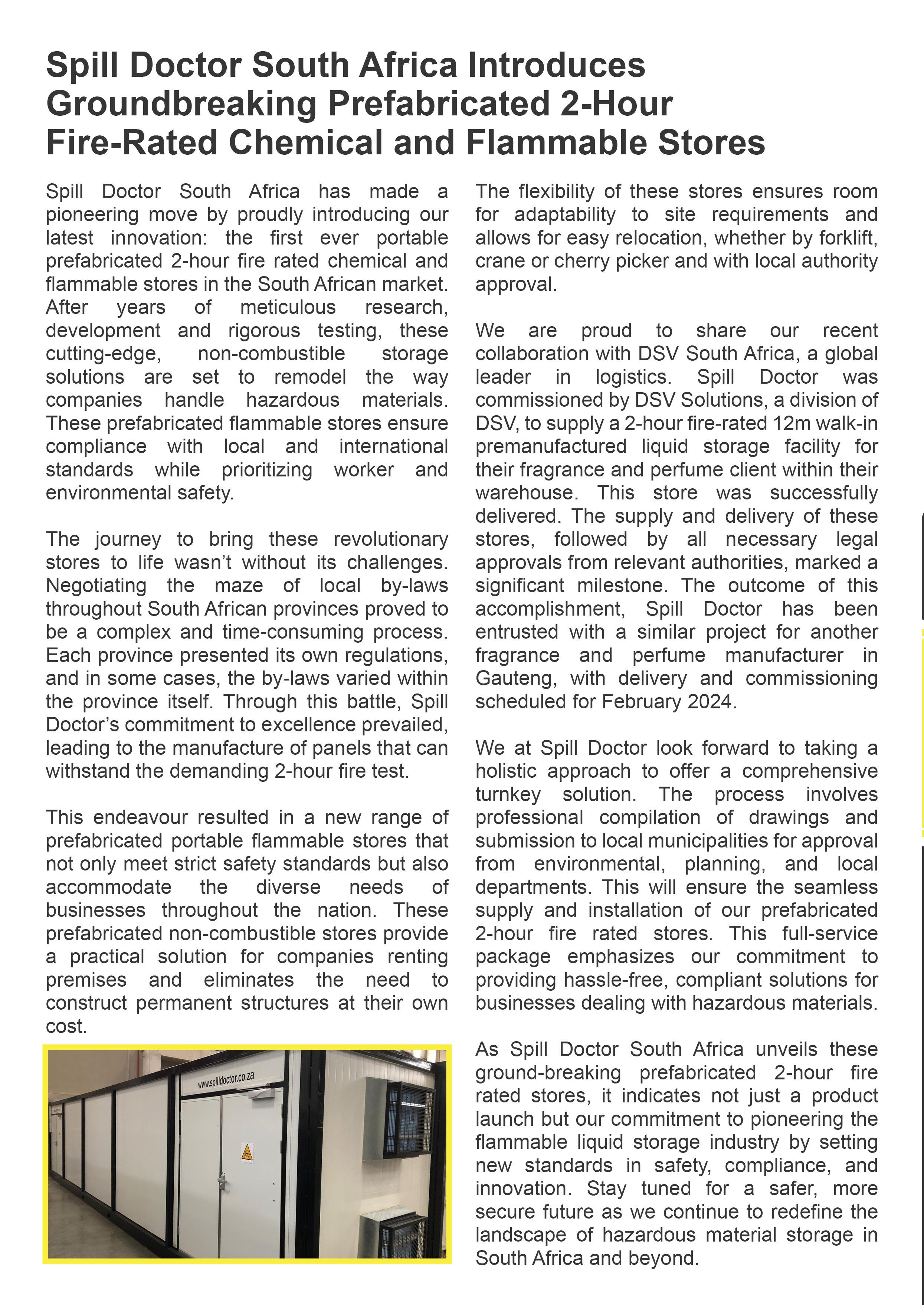

In a world where the population burgeons and the clamour for resources intensifies, the intricate dance between meeting community needs and sustaining economic growth becomes more challenging than ever. Industries dealing in natural resources—from oil and gas to renewables and mining—find themselves navigating a labyrinth of obstacles.
The spectre of material scarcity, supply chain intricacies and the relentless ebb and flow of commodity prices hang over these sectors, sending ripples across the global landscape. Geopolitical pressures and societal demands to combat climate change add weight to the industry's decisionmaking, with environmental, social and governance (ESG) considerations taking centre stage.
Amid this tumult, organisations are fervently embracing technological strides to usher in a carbonneutral era, while engaging in fierce competition to secure the talent that will drive these transformative breakthroughs, with the transition to clean energy expected to generate 10.3 million new jobs globally by 2030.

According to Jacques de Villiers, general manager of Commercial Inland at Aon South Africa, the natural resources sector is contending with myriad complex and interconnected risks based on Aon’s latest Global Risk Management Survey (t.ly/9zuCT).
“Business interruption, and regulatory or legislative changes emerged as the top two concerns. Inflation across the globe, which has pushed up asset values, exacerbates the effect of business interruption (ranked number one).
“Notably, the top two risks mirror the same top risks identified in
our 2021 survey, underscoring the substantial and interconnected nature of these risks within the natural resources industry.”
NATURAL RESOURCES INDUSTRY TOP 10 RISKS:
• Business Interruption
• Regulatory or Legislative Changes
• Commodity Price Risk or Scarcity of Materials
• Property Damage
• Cyberattack or Data Breach
• Environmental Risk
• Political Risk
• Weather and Natural Disasters
• Climate Change
• Environmental, Social & Governance (ESG) or Corporate Social Responsibility
“Our latest Climate and Catastrophe Insight Report (t.ly/0dsHX) recorded $380 billion economic losses in the last year, a staggering 22% above the 21st century average, which highlights the substantial impact that business interruption has. This becomes more evident in the energy market, where major disruptions have far-reaching consequences for the economy and the country as a whole,” says De Villiers.
The business interruption landscape is growing increasingly complex when considering factors such as:
• Regulatory changes that necessitate continual compliance measures.
• Climate-related events that cause extensive damage.
• Cyberattacks that can cause any operation to grind to a halt.
• Supply scarcity, especially on imported goods.
• Geopolitical events such as conflicts and the fact that South Africa is in an election year.
• Workforce shortages due to talent demand and skills gaps.
“While business interruption remains an ever-present concern, organisations in this sector must navigate the interconnected nature of the top 10 risks to build resilience, as many of these risks feed directly into business interruption,” explains De Villiers.
The natural resources sector’s
pronounced exposure to regulatory or legislative changes can be attributed to the industry’s current environmental impact, the global impetus toward sustainability and evolving stakeholder expectations.
Despite being a key concern for the industry, only 13% of natural resources respondents stated they had quantified
their exposure to regulatory or legislative changes.
“Compliance and regulatory costs are not a new or unforeseen burden for business. However, uncertainty about upcoming regulatory changes may affect business confidence and can have an impact on funding or capital, compliance, risk mitigation, brand or reputation, and financial standing. This is
The natural resources sector is contending with myriad complex and interconnected risks
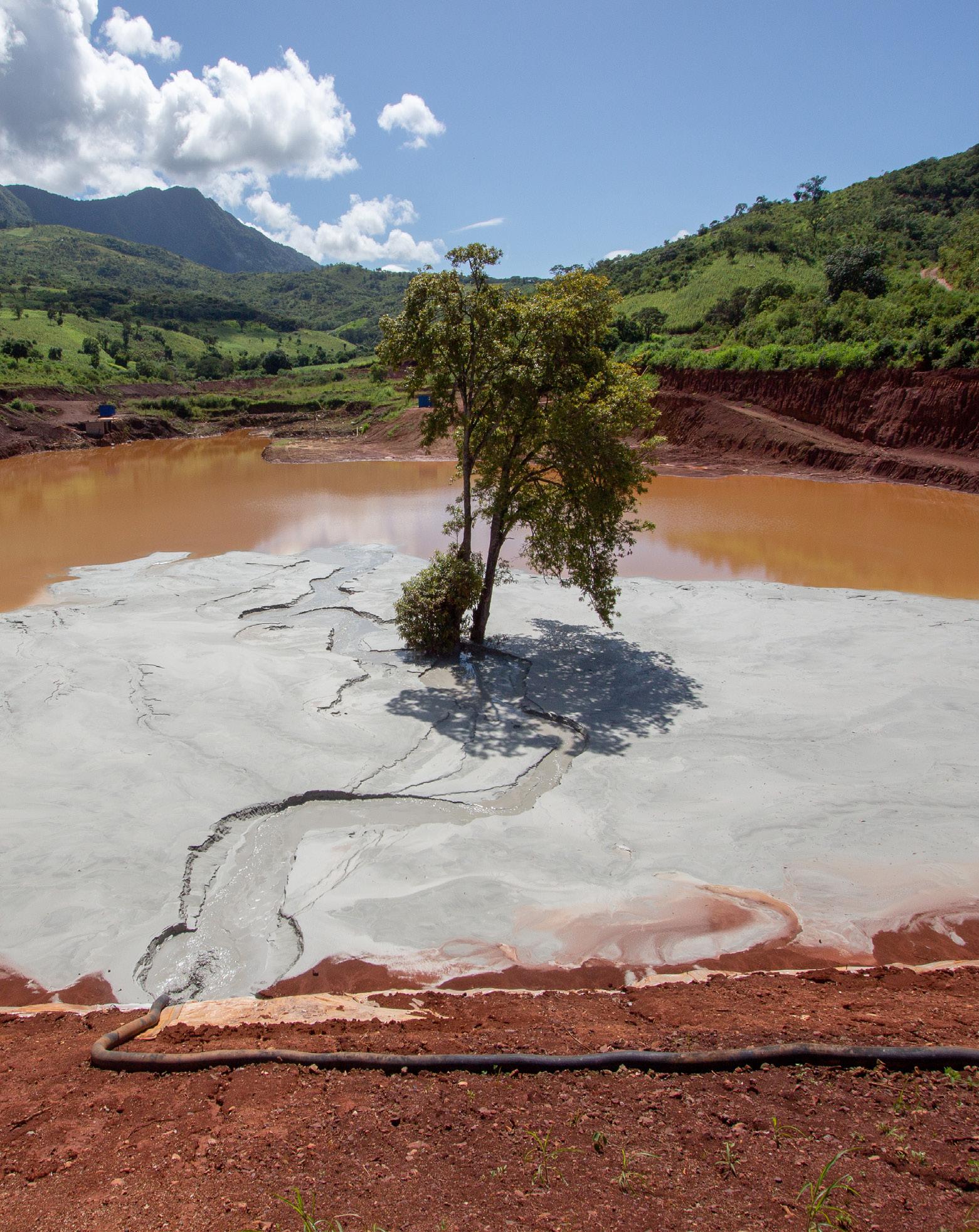
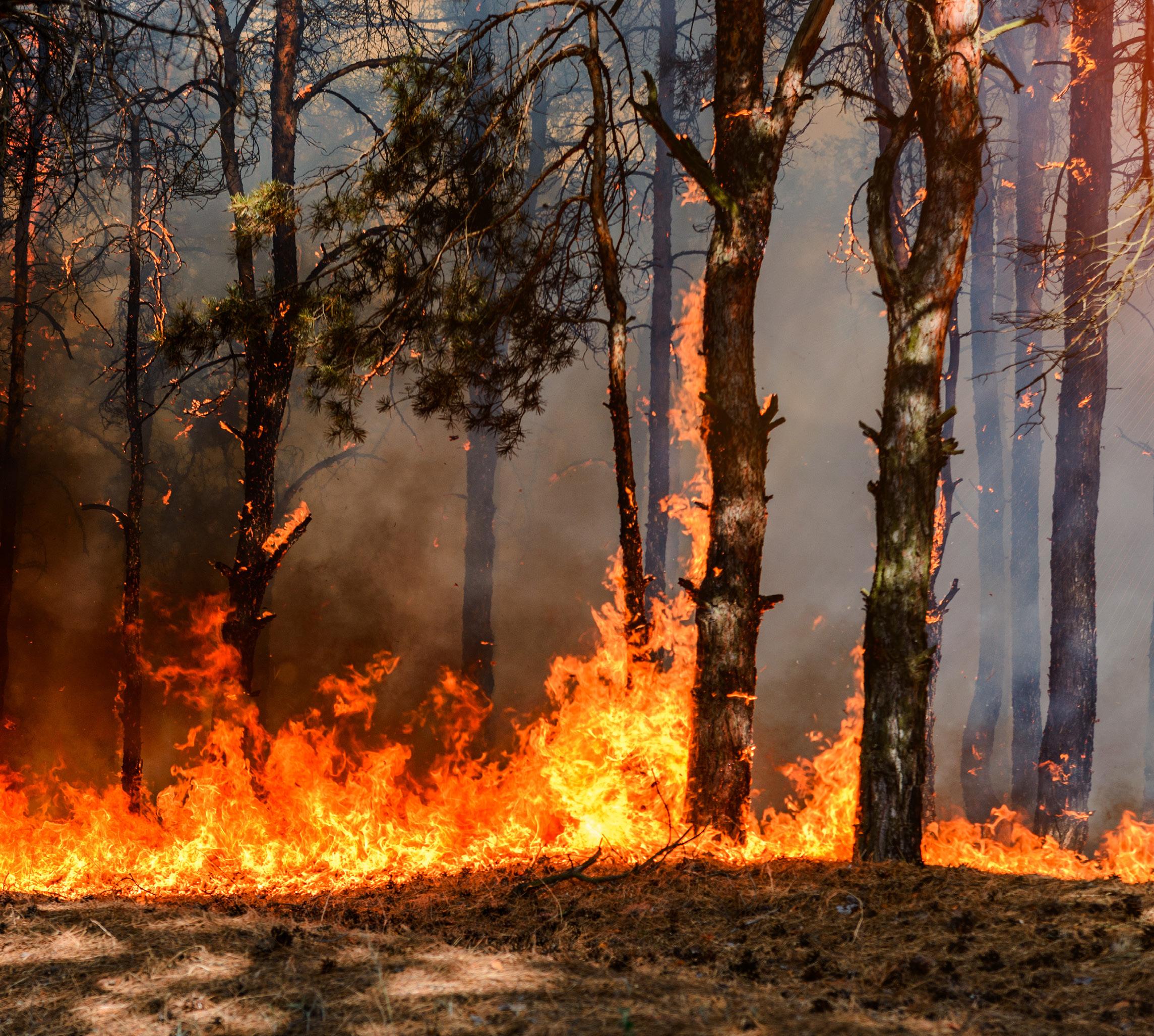
especially true in an emerging market such as the renewable energy market where regulatory and legislative changes are still in the making and can have farreaching consequences.
“It is essential for organisations to constantly monitor and adapt to an evolving array of new policies and regulations and to be prepared for the ramifications.”
Commodity price risk or scarcity of materials (ranked number three) affects various subsectors within the natural resources industry, especially because commodity prices are set by global markets and thus are profoundly affected by geopolitical volatility and regulatory or legislative changes.
Scarcity of materials, which could also lead to business interruption, is a growing concern amid a surge in renewable energy propelling an unparalleled expansion in
the critical minerals market. The sector stands at the forefront of this energy transition, evident in the dominance of critical minerals investment in 2022: The market for energy transition minerals doubled from 2017 to 2022, when it totaled $320 billion.
Weather and natural disasters and climate change significantly threaten natural resources companies. While survey respondents put them in the top 10 risks, at number eight and number
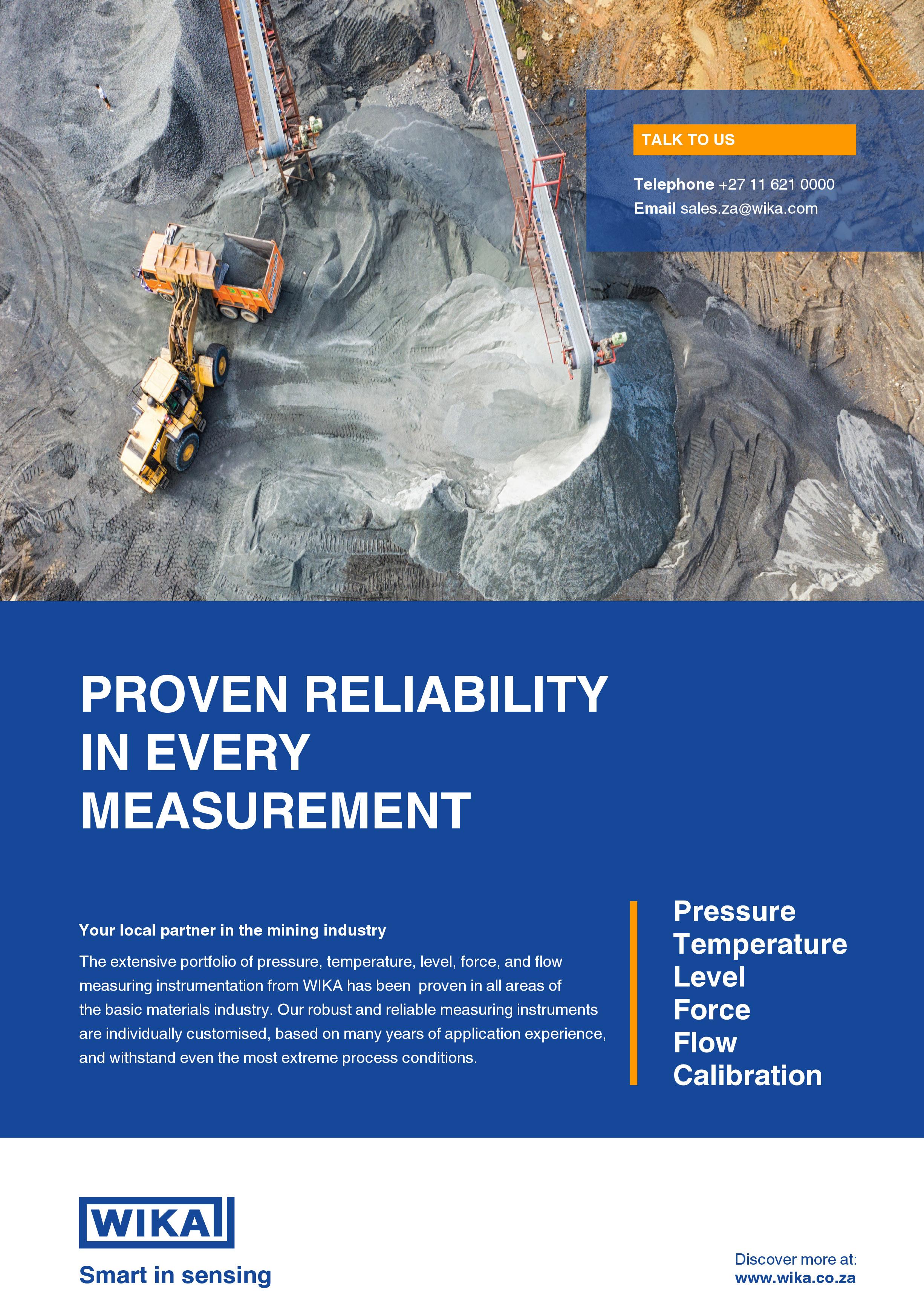
“Natural resources companies must work to maintain effective, whole enterprise risk management practices and workforce frameworks”


nine, respectively, the risks may warrant being higher on the list. Hurricanes, wildfires and other events such as secondary perils can disrupt operations because natural resources assets are in areas highly exposed to natural
catastrophes. Such events can also damage infrastructure and lead to resource shortages, highlighting the need for companies to have strategies in place to mitigate and recover from property damage.
As the industry increasingly embraces tech for cleaner and more sustainable operations, workforce shortages pose a significant challenge. “The ability to attract and retain top talent is crucial for organisations, as emerging technologies are driving innovation that will help support the energy transition.
“Some examples include smart grids that optimise renewable distribution and grid connectivity; innovative solutions for energy storage (hydrogen and pumped hydro); and carbon capture and storage to reduce emissions. Hydrogen fuel cells offer clean power generation and transportation, while advanced materials elevate the efficiency of solar panels and wind turbines, which all need the right technology and engineering talent to drive and build on these developments, alongside massive infrastructural investment—which all bring their flavour of risk to the table."
Thirty-nine percent of respondents reported their organisations had assessed top risks, while 32% indicated they had developed risk management plans. This is a drop from 2021 when 45% of industry respondents reported risk assessment and 39% reported risk management plans in place.
“It signals the challenges inherent in addressing the volatility of the economy and the uncertainty surrounding the energy transition and geopolitical risks. Natural resources companies must work to maintain effective, whole-enterprise risk management practices and workforce frameworks that consider expanding ESG expectations and reflect the industry’s rapidly rising insurance needs. These include conducting insurable risk profiling and gap analysis and regularly evaluating both existing and emerging risks while determining






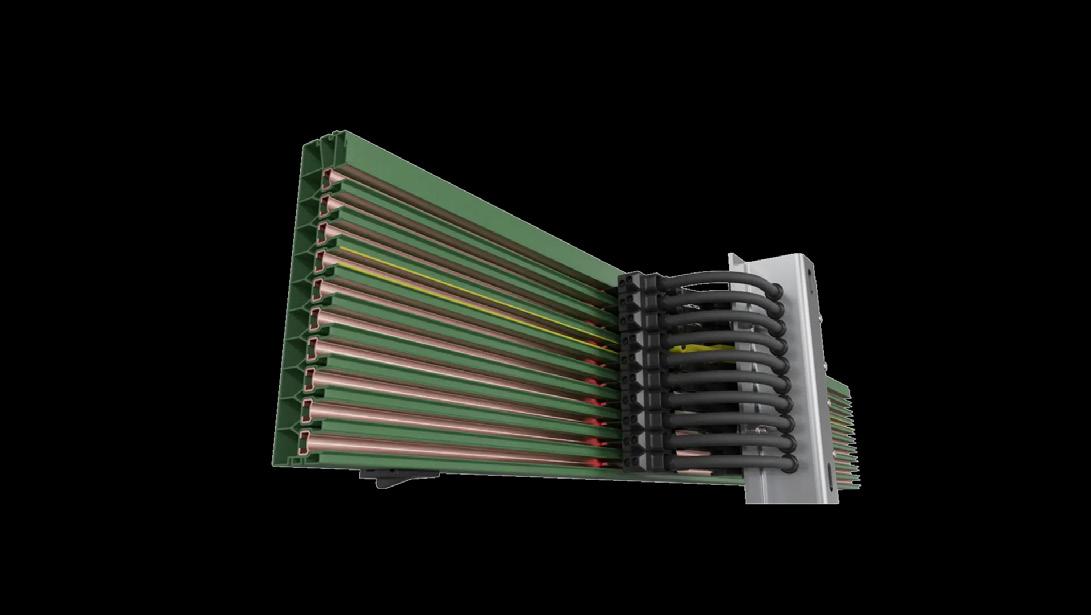
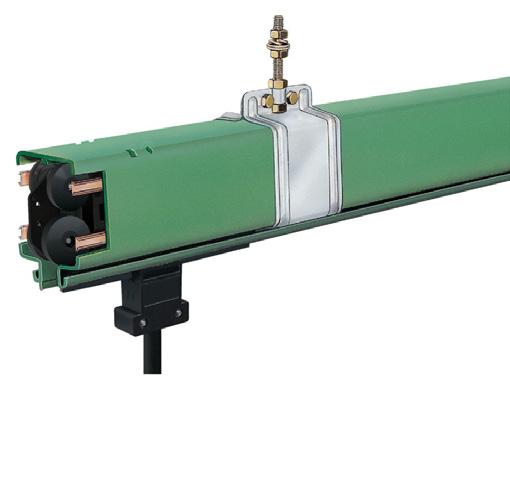





Multibillion-dollar opportunities in cross-border co-operation for oil and natural gas projects in southern Africa

Advocacy is one of my greatest priorities as the founder of the African Energy Chamber (energychamber.org). For years, I have been making a case for the growth of Africa’s energy industry by shining a light on the harsh realities of energy poverty across the continent, demonstrating the need for African industrialisation, stressing the importance of establishing political and economic climates that are attractive to foreign investment, and so on.
While our advocacy efforts are far from over, I am pleased to note the many positive developments in the sub-Saharan regions which now motivate me to spotlight certain emergent opportunities and a strategic approach to capitalising on them.
At present, considering the number of promising energy projects currently underway and the numerous trade opportunities arising—from natural gas production in particular—I am compelled to emphasise the need
for cross-border co-operation among all the nations and producers involved in these efforts, which will be vital if we are to achieve true prosperity throughout the continent.
As detailed in Standard Bank’s strategic discussion document, “South African Gas Optionality”, Africa holds natural gas in abundance, both onshore and off, accounting for more than 7% of the world’s proven natural gas reserves.
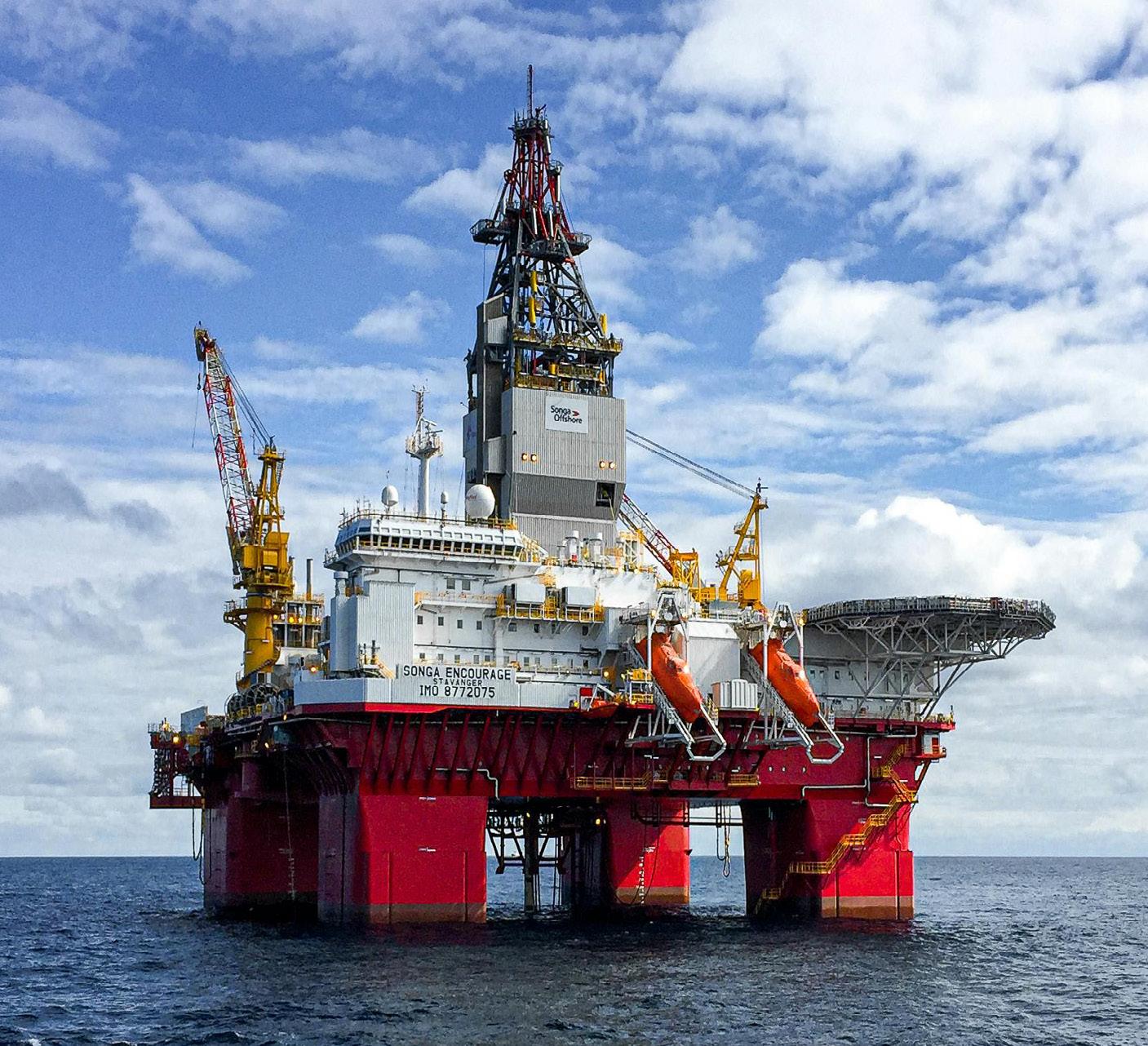
While Algeria, Egypt and Nigeria together can take claim to more than 80% of Africa’s gas production per 2020 estimates, these figures are rapidly evolving, and much of the gas industry's attention is redirecting further south to Namibia, South Africa, inland to Zimbabwe, and to the east in Tanzania and Mozambique, which is home to the continent’s third largest store of natural gas.
African gas production rates are also on the rise, and forecasts indicate this movement will continue for decades to come. African gas output volumes have grown by 70% since the year 2000 and, as outlined in Standard Bank’s report, should continue to grow to 2050, reaching a yearly output of approximately 520 billion cubic metres.
The report also notes that with these relative newcomers to the African natural gas economy paired up with the more established producers in Nigeria, Senegal and Mauritania in the west and with Algeria and Egypt covering northern Africa, practically the entire perimeter of the African continent could have liquefied natural gas (LNG) operations for the purposes of domestic use or export as early as 2027.
Factoring in Africa’s current LNG capacity of 72 million tonnes per annum (MTPA), the number of LNG facilities either in operation or advanced development, and the supportive role small-scale LNG operators will play going forward,
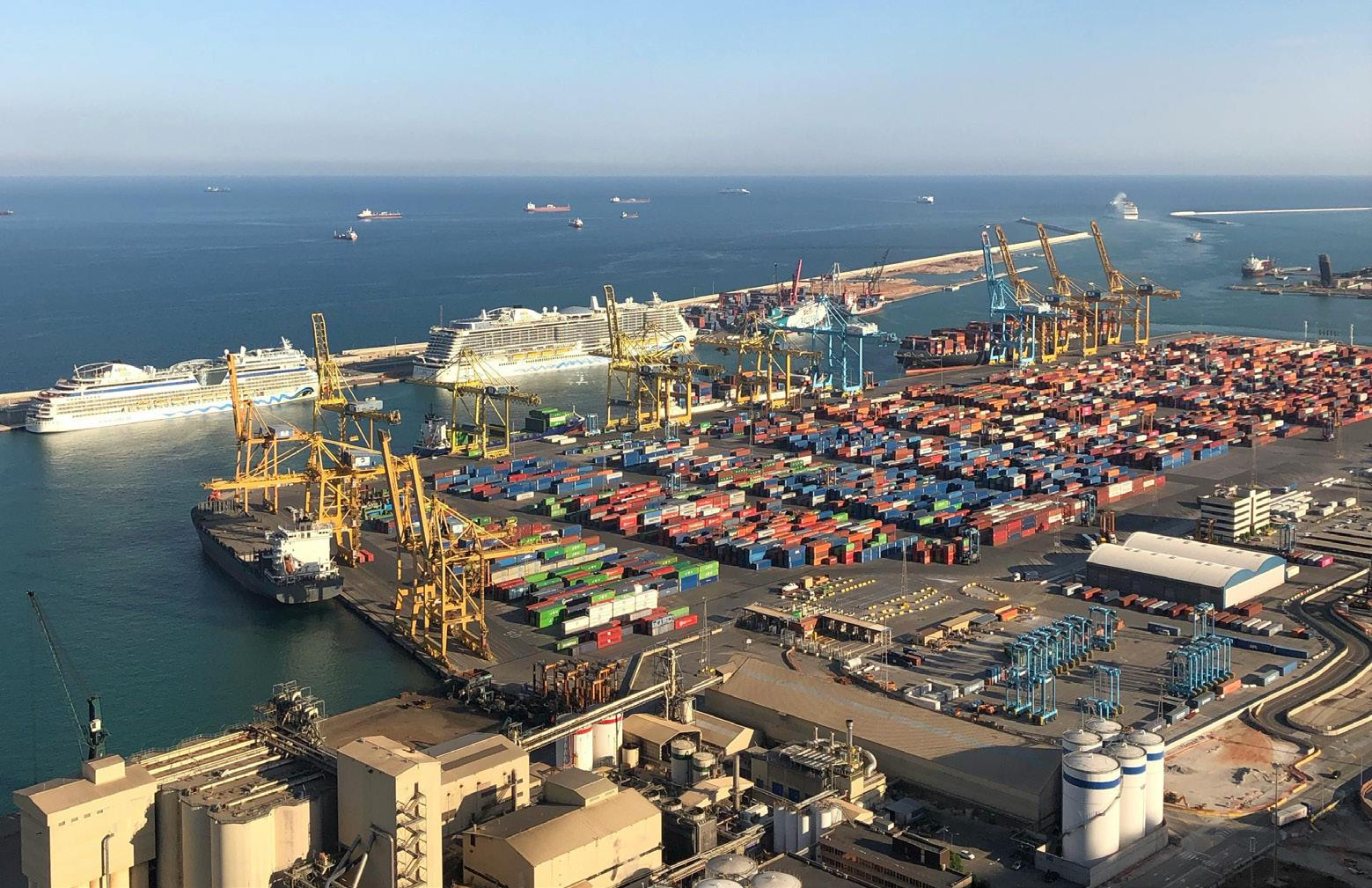
the report estimates that Africa’s capacity should increase by roughly 69 MTPA in the future.
Cross-border co-operation opportunities abound People may respect man-made borders, but fossil resources certainly do not. Hydrocarbons accumulated beneath the Earth’s crust irrespective of where one nation or another decided their boundaries should be.
However, the tendency of natural gas deposits to span borders— inherent to their location, size and distribution—has, in many cases, already promoted international co-operation around the globe. Where extraction was the concern, neighbouring nations have amicably negotiated operational territories, and it is no different in Africa.
But when it comes to the feasibility of transportation, domestic distribution and export, intraAfrican co-operation is more nuanced than merely the location of gas fields relative to borders.
Developing an effective and prosperous natural gas infrastructure and distribution network will require an earnest commitment to collaboration among nations. Conveniently, as illustrated in “South African Gas Optionality”, potential crossborder partnerships literally crisscross Africa’s southernmost region.
Pipelines running from Lusaka, Zambia to floating storage regasification units (FSRUs) in either Lobito, Angola or Walvis Bay, Namibia, could centrally connect with another running along the new TAZAMA refined product pipeline, which links Ndola, Zambia to the active natural gas operations and the Coral floating LNG operation under development south of the port of Dar es Salaam in Tanzania.
Further south in Mozambique, the rail network connecting Nacala to Lusaka, with stops in Malawi at Blantyre and Lilongwe, along with Chipata, Zambia, offers an inland transportation route. With smallscale LNG trucking support, the connected railway from Beira to Lusaka with stops at Harare and Zave brings Zimbabwe into the fold, accommodating Invictus
Energy’s recent promising finds in the Cabora Bassa Basin and completing Mozambique’s rail and small-scale LNG value chain.
Along the very active coastline of South Africa, a potential pipeline could run from East London, near the proposed site for Coega’s gas-to-power infrastructure, to the existing refineries at Mossel Bay and Cape Town. From there, the pipeline could connect with a potential FSRU at Saldanha Bay before continuing on through the offshore Orange Basin sites and terminating at a future LNG facility at Elizabeth Bay in Namibia.
To see improvement in the quality of life for Africans across the continent, Africa must stay the course toward industrialisation, and natural gas should be a significant driver in that regard.
Despite how environmental activists and Western powers shudder at the idea of an industrialised Africa, when faced with their own energy crisis brought on by the Russia-Ukraine war and the sabotage of the Nord Stream 2 pipeline, the European
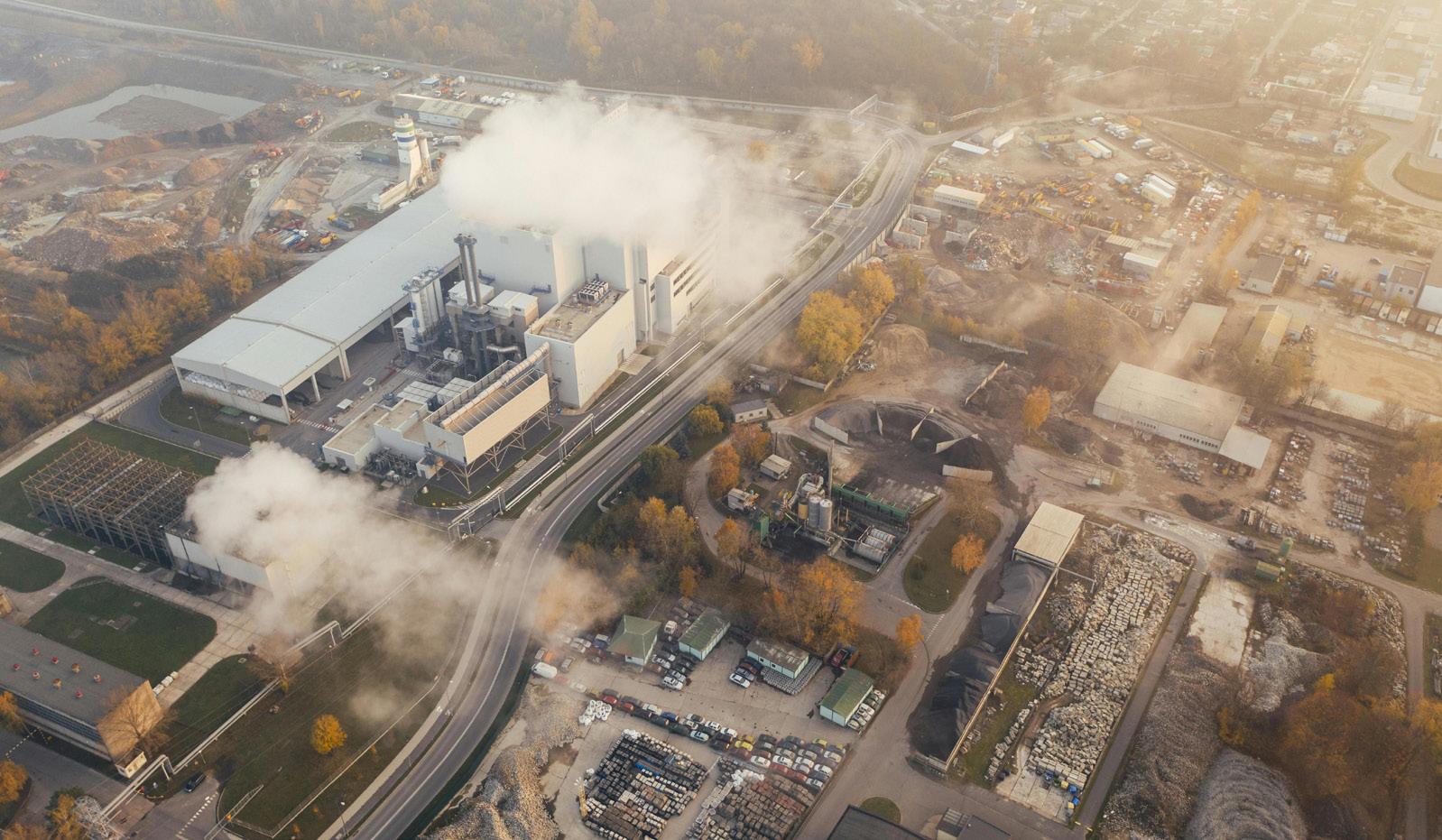
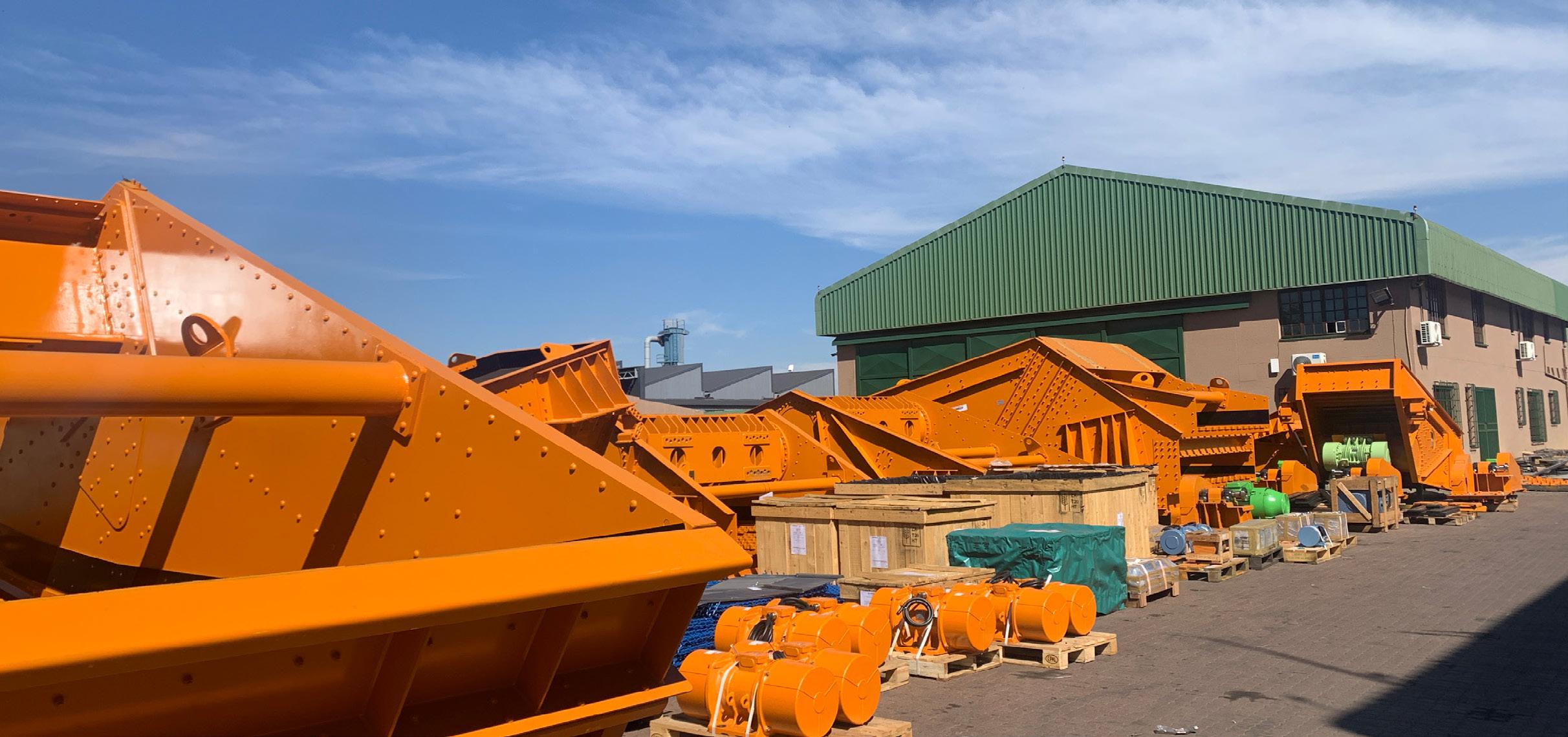
Vibramech is Southern Africa's largest manufacturer of vibrating mineral processing equipment. It supplies equipment to mining and mineral processing industries throughout Africa, Eurasia, Australasia, North and South America. Their equipment can be found operating in processing plants, ocean vessels and mining operations worldwide. The company has extensive experience in gold, diamond, coal, iron ore, manganese, platinum, chrome, nickel, uranium, copper, lithium, mineral sands and aggregate operations.
As an original equipment manufacturer, Vibramech consistently produces a proven and comprehensive range of vibrating equipment including, but not limited to: multislope (or banana) screens, horizontal and inclined screens, dewatering screens, primary & secondary sizing screens, crusher product screens, degrit screens, floats and sinks screens, classifying screens, XRT & X-ray prep screens and feeders, DMS feeders, grizzly feeders, pan feeders, tubular feeders and grease tables. All equipment is manufactured in-house at Vibramech's 32 000m2 premises in Chamdor, 35km west of Johannesburg, South Africa. Almost every piece of equipment is tailor-made to suit a client’s specific requirements, from both a plant layout viewpoint and process considerations.
The company's Vibrasure® online and remote monitoring system enables the monitoring of all aspects of Vibramech vibrating equipment 24/7, providing added insurance for machine performance. Vibramech and/ or its clients can, as required, receive real-time notifications on vibration patterns and bearing temperatures via email, mobile phone messaging or PLC. This will eliminate the occurrence of unplanned downtime due to normally unnoticed detrimental operational issues.
URAS vibrator motors have been part of Vibramech’s key product offering since 1981, and the company is the exclusive URAS vibrator motor distributor for Africa and the Middle East. Vibramech has also


pioneered the use of four vibrator motors to drive vibrating screens and, without question, has the largest worldwide footprint of four-vibrator-motor-driven (FVMD) screens globally. It has successfully installed such FVMD screens around the globe in countries such as the United Kingdom, Australia, Russia, Brazil, Chile, Canada, Botswana, Zimbabwe, Lesotho, Angola, Ghana, Mali and Israel.
Vibramech’s Field Services Department continues to service all equipment supplied into the field, and its installed equipment is supported by regional sales engineers deployed in the provinces of Limpopo, Mpumalanga, North West, Northern Cape and Free State, with a dedicated engineer in Botswana.



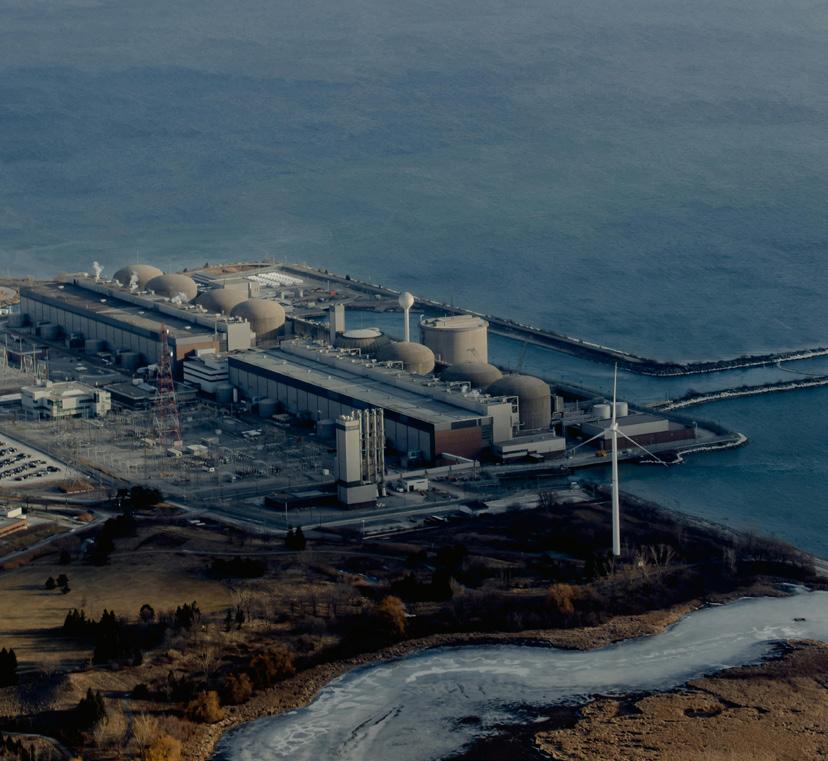
Union was quick to designate natural gas as a climate-friendly fuel source.
And it is right to do so. As mentioned in “South African Gas Optionality”, the carbon emissions of a fully industrialised and electrified Africa would likely never exceed 4% of global emissions. Not only is natural gas the cleanest burning fossil fuel, but it is also Africa’s ticket out of energy poverty.
Through the production, domestic distribution and export of natural gas, as well as gas-to-power initiatives, Africa will become healthier and wealthier and capable of building the alternative energy infrastructure that will eventually render our reliance on fossil fuels obsolete. On a reasonable timeline, Africa will follow the developed world in powering itself via a combination of wind, solar and green hydrogen, but none of this will come to pass unless we work together.
As evidenced by the intricacies of just some of the proposed projects among the southern African nations and considering the numerous other projects underway or in development throughout the rest of the continent, cross-border co-operation will be imperative if we are to tack a happy ending onto the great African energy success story.
With initiatives like the African Continental Free Trade Area
(AFCFTA), individual nations will be able to trade in goods, resources and services more easily, and workers will be able to cross borders freely, adding manpower to projects outside their home country.
Once the AfCFTA is fully implemented, I am confident it will facilitate intra-African trade, bring any disputes to a resolution, and speed up commerce where it was once slowed by tariffs and other bureaucratic barriers—but we can always do more.
The nations of Africa need to unify in mindset and mission if we are to become a global energy
powerhouse. This is, of course, in no way a call for a redrawing of boundaries, an erasure of national identities, or the capitulation of smaller nations to wealthier ones, but we must increase the frequency and volume at which we work with one another.
Every African government, indigenous company and individual citizen should cultivate the idea that we are also one people working together to profitably supply the world around us while improving conditions at home.
NJ Ayuk Executive Chairperson African Energy Chamber
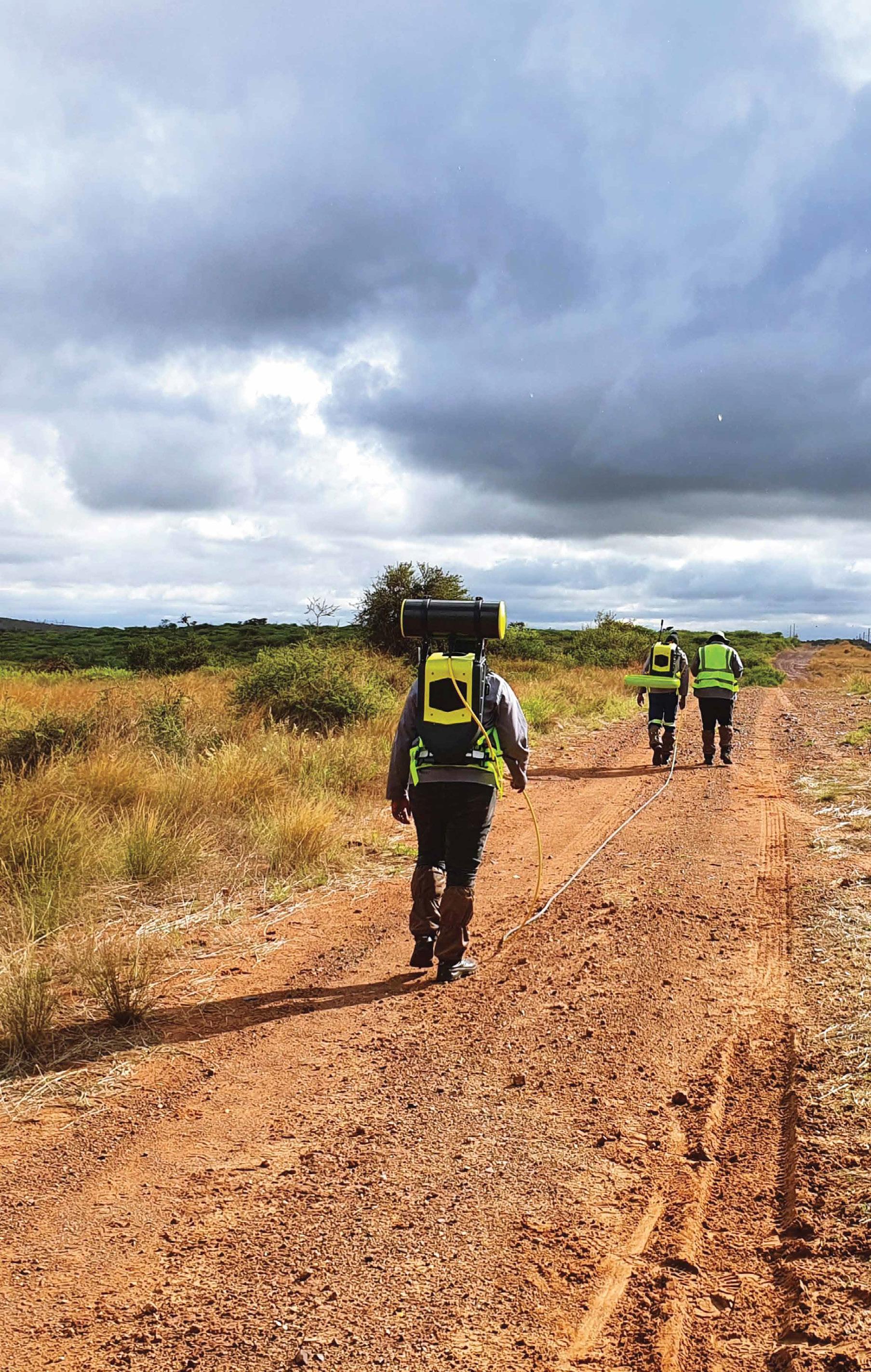

RadonX™, developed by RES, is a highly e ective and successful method for detecting radon release associated with potential uranium resources at depth.
Excellent depth of detection.
• Fast survey and results turnaround.
Highly e ective uranium exploration tool.
Does not measure radiation arising from thorium.

Highly cost e ective compared to other techniques.
E ective for regional surveys and detailed follow-up.
Significantly improved sensitivity compared to alpha detection.
Accurate uranium mineralisation mapping, and drill targeting.
Highly e ective in areas of residual and transported surficial cover.
Improved Gamma counting statistics due to field measurement.
RES’ Ground Geophysics Team specialises in the acquisition, interpretation and modelling of a range of geophysical data. Our interpretation products are signi cantly expanded by including input from structural geologists, economic geologists and remote sensing specialists within the group. This multi-disciplinary approach allows us to con dently generate prospectivity maps and identify targets, through applying a Mineral Systems Analysis type approach, based on applicable deposit styles. Ultimately resulting in more ef cient exploration projects.
www.res.co.za info@res.co.za

Namibia's energy sector needs a proactive introduction of solid local content regulations
Namibia’s oil & gas sector is still looking forward to reaching the production phase: S&P Global analysts (t.ly/3k0xO) do not anticipate Namibia's first oil to come until 2029, and the country’s first gas-to-power project is scheduled to begin in 2027.
Before Namibia achieves these hotly anticipated milestones, Namibian lawmakers have the opportunity to implement thoughtful, effective policy to benefit their people. Specifically, I am referencing local content laws that will help spread future wealth among Namibians, develop the skills of the Namibian people in oil & gas professions, and promote the establishment of Namibian oil & gas businesses. Ultimately, this will help ensure a long-term, sustainable economic impact from the resources.
Local content laws are broad policy tools that governments use across many industries. The goals of local content are multifaceted, promoting domestic businesses by requiring a certain percentage of goods or services to be sourced from domestic companies, motivating international companies to share knowledge and expertise with local firms, stimulating job growth in the domestic economy, and encouraging investment in local infrastructure that benefits the industry.
Namibia is fortunate to be in a position to benefit from the experiences of other oil- and gasproducing states. Namibia can use the best practices that have benefited others and learn from their mistakes. Standing at the precipice of an energy revolution that will help transform its economy, lawmakers in Namibia have something of an advantage, and they need to capitalise on this.
To help local companies and Namibian citizens benefit from oil & gas opportunities across the industry’s value chain, Namibia currently has a draft of the National Upstream Petroleum Local Content Policy, but it has not been passed into law yet. The Ministry of Mines and Energy is consulting with stakeholders to make revisions that will best serve the country and her people.
The draft reflects the government's desire to leverage its recent oil and gas discoveries for broader national development. There is a focus on achieving a balance between local participation and attracting foreign investment.
We love to see that Namibia is moving toward implementing local content regulation or directives, and the draft policy offers a glimpse into its goals.
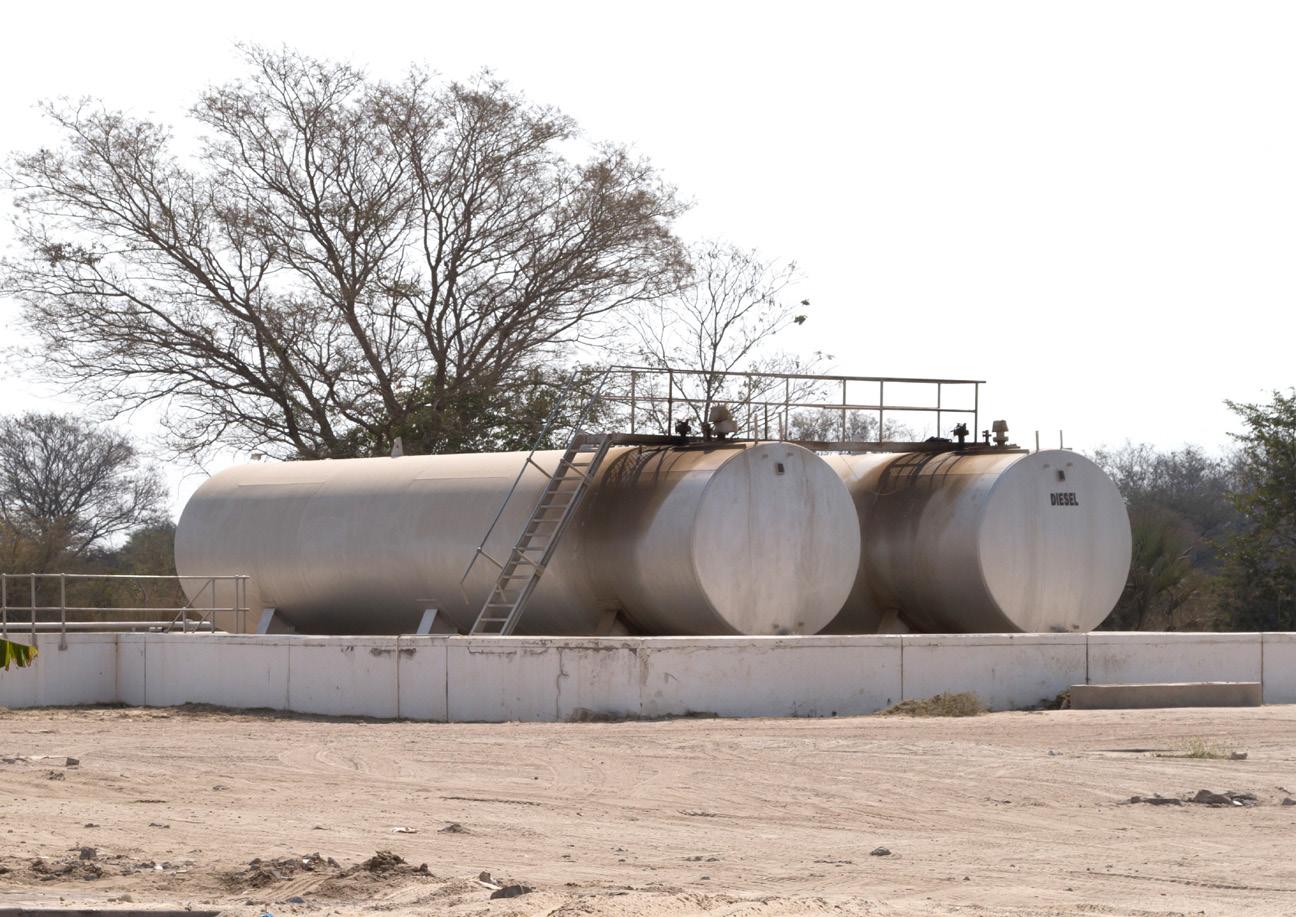
As I noted last year, I am heartened to see the productive co-operation of Namibian lawmakers and oil and gas companies. I have personally witnessed their efforts to ensure Namibia's best economic opportunities. Unlike too many other African nations, Namibian policymakers are not throwing roadblocks in the way of exploration companies. They also realise that the country will reap the benefits of its new petroleum bounty only if all key stakeholders seize this historic opportunity to put the right policies in place and continue encouraging investments in energy.
Still, Namibia has several key local content hurdles to overcome.For one, growing and maintaining a successful oil & gas industry in Namibia will require significant investments in infrastructure, workforce development and regulatory frameworks. Because the complex energy sector requires high initial investment, specialised technology, particular workforce skills and a long-time horizon for projects, it can be difficult for local companies to readily participate.
In addition to the huge sums of infrastructure financing needed to build out the oil & gas sector, Namibia needs to invest in training and education programmes to create a skilled workforce capable of operating and maintaining this infrastructure. Without substantial input—both financial and educational—from external experts, domestic involvement will likely remain limited, despite any well-planned local content policies.
And we cannot overlook the need to define 'local' clearly. Namibia has to make sure its local content policy leaves no room for
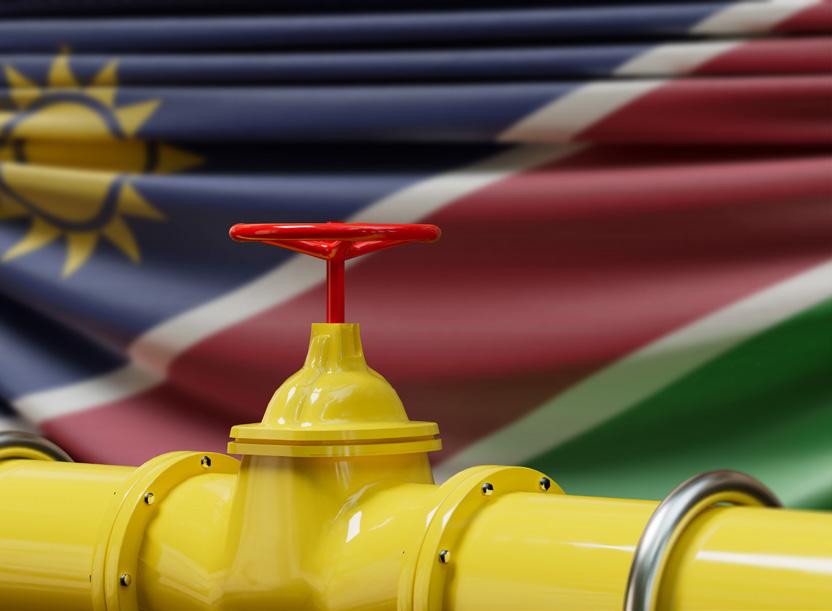
interpretation or nuance to avoid an unfair advantage for some Namibian businesses.
At the same time, it is equally important for the country to be pragmatic in its implementation of the regulations to continue fostering investment. Namibian policymakers need to avoid government overreach. While local content regulations can have positive effects, they can also raise concerns about potential drawbacks such as increased costs or limitations on competition. Striking the right balance between local requirements and international competitiveness will be key to the success of the fledgling oil & gas sector.
Meanwhile, the energy sector must tread carefully to avoid any backlash from the Namibian citizenry. One false step could quickly crumble the people’s support for oil and gas companies.
In today's world, simply focusing on resource extraction is not enough. Oil and gas companies that want to prosper in Namibia must also embrace corporate social responsibility (CSR) and social programmes that foster positive outcomes for the people. Implementing sustainable practices that mitigate the environmental impact of oil and gas activities demonstrates a commitment to responsible resource development. Companies that neglect CSR risk facing community opposition and protests, potentially delaying or derailing projects.
In addition, companies with a strong CSR reputation attract and retain top talent, creating a more positive work environment. That, of course, includes women: In Namibia, women make up almost

52% of the population, so ignoring their potential would be a gross oversight.
A positive social impact should ideally influence government decisions and create a smoother operating environment. The Namibian government can foster this co-operation by favouring companies with strong CSR initiatives when awarding licences and concessions.
Multinationals like Exxon, TotalEnergies, Shell, Galp, Woodside and Chevron stand to be amazing allies in this growth. Likewise, service companies like Halliburton, SLB, Baker Hughes, Technip Energies and many others should play a big role—in boosting Namibia’s oil and gas production as well as in promoting Namibia’s local content environment. With the big contracts they are going after, they would be wise to start hiring and training Namibians in their oil and gas activities NOW.
A commitment to Namibians As long as the country continues along the path toward local content that the Geingob administration initiated, we may well see it becoming obligatory for companies to provide a local content plan and supplier development plan to be eligible to win contracts.
Consider the recent ultimatum (t.ly/pHywm) issued by Maggy Shino, petroleum commissioner of Namibia’s Ministry of Mines and Energy: "We would like to inform those envisaging to service the Namibian oil industry that local content is mandatory, and that the Namibian government will not compromise in providing opportunities for its people to participate meaningfully in the industry.”
In January, she shared the vision of the nation’s pathway to first oil. It is evident from her comments to World Oil that her people are
Resources 4 Africa is pleased to announce the 10th edition of its annual Junior Indaba, a popular meeting place for junior miners which is enjoyed by all for its incisive, informative and frank discussions tackling the challenges and opportunities for exploration and junior mining companies in South Africa and elsewhere in Africa. Discussion topics this year include:
• What can be done to drive exploration in South Africa?
• What is the latest update on the South African cadastral system?
• What is the role of junior miners in meeting the demand for critical minerals and metals?
• How are commodity prices faring in 2024 and what will this mean for juniors?
• What are the challenges and opportunities for junior miners and explorers in the rest of Africa?
• What lessons can be learned from successful junior miners who are already operating in SA and beyond?
• What are investors looking for when considering African junior mining projects?
• And much more…
We will feature a number of junior mining success stories, as well as our regular features –Myth Busters and a showcase of presentations from junior miners across the continent.







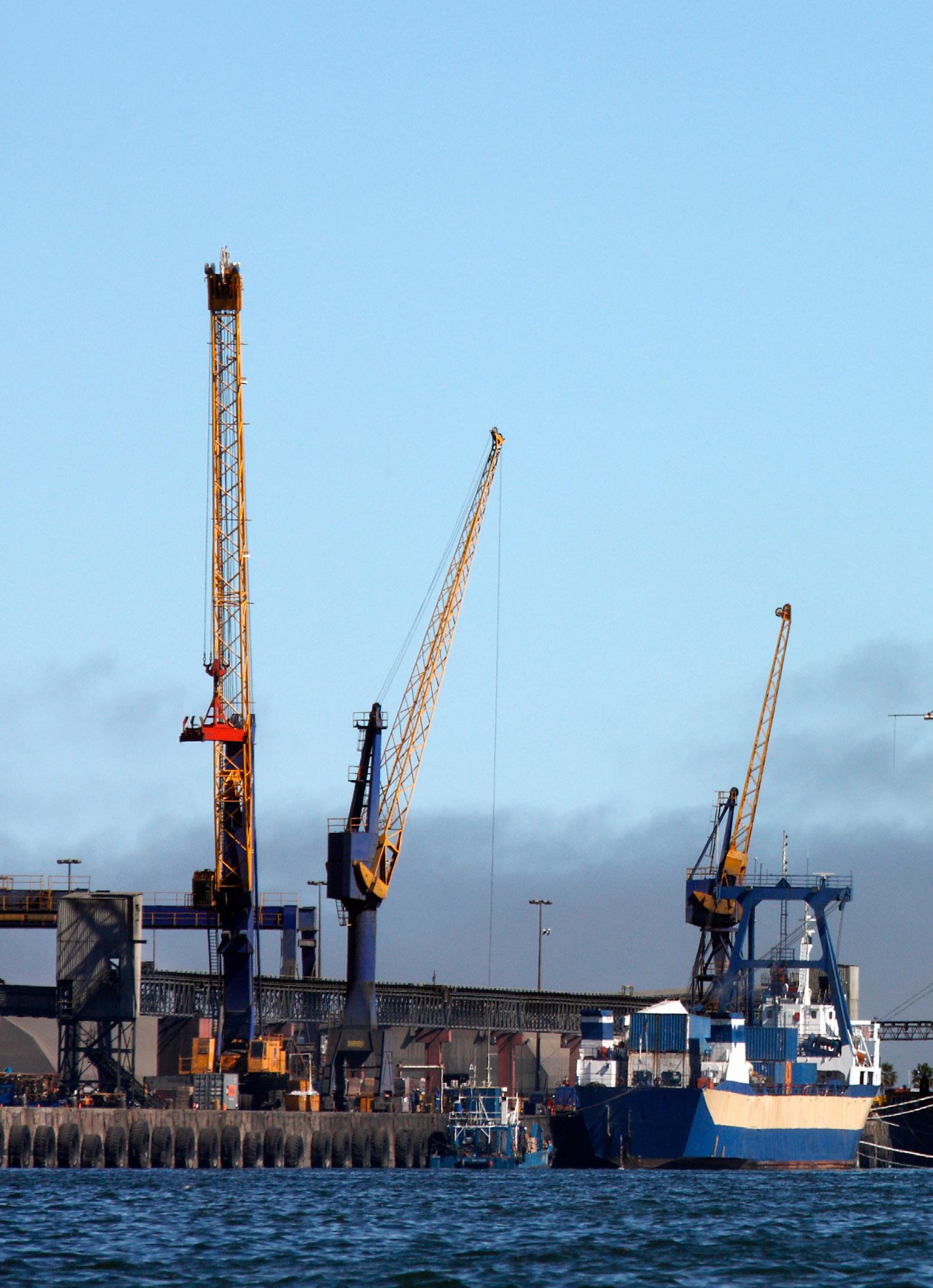
foremost in her mind. “First, we need to build the capacity, both in the local workforce and in the institutions that will help oversee, develop and regulate Namibia’s oil & gas industry. We also have an obligation to share up-to-date information with the Namibian people so that they can prepare effectively for first oil production.”
Shino emphasised the importance of knowledge and skill transfer, to ensure Namibian companies and Namibians themselves have
the opportunity “to participate meaningfully and add value to the projects.”
She also called on Namibians themselves, tasking them with some amount of selfdetermination. “A much bigger obligation is further placed on the Namibian people to ensure they equip themselves with the necessary skills required. The oil industry is a highly specialised industry with high standards for HSE [health, safety and
Namibia has to make sure its local content policy leaves no room for interpretation or nuance to avoid an unfair advantage for some Namibian businesses.
environment], and we will not compromise on the international requirements. We must ensure the industry has an effective local content policy and regulatory landscape so that Namibians reap the fruits of their labour. This is central to sustainable governance.”
On his part, Minister of Mines and Energy Tom Alweendo (t.ly/ mCXLt)—who has been a strong advocate for local content— focused on the role of Namibians to step up their entrepreneurial skills and personal responsibility: “Without local entrepreneurs who are curious, innovative and willing to invest their time and energy in acquiring the necessary skills to succeed, it will be extremely challenging, and possibly even impossible, to embark on our local content journey.”
With this mindset, Namibia’s foray into oil and gas will reignite the country’s sluggish economy by encouraging new investment and revitalising the manufacturing sector. At the same time, a proactive introduction of solid local content regulations will no doubt foster job creation, help combat energy poverty, and promote hope and human dignity for the Namibian people.
NJ Ayuk Executive Chairperson African Energy Chamber
Operating in a wide variety of industries Hargreaves Industrial Services are materials handling experts with an exemplary track record in health and safety performance.
We specialise in the rationalisation of multiple contracts with seamless transition, whilst driving process change management and innovation through technology and software.
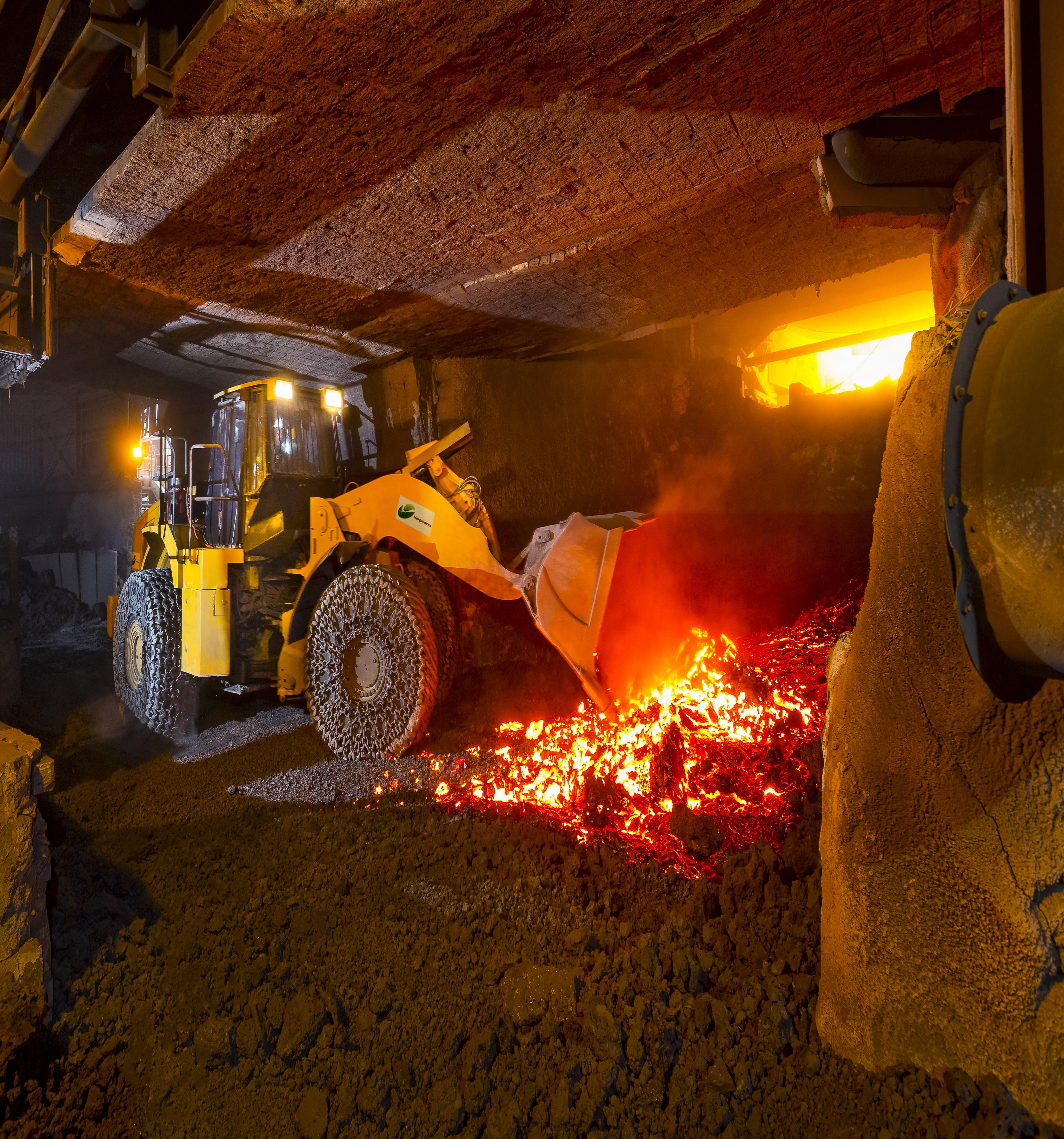
South Africa Office:
3 Nobel Boulevard, Cape Gate, NE3, Vanderbijlpark, Gauteng
ben.vandermerwe@hsgplc.co.uk
060 542 1729 / 016 980 2163


UK Office:
Unit 2, Wordsworth Business Park, Barugh Green, Barnsley, S75 1FJ, UK
hisenquiries@hsgplc.co.uk




Female leaders are transforming their respective energy industries into Africa’s most sought-after exploration hot spots
Energy Capital & Power (ECP) celebrates women in leadership positions within Africa’s energy and mining sectors. Leveraging its position as the continent’s premier investment platform for the energy sector, ECP aims to enhance the role of women as agents of change in promoting clean, affordable and efficient energy use.
Despite making up 39% of the global labour force, according to the International Energy Agency (shorturl.at/cguz8), women only account for 22% of the energy sector’s workforce. By fostering increased inclusivity throughout the entire energy value chain, Africa stands to accelerate socioeconomic development and the transition toward sustainability.
With Senegal, Uganda, Namibia and South Africa at the helm of female leaders within their respective ministries, these markets have attracted billions in foreign investment and are home to some of the most dynamic upstream developments on the continent.
Since her appointment in November 2020, Sophie Gladima, Minister of Petroleum and Energies of Senegal, has led the

country through one of its most transformative periods, with first oil and gas expected this year from the highly anticipated Sangomar Field Development and Grand Tortue Ahmeyim (GTA) liquefied natural gas (LNG) project, respectively. Minister Gladima successfully advanced these projects—which total nearly $10 billion in foreign direct investment—in the face of COVID-19 and demands for cross-border co-operation with Mauritania, whose maritime border with Senegal houses the GTA LNG project.

Ruth Nankabirwa Ssentamu, Minister of Energy and Mineral Development of Uganda, is another female minister leading frontier market developments since her appointment in June 2021. Targeting first oil output in 2025, Uganda has launched exploration drilling at its $10-billion Lake Albert Development, home to the TotalEnergies-operated Tilenga and Kingfisher fields operated by the China National Offshore Oil Corporation. The country is also at the centre of the planned East African Crude Oil Pipeline, which will transport Ugandan oil to the Port of Tanga in Tanzania and represents the single largest investment in either country to date.
Serving as Petroleum Commissioner of Namibia’s Ministry of Mines and Energy since October 2015, Maggy Shino has played a pivotal role in securing upstream investment from leading international oil companies, with TotalEnergies set to invest roughly $300 million in 2024 alone. With over 15 years in petroleum geological, geophysical and environmental management fields, Commissioner Shino has cemented Namibia’s status as a world-class frontier oil & gas






market with strong on- and offshore prospectivity. Following five offshore hydrocarbon discoveries, Namibia is currently conducting further appraisal work—as well as new seismic and exploration activity in the Owambo, Kavango and Orange Basins—and is on the path to first oil production by 2030.
In neighbouring South Africa, Deputy Minister of Mineral Resources and Energy, Dr Nobuhle Nkabane, has been active in driving an exploration agenda. Utilising South Africa’s Gas Master Plan, she has positioned natural gas as a means of improving energy security, reducing heavy-polluting fossil fuels and establishing domestic LNG production through recent discoveries like the 3.1-billion-cubic-feet Mpumalanga discovery. Under her leadership, South Africa’s Department of Mineral Resources also implemented a school outreach programme aimed at encouraging youth in STEM (science, technology, engineering, mathematics) fields and developing a future workforce for the country’s mining and energy sectors.
A growing network of companies and institutions that support diversity and inclusivity have
led to women taking up more leadership positions and making strides in the East African energy landscape.
With new developments kicking off across the oil, gas and broader energy fields, Uganda’s energy sector is on the precipice of a transformation. Individuals such as Faith Edigold Musimenta, senior petroleum economic and financial analyst at the Petroleum Authority of Uganda (www.pau.go.ug), play a pivotal role in developing oil & gas financing models. Musimenta represents an inspiration for women across the African financial sector, and continues to advocate for inclusivity, sustainability and development of Uganda’s oil & gas industry.
Offering internships and training programmes for women, South Sudan’s Ministry of Petroleum has sought to position women as drivers of the country’s burgeoning economy. As such, Labanya Margaret Mathya, director-general for Administration and Finance at South Sudan’s Ministry of Petroleum, is well-positioned to leverage her leadership position to promote initiatives that drive positive change in energy and social development in the country.
Serving as the deputy managing director at South Sudan’s national oil company Nile Petroleum Corporation Limited (nilepet.com), Ambassador Martha Nyamal Choat’s extensive experience with organisations dedicated to women and children has profoundly influenced her passion for advocating for women in the energy sector. At Nilepet, she is driving the participation of women in the industry by implementing programmes that prioritise gender equality and create pathways for women to excel in leadership roles.
Boasting 10 years of management experience, Triple A Petroleum (www.tripleapetroleum.com) CEO and founder Atong Amos Agook has sought to address the lack of inclusivity and gender diversity in the East African energy sector. During the 2023 edition of the nation’s official energy conference—South Sudan Oil & Power, organised by ECP—a dedicated Women in Energy lunch, led by Triple A Petroleum, sought to improve the participation of women in leadership positions. “We want to promote knowledge— and to do that, we need knowledge transfer and practical experiences that accelerate their advancement in the sector,” Agook stated during the event.
Boasting 30 years of experience in the economic and development sectors, Victoria Kwakwa, regional vice-president for Eastern and Southern Africa at the World Bank (shorturl.at/ rxSV9), oversees a portfolio of 313 operations totalling $58 billion throughout Africa. Under her leadership, the organisation provides vital support to promoting private sector jobs, economic transformation, strengthening climate resilience, and improving access to critical infrastructure.
Energy Capital & Power energycapitalpower.com
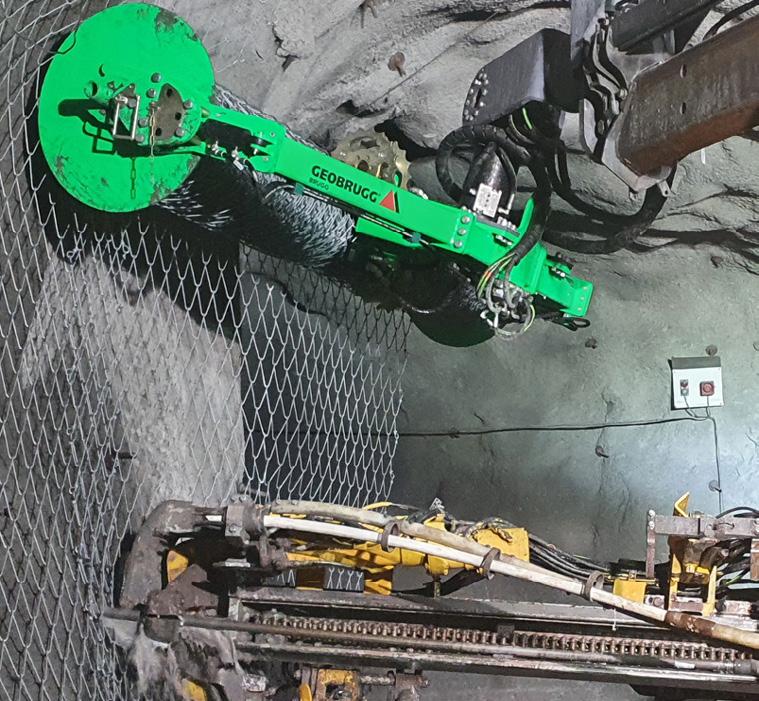
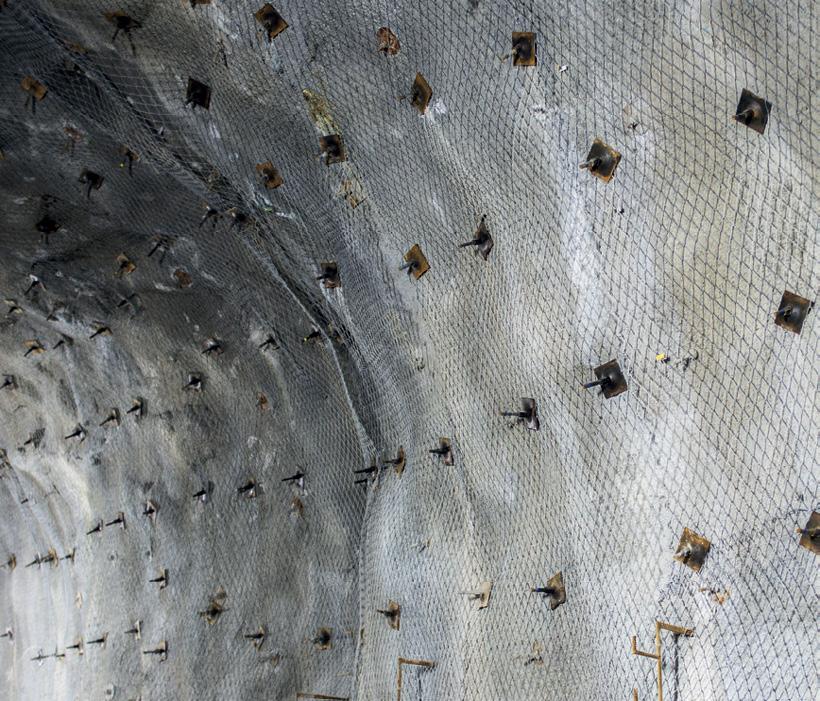

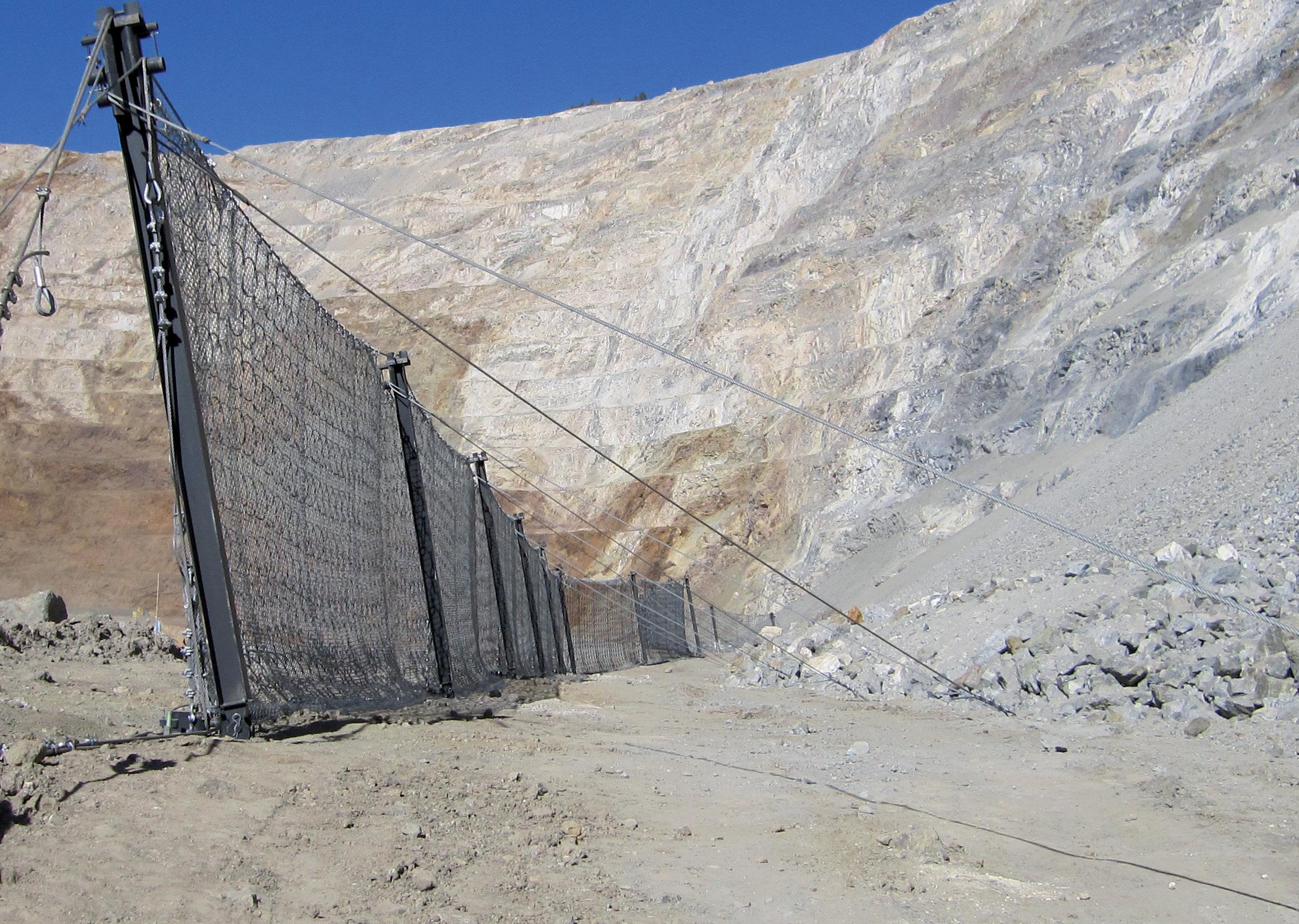

US–Africa: Strengthening security, supporting development and reducing conflict amid geopolitical competition
The United States Institute of Peace (www.usip. org) convened a senior study group (t.ly/-kBSc) to explore the role Africa plays in the United States’ efforts to diversify US critical mineral supply chains and how new investment in partnerships with African countries could help drive economic development and strengthen peace and security on the African continent.
Based on meetings and interviews with relevant technical, operational and policy experts, the study group developed multiple recommendations for the US to support mutually beneficial public-private partnerships with African nations. These partnerships could help diversify critical mineral supply chains; strengthen the rule of law, transparency, and environmental and labour standards around African critical minerals; and foster peace and stability through greater US commercial engagement.
US economic and national security depends on a reliable supply of critical minerals that underlie an array of products and services important to ever-changing modern economies. Yet, for many critical minerals (e.g. cobalt, graphite and manganese), the US is heavily dependent on imports. Especially concerning is that the US is at or near 100% reliant on 'foreign entities of concern'— mainly the People’s Republic of China—for key critical minerals.
Global demand for many critical minerals is growing rapidly. Accelerated demand forecasts are largely based on assumptions regarding a global transition to non-fuel-based energy sources, including high-end batteries for electric vehicles and power storage. However, critical minerals
are also essential to powering all manner of consumer electronics, medical supplies and highperformance metals and engines, including those used for defence and military applications.
Consequently, regardless of how market and policy factors may change the trajectory of an energy transition, demand for key critical minerals is very likely to grow as economies worldwide increasingly electrify and modernise. To avoid being shorthanded and vulnerable to export controls and potential market manipulation by geopolitical competitors, it is imperative for the US to diversify its critical minerals supply chains.
Africa can play an important role in strengthening US critical minerals supply chain security. The US and allied countries already depend on many critical minerals that are sourced from African countries.
But increasing supply is not a simple matter. The development of natural resources on the continent has had a checkered past, and critical minerals are no exception. Ventures of the Russian-led paramilitary Wagner Group in Mali, Sudan and elsewhere are cases in a long history of predatory mining activities in Africa. Thus, it should not be assumed that the global rush for critical minerals will be beneficial to African development and security.
Here, the US, its allies and the private sector can play a positive role—including by offering a better alternative to an approach to extracting Africa’s critical minerals common to Chinese companies, which too often has offered little local value and has resulted in corruption and human rights abuses including child labour exploitation. US mining and related companies could be much more engaged, however, as they remain largely absent from the continent.
While the Biden administration and Congress have stepped up efforts to support US companies in African markets—by derisking and otherwise supporting investments—progress is relative, and there is no indication that China and other competitors are retreating. In fact, the list of economic competitors in Africa is growing, with Gulf States and others intensifying their interest in African critical minerals. If the US wants to remain competitive on the global stage, it must step up its efforts to diversify US critical minerals supply chains, including in Africa.

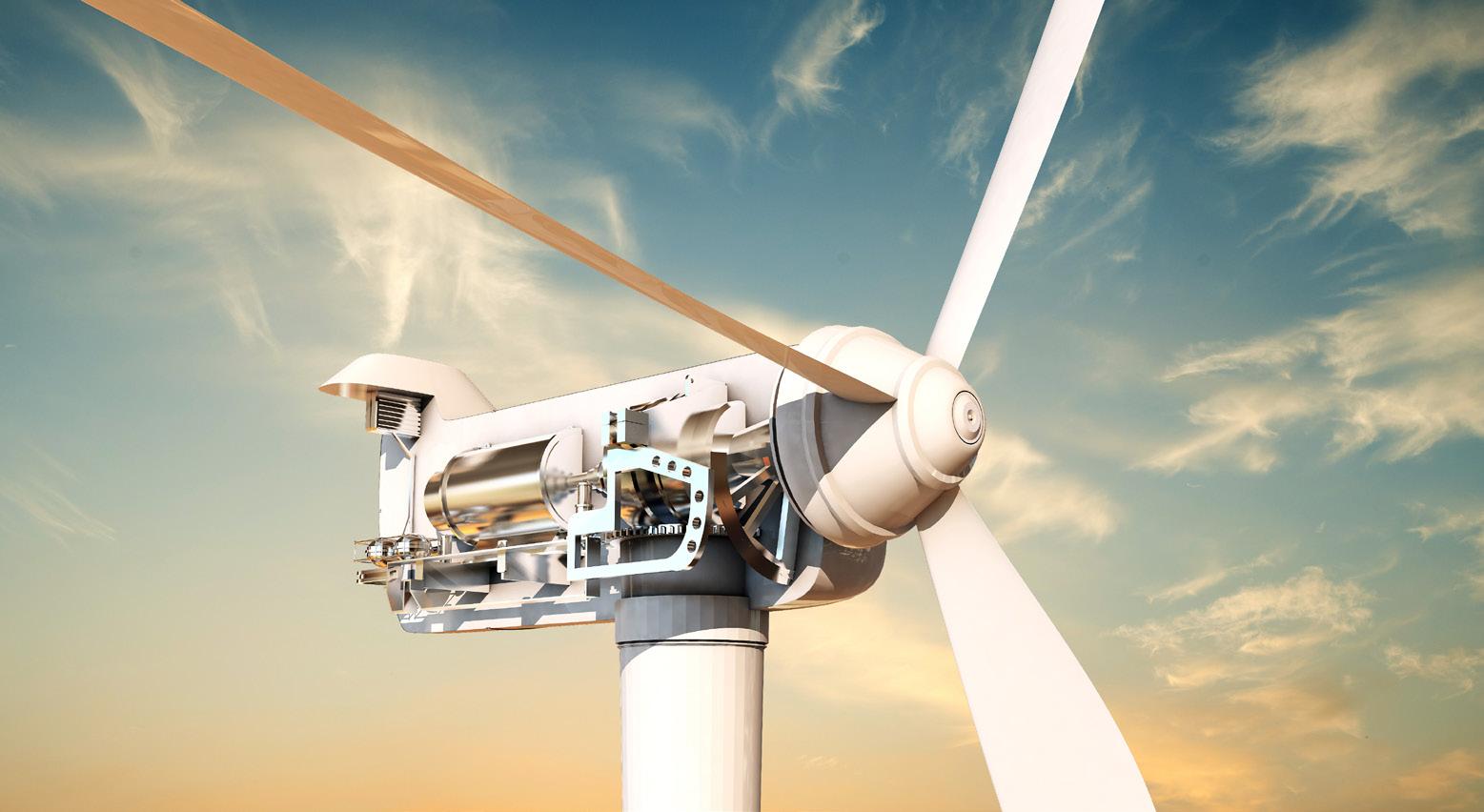
The study group reviewed US policy initiatives and explored key challenges, issues and opportunities associated with meeting US critical minerals objectives, primarily with a focus on further engaging Africa and challenging China’s dominance.
The group’s overarching conclusion is that the US government should act with increased speed, focus and decisiveness to support Africans in equitably and responsibly developing critical minerals. In doing so, it should engage African countries in mutually beneficial partnerships aimed at bringing peace, prosperity and community stability to African citizens.
Forging such partnerships will not be easy, but doing so could establish the US and its allies as Africa’s preferred partners in supporting the continent’s critical minerals development.
The following is a list of 13 broad policy recommendations and actions developed by the study group to further US–Africa partnerships on critical minerals development and supply chain diversification:
1. Sharpen US–Africa policy with a focus on critical minerals. Given their importance to US economic and national security and African economic development, critical minerals merit being a top priority for US policy toward Africa. To execute this priority, the US should design a comprehensive critical minerals strategy that aims to build mutually beneficial partnerships with Africans.
2. Empower African civil society and the media. The US could bolster the involvement of African civil society in its efforts to build transparency and accountability in the critical minerals sector, including by providing more support for US Agency for International Development (USAID) activities and other US government programmes.
3. Prioritise and leverage existing USAID programmes to assist Africans with rule-of-law and fiscal transparency efforts. The US should enhance ongoing USAID efforts such as those supported through the Fiscal Transparency Innovation Fund. It could help African governments and civil society strengthen the rule of law, improve the business climate for responsible investors, and
foster greater peace and community stability through better financial management of activities associated with critical minerals development
4. Tactically address Chinese mining in Africa. Although the US is competing with China, using tactical nuance in investment decisionmaking could further US policy goals. Of course, all potential relationships with companies must be thoroughly vetted to ensure compliance with human rights, child labour, environmental and other high standards and laws, but a tangential Chinese connection alone—particularly involving basic services or infrastructure—should not necessarily disqualify a US firm from receiving US government support.
5. Prioritise prompt and full development of the Memorandum of Understanding (MoU) between the US, the Democratic Republic of the Congo (DRC) and Zambia. The US–DRC–Zambia MoU should be prioritised to fully realise its potential benefits. Transforming the memorandum into a productive partnership will require a significant US effort and dedicated resources. To be most successful, the MoU will also need the full engagement and guidance of the US private sector across the battery supply chain. Commercial diplomacy can play an important role in this effort.
6. Strengthen the impact of the US International Development Finance Corporation (DFC). To make the most of its tools in the African critical minerals sector, the US government should sharpen the DFC’s impact by, for








example, emphasising strategic investments that will also meet developmental priorities and increase the corporation’s presence in Africa
7. Mobilise the private sector to strengthen African infrastructure. Although budget constraints and other factors limit the US’ ability to improve African infrastructure, tools exist to mobilise private US resources. For example, the US could better utilise the Partnership for Global Infrastructure and Investment, DFC, Export-Import Bank and US Trade and Development Agency to boost countries’ abilities to attract private infrastructure investment.
8. Invest in commercial diplomacy. The US government should practise more vigorous commercial diplomacy with a keen eye toward building critical minerals partnerships in Africa. Increasing the physical presence of diplomatic and commercial officers in mining centres is of utmost importance. For example, the US should reopen a consulate in the city of Lubumbashi in the DRC and better resource the US Commercial Service.
9. Expand membership of the Minerals Security Partnership (MSP) to include African partners. The US is involved in several multinational partnerships involving critical minerals, including the MSP. The MSP was established in 2022 to generate publicprivate investment in critical minerals production, processing and recycling, with the ultimate goal of diversifying and securing critical minerals supply chains. Currently, no African countries are included in the MSP.
10. Expand support for the Young African Leadership Initiative (YALI). The US Department of State and USAID should aggressively pursue increased private and public support for YALI—a highly competitive executive programme for young Africans interested in leadership and entrepreneurial training. The programme could enhance US–Africa critical minerals policy goals by better engaging US mining and engineering universities in exchange programmes and the US diplomatic corps.
11. Assist Africans in building technical capacity in the mining sector. The US should partner with Africans to support local critical minerals processing. This could be done in part by helping to establish technical assistance and training centres and regional processing centres— all while being alert to counterproductive critical minerals export policies.
12. Prioritise US national security interests in the context of US trade and investment policy. Policymakers should explore the extent to which US mining engagement efforts in Africa may be undercut by the Inflation Reduction Act, disincentivising critical
minerals investment and exports to the US—exports US processing and manufacturing facilities will rely on for the foreseeable future.
13. Support efforts to address artisanal mining challenges. The US should support efforts to increase benefits for artisanal workers and limit harm from artisanal mining. Yet, it should do so while recognising that formalisation and punitive measures can be counterproductive— inadvertently harming artisanal miners and their communities if not carefully managed.
Global critical minerals markets are rapidly evolving, driven by new policies and technologies.
Africans often express a sense of urgency when discussing their major opportunity to tap natural resources and fuel positive development—as the critical minerals of today may not be critical tomorrow.
Given this sense of urgency and the US’ strong interest in furthering its engagement on the continent, the potential for critical minerals partnerships that work for both Americans and Africans is high. For these partnerships to be successful, though, much more work is needed.
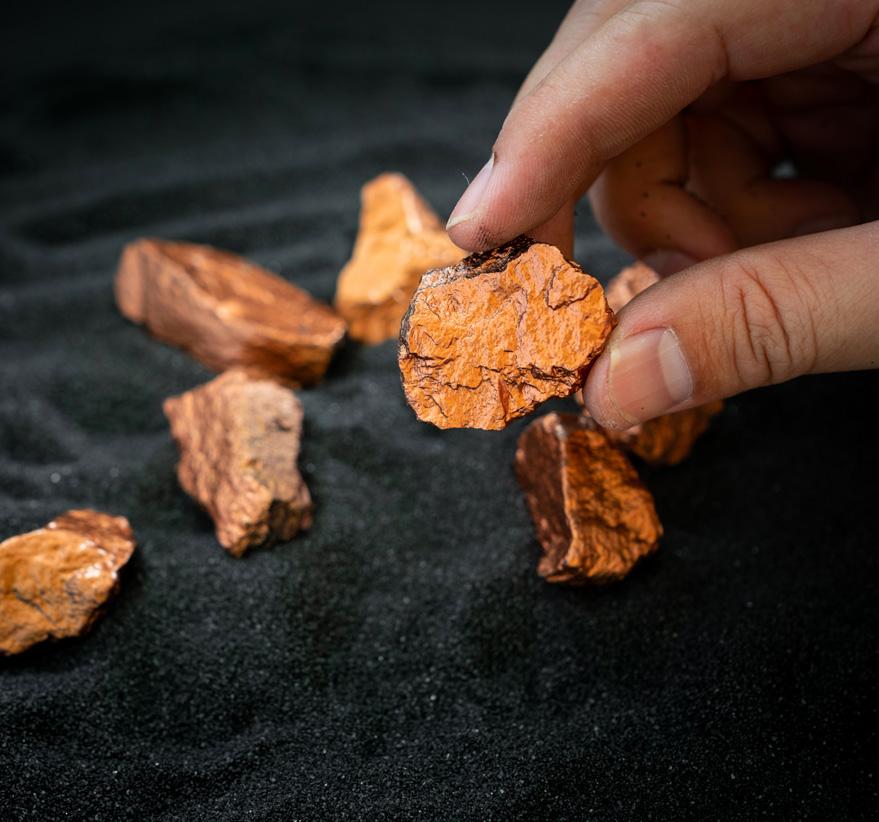
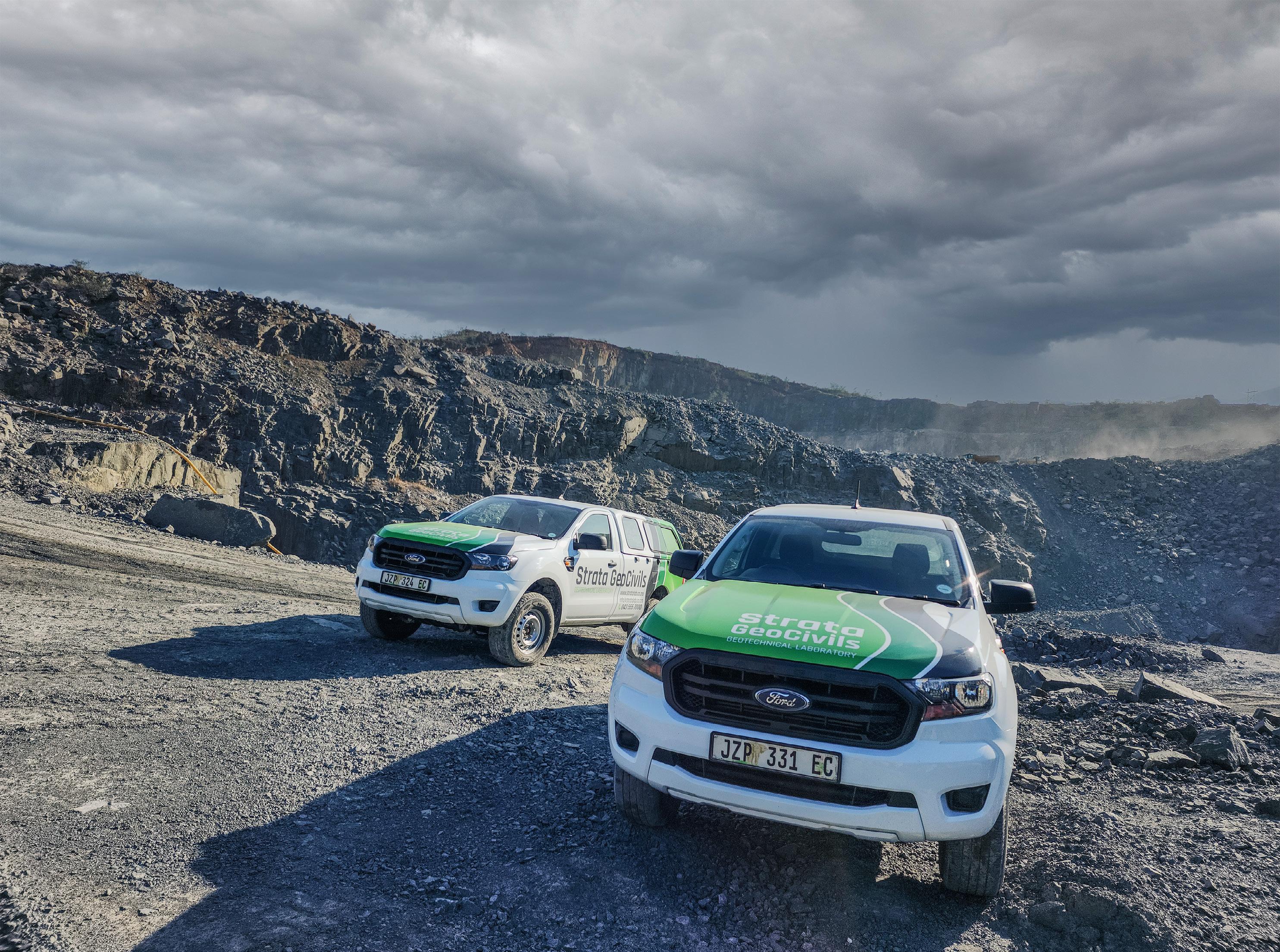

T1090
Who we are


Strata GeoCivils (Pty) Ltd is a SANAS Accredited civils & geotechnical engineering materials testing laboratory with highly quali ed and industry registered professionals. We are passionate about what we do and are driven to impart a stronger sense of the value and importance of materials and geotechnical testing to the civils and construction industry.
We have over 40 years’ experience in the industry and are East London’s only local, home-grown laboratory. Strata GeoCivils (Pty) Ltd boasts a wide scope of accreditation, with a unique focus on being the only laboratory in the Eastern Cape accredited for several geotechnical tests. We pride ourselves in being proactive, Impartial, accurate and timeous.






Testing Services

Specialised Geotechnical Testing
Geotechnical Investigations & Solutions
Aggregates & Rock
Soils & Gravels
Asphalt & Bitumen
Chemical Testing
Field Testing
Concrete, Precast Products & Mix Design


How the Namibian government is ensuring an integrated energy mix and sending a strong signal of confidence to global investors

“NAMIBIA
IS UNIQUELY POSITIONED TO MEET BOTH REGIONAL DEMAND FOR OIL AND GAS, AS WELL AS GLOBAL DEMAND FOR GREEN HYDROGEN, SYNTHETIC FUELS AND CRITICAL MINERALS.”

In an exclusive interview with Energy Capital & Power, Bryan Eiseb, executive director of Namibia's Ministry of Mines and Energy, underscores the importance of an integrated hydrocarbon strategy in securing foreign investment.
How would you evaluate the success of Namibia’s integrated hydrocarbon strategy to date?
In just over a year, Namibia has seen five major oil discoveries adding to the already one gas discovery made in the Orange Basin by global energy majors Shell and TotalEnergies in partnership with Qatar Energies, Impact Oil, Namcor and BW Kudu respectively. These finds—Graff-1, Jonker-1X, La Rona-1 and Lesedi1X in PEL 39 and Venus-1 in PEL 56—have transformed the country into one of the most attractive hydrocarbon plays in the world.
At the same time, a strong pipeline of renewable energy, green hydrogen, mining and power generation projects have kicked off under efforts by the Ministry of Mines and Energy to advance access to sustainable energy while capitalising on rising demand for critical minerals. In this scenario, Namibia is left not with the challenge of diversifying its energy mix, but with integrating these resources in an environmentally and mutually beneficial manner.
Namibia’s desire to monetise offshore oil and gas resources, as well as its commitment to achieving net-zero emissions, can best be achieved through a policy framework that balances both objectives. The Ministry of Mines and Energy is therefore driving an integrated hydrocarbon strategy, incorporating both ambitions to achieve first oil with efforts to transition to a cleaner energy future.
Since the 2022 discoveries, the country has seen growing success
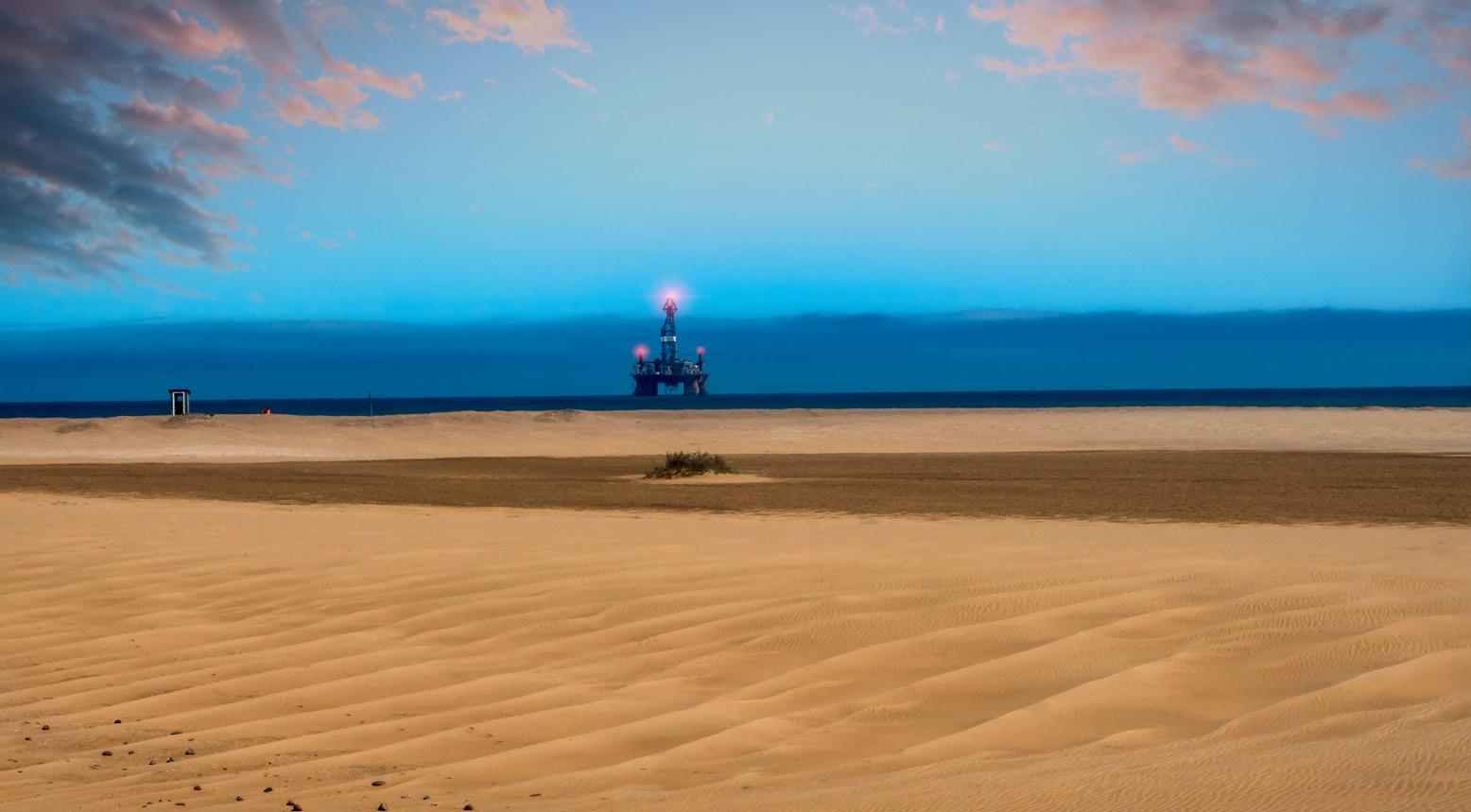
under this strategy. A fresh slate of investment continues to flow into Namibia’s upstream market as new exploration and production players enter, hoping to mirror the exploratory success of their predecessors.
Currently, TotalEnergies is engaged in a multi-well appraisal and drilling campaign in Block 2913B of PEL 56 in the Orange Basin. Majors like Chevron, ExxonMobil and Galp are either entering or expanding their footprint across the market. Onshore, ReconAfrica is conducting seismic research in the PEL 73 licence area in the Kavango Basin, recently announcing an updated prospective resource estimate of 22.4 trillion cubic feet of natural gas.
The country’s gas-to-power agenda is also gaining momentum, with the Kudu gas development project on track to supply baseload power to both the domestic and regional market. With the advent of new associated gas supplies, the 420MW power plant that the project entails means Kudu will likely play a much larger role in electrifying the nation than first envisioned.
Meanwhile, several green hydrogen projects are underway, including the 3GW Tsau Khaeb
project developed by Hyphen Hydrogen Energy, with a production capacity of 300 000 tonnes per annum, as well as the 2.5GW Tumoneni project; the 42MW Daures Green Hydrogen Village project and the 50MW hybrid green hydrogen project in Swakopmund. Three hydrogen valleys are also being assessed in Kharas, Walvis Bay port and Kunene.
By driving an integrated hydrocarbon agenda, the Namibian government is not only setting the standard for a diversified energy mix in Africa, but also sending a strong signal of confidence to global investors in the stability and longevity of their investments.
As a nascent hydrocarbons market, Namibia has the opportunity to learn from other
oil-producing African nations. What lessons can the country learn, in terms of ensuring oil and gas development contributes to energy diversification and socioeconomic development?
Namibia is uniquely positioned to meet both regional demand for oil and gas, as well as global demand for green hydrogen, synthetic fuels and critical minerals. Being a new player to the hydrocarbon market has its advantages: Not only can we learn from those that went before us, but we can also tap into regional expertise and technology to develop successful projects that prioritise socio-economic growth and value addition.
Regional oil heavyweights like Angola have already partnered with Namibia, with several bilateral agreements in place to drive cooperation across local content, capacity and skills development, regulatory planning and hydrocarbon development.
From policy structuring to capacity building initiatives to resource integration, Namibia is already gaining crucial insights from its oil-producing neighbours.
What are your top energy development priorities between now and 2030?
Underpinned by our integrated hydrocarbon strategy, our main priorities between now and 2030 lie in the balance between achieving first oil and getting
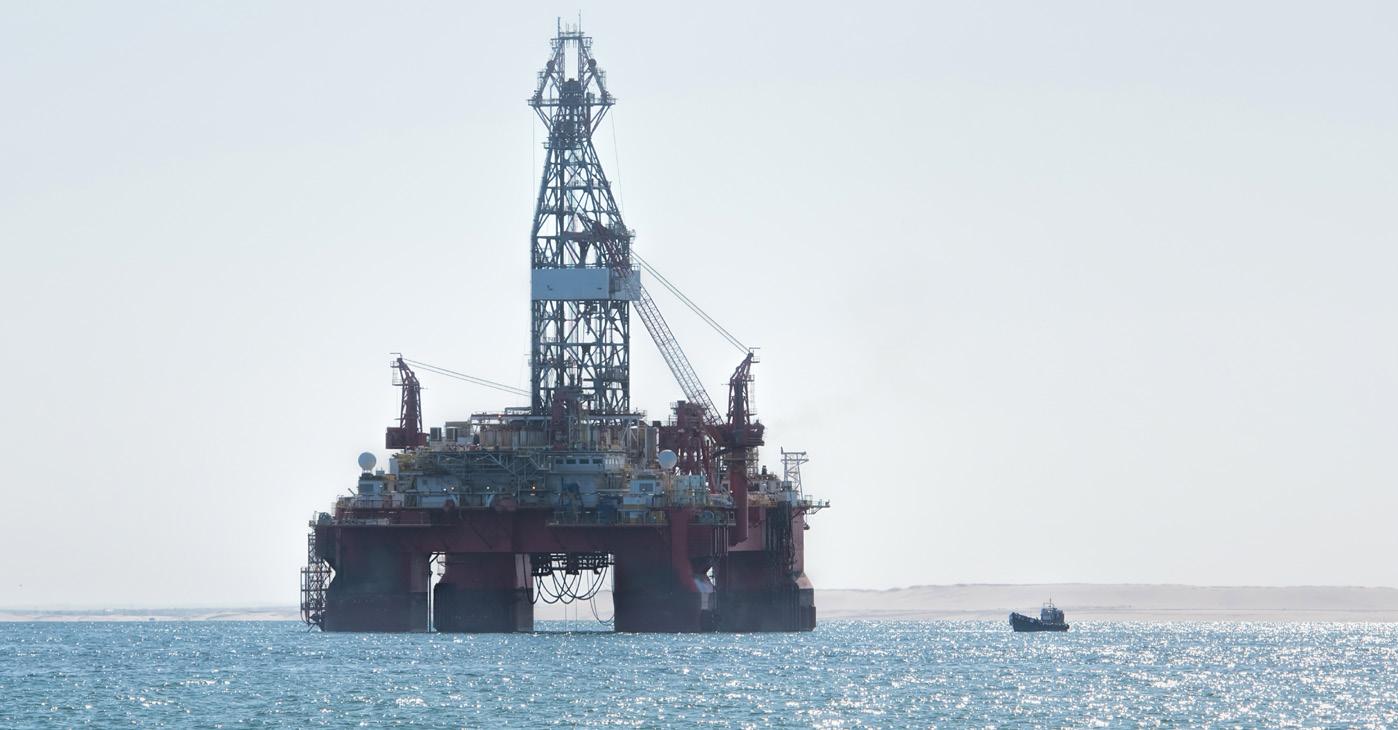

large-scale green hydrogen projects off the ground. Across the sector, we are working toward bringing new investment into the country, particularly in the areas of infrastructure, power generation, industry and manufacturing.
In tandem, unlocking the potential of Namibia’s offshore and onshore basins will be contingent on driving and incentivising sustained investment in the upstream.
These goals require a complete overhaul of the existing regulatory framework to ensure competitive, attractive terms for investors, as well as co-ordination with international partners.
At the cusp of the sector’s transformation lies policy. Currently, oil & gas legislative frameworks are set out in the Petroleum Exploration and Production Act of 1991 (as amended in 1998), the Model Petroleum Agreement and the Petroleum Products and Energy Act of 1990 (as amended in 1994) and its complementing regulations passed in 2000. However, since the latter amendments, little revision has been made to both these pieces of legislation.
The country’s recent exploratory success has underscored the need for not only a revision of the governing policies but also
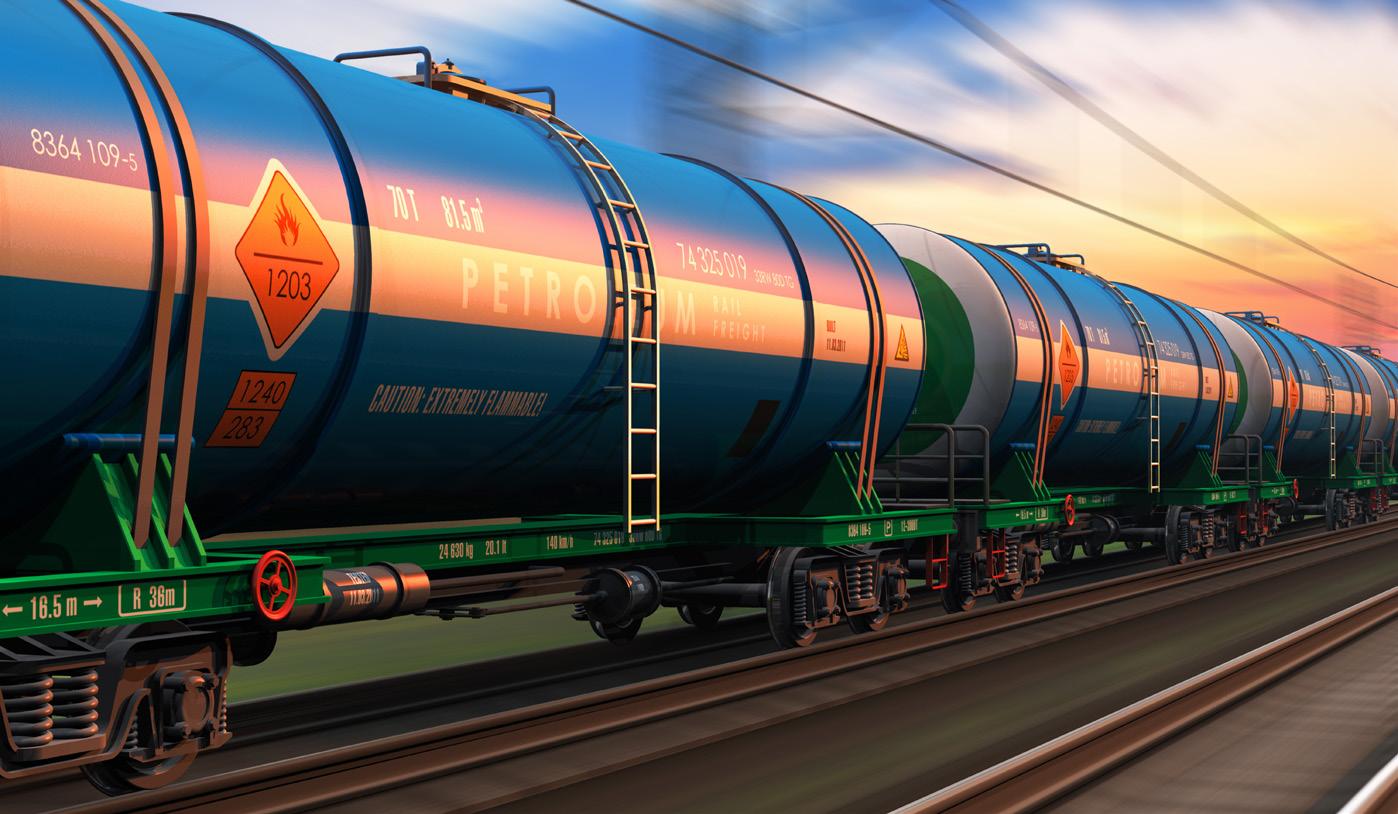
their adaptation to the changing economic and social climate we find ourselves in today.
This leads us to our next priority: unlocking Namibia’s potential as a regional green energy hub. The country has been identified as a globally leading green hydrogen market owing to its considerable, co-located renewable energy resources.
In partnership with leading companies, the country is making progress with the development of the country’s largest green hydrogen project: a $10-billion facility equipped with a 3GW electrolyser fed by 7GW of wind and solar energy.
The government recently approved the Feasibility and
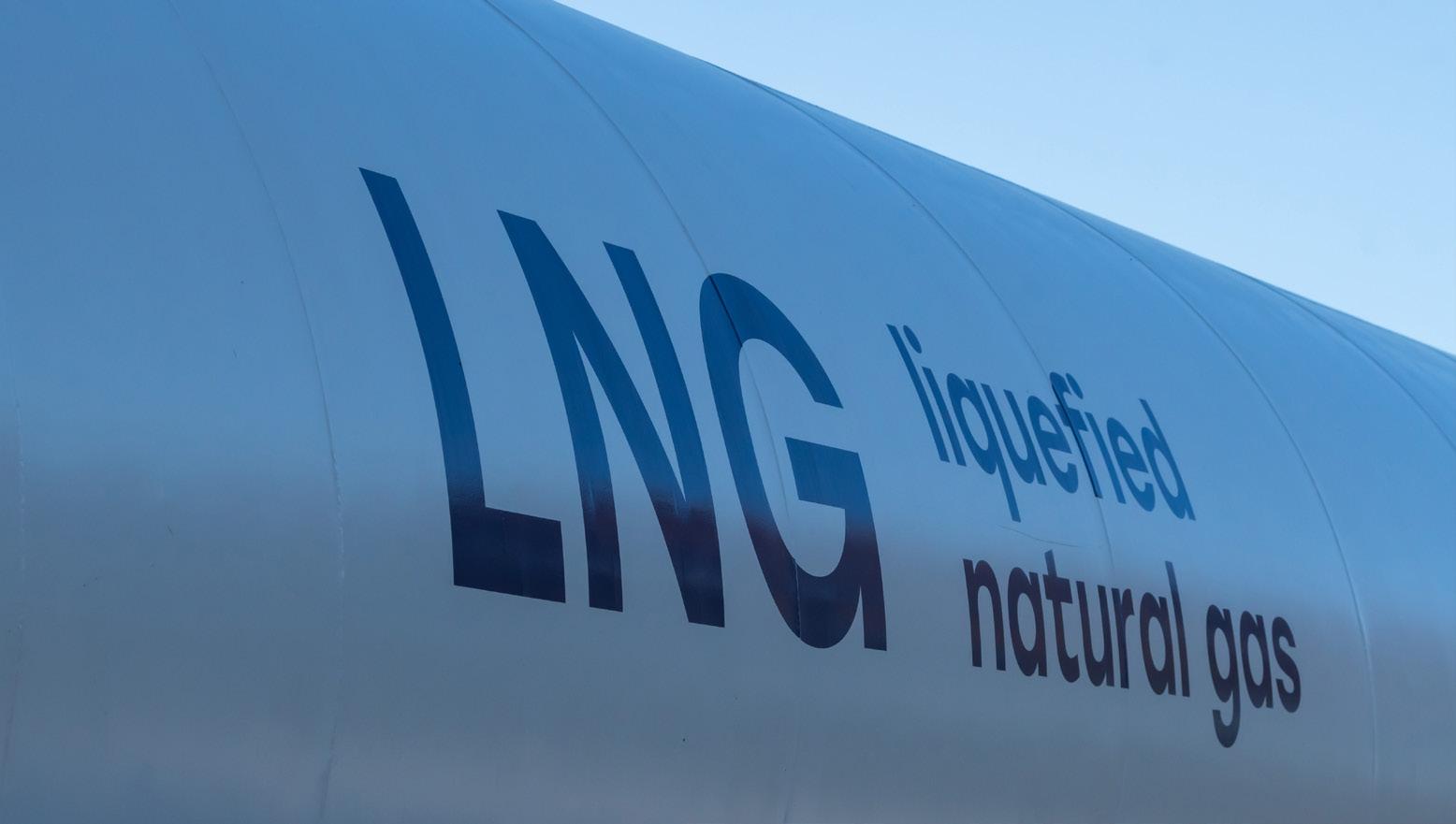
Implementation Agreement, and our priority will be providing the support needed to see this development, as well as others in this field, to fruition.
Local content also remains of utmost importance as we enter this next phase of development.
Namibia’s diverse energy resources can and should serve as catalysts for long-term and sustainable economic growth. However, this can only be achieved if the population has access to the opportunities that the evolving industry has to offer.
Namibia’s energy sector is largely in its infancy, and this represents a strategic advantage as the market grows; local Namibians can contribute to building the industry from the ground up, thereby taking shared ownership in this development.
As such, the Ministry of Mines and Energy has placed local content at the heart of our oil & gas development agenda and is busy investing in capacity-building initiatives, skills and technology transfer, thereby ensuring new energy development translates into tangible opportunities for Namibians.


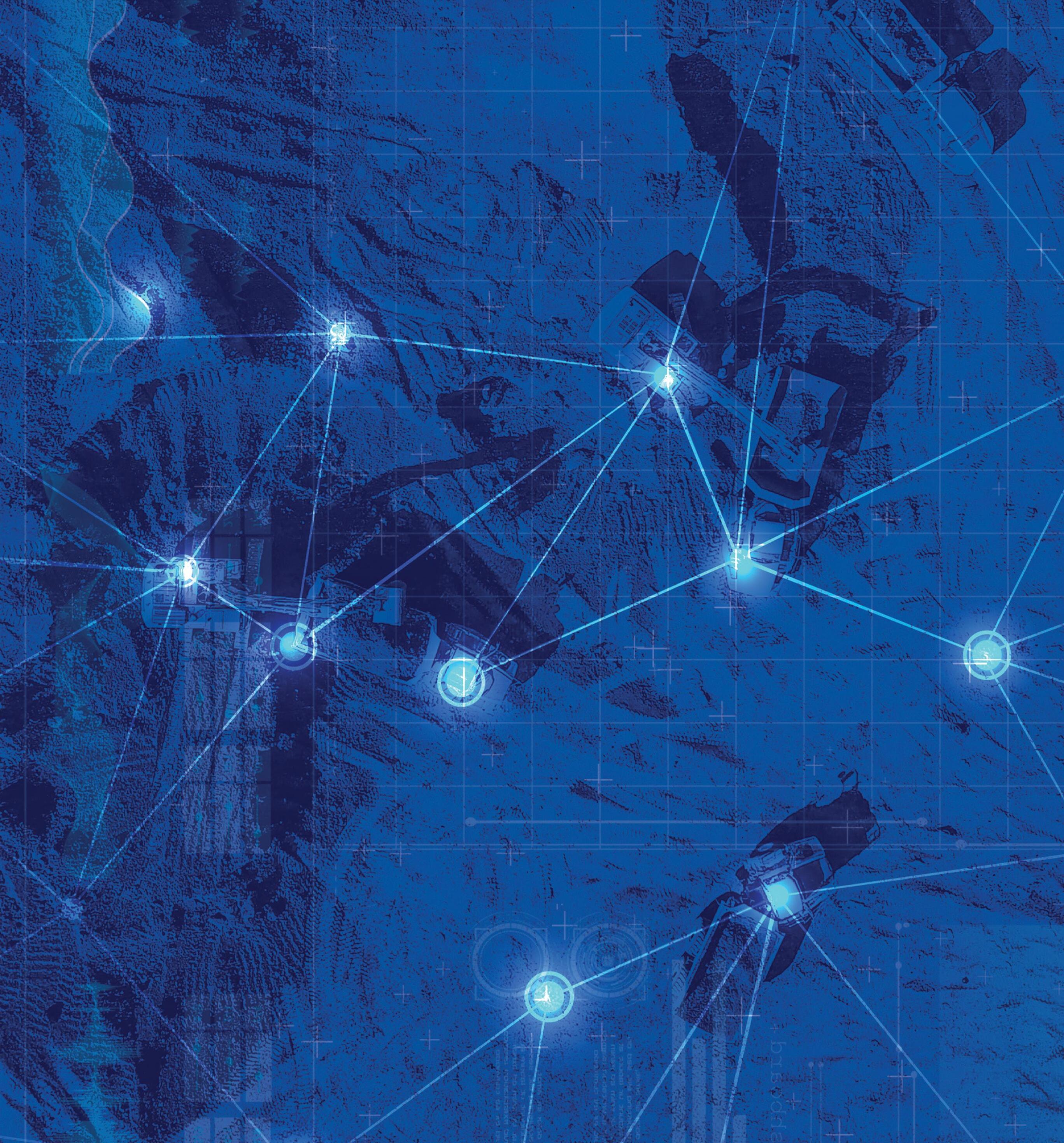


It is important we all fully understand the immense benefits of oil, and the petroleum products derived from it

If oil disappeared tomorrow, there would be no more jet fuel, gasoline or diesel. Internal combustion engine automobiles, buses, trucks, lorries and coaches would be stranded. Airplanes powered by jet fuel would be grounded. Freight and passenger rail powered by diesel would halt. People could not get to work; children could not get to school. The shipping industry, transporting both freight and passengers, would be devastated.
There would be no point calling emergency services. The majority of ambulances, fire engines, police cars, rescue helicopters and other emergency vehicles would be stationary. Most phones and computers would also vanish, as their plastic components derive from oil, so it would be a struggle to find a way of communicating with the emergency services anyway.
The construction sector would halt, as diesel-powered vehicles would be stranded: excavators, bulldozers, dump trucks, cranes, cement mixers, rollers and compact loaders would remain stationary. New homes or buildings could not be built or receive vital maintenance work.
If oil disappeared tomorrow, petroleum based-products would vanish with it. This would impact the production of electric vehicles (EVs). Aside from the supply chain disruption, the structure of lithiumion batteries would be affected. A lithium-ion battery has four parts: an anode, cathode, electrolyte and a separator. Separators are engineered microporous membranes, typically made of polyethylene or polypropylene petroleum-based products. The petroleum-derived synthetic rubber used on car and bicycle tyres would cease to exist.
If oil disappeared tomorrow, food production would be devastated. Many of the vehicles necessary
in agriculture—tractors, mowers, combine harvesters, balers, sprayers and seeders—would stop working. Food packaging necessary for storage and preservation would not be available. Petroleum coke, a byproduct in oil refining, is used as a feedstock in manufacturing synthetic fertilisers, which are important in increasing crop yields. Food shortages and the knock-on impacts would likely ensue.
If oil disappeared tomorrow, it would be catastrophic for health services everywhere. Staff would lack mobility, and essential supplies would be stranded.
Beyond transportation, petroleum is an essential feedstock for pharmaceuticals, plastics and medical supplies. Latex gloves, medical tubes, medical syringes, adhesives, some bandages, disinfectants, hand sanitisers, cleaning agents, prosthetics, artificial heart valves, resuscitation masks, stethoscopes, MRI scanners, insulin pens, infusion bags, medication packaging, face masks and personal protection equipment are largely derived from petroleum-based materials. The equipment used in medical research such as microscopes, test tubes and goggles usually contain petroleum-derived components.
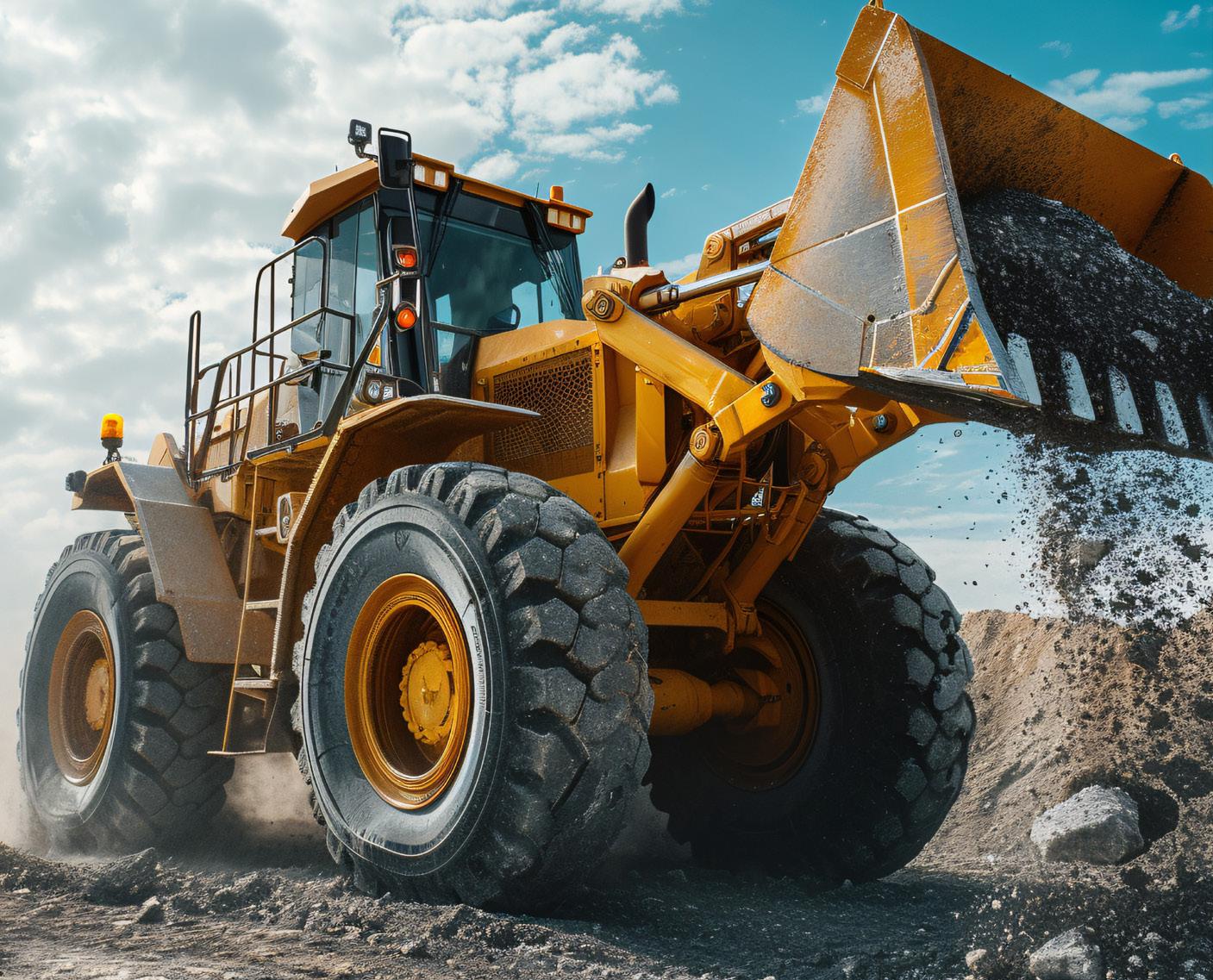
The chemical synthesis that creates aspirin begins with benzene, which is derived from petroleum. The benzene is converted to phenol, which in turn is converted to salicylic acid. This is then transformed into acetylsalicylic acid, which the world knows as aspirin.
It is difficult to conceive of a modern hospital without this range of essential petroleum-based products.
If oil disappeared tomorrow, the renewables industry would

be impacted. The fibreglass, resin or plastic necessary for the construction of most wind turbines would disappear. The ethylene used in the production of solar panels would vanish. Most of the mining vehicles—large trucks, rotary drill rigs and rock drills—necessary to extract the critical minerals upon which the production of solar photovoltaic plants, wind farms and EVs depend would become stationary.
If oil disappeared tomorrow, homes would be transformed beyond recognition. There is the possibility roofs would collapse, for example, if bitumen were a key product. Other materials used in insulating homes would disappear. If you relied on heating oil to keep warm, that would go. The linoleum flooring and tiling would be impacted. Painting the walls would be a challenge. Furniture, pillows, rugs, curtains, dishes, cups and non-stick pans all are likely to be made from petroleum-derived products, too.
It would be a challenge to stay clean or keep homes clean if oil disappeared tomorrow. Laundry detergent and dish
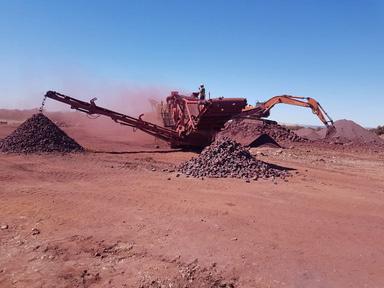
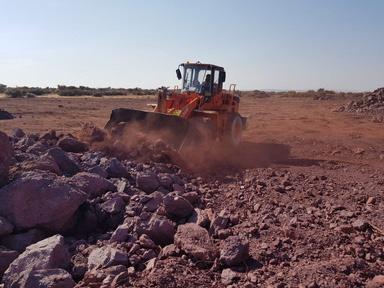
Labcorp Ltd is an innovative, forward-thinking mining, materials processing, and plant hire public company
Founded in 2016, Labcorp has since transformed into a dynamic corporation, completing numerous projects and becoming a public unlisted corporation The company has developed a keen interest in the Iron Ore industry
Labcorp's initiative is to utilize their years of experience gained in the mining industry to improve the technology used in processing this mineral, thereby making their projects more cost-effective and environmentally friendly.
With extensive R&D in the Iron ore division, we have developed patented pending air separation technology, which is used to remove contaminants from the ROM

We believe this technology will be instrumental in the future of mining and will also make mining materials more environmentally friendly, reducing carbon emissions and damage done to greenery without the use of slimes dams
Labcorp has entered into an agreement to mine and develop a new Iron Ore mine in Limpopo, which will utilize this innovative processing method, as well as create job opportunities and provide useful skills through workforce training
For a limited time, Labcorp has made shares available exclusively for new shareholders to come on board and join in the future of materials processing
This is only one of many opportunities in this company’s bright future.
LABCORP LTD: “We dig deep.”
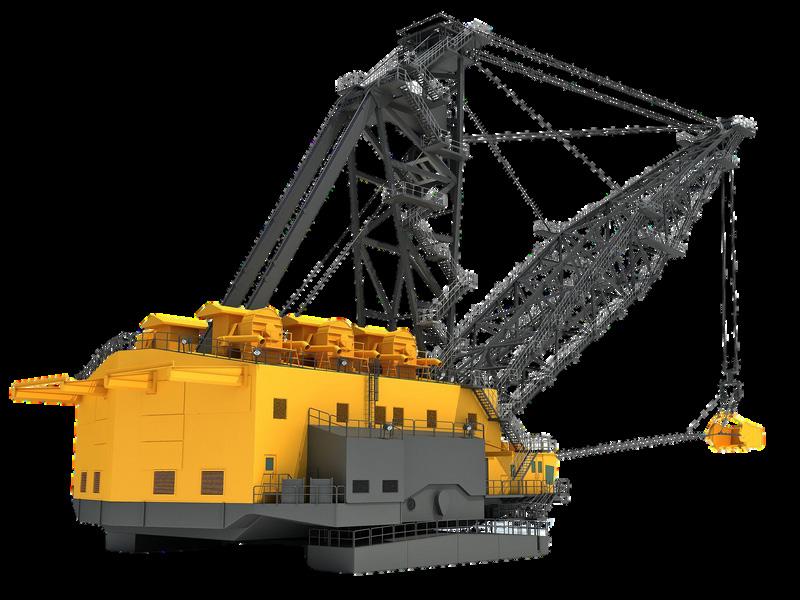


detergents usually derive from petroleum-based products. Soap, toothpaste, hand lotion, deodorant, shampoo, shaving cream, eyeglasses, contact lenses, combs, brushes—all normally contain petroleumderived products.
It would be a struggle to get anywhere, as the asphalt that paves roads and footpaths would vanish.
If oil disappeared tomorrow, millions of jobs would be lost. Tax revenues would be depleted. Industrial production would crimp. Economic growth would go into reverse. The plight of the fuel-poor would be worsened.
This is not even the full list of everything that would be impacted in such an unthinkable scenario.
Yet, despite these realities, there are calls of ‘Just stop oil’, ‘Keep it in the ground’, or ‘Don’t invest in new oil and gas projects’.
Of course, everyone wants to see greenhouse gas emissions reduced. OPEC (opec.org) believes technological solutions and efficiency improvements can play a vital role. The oil industry is already proactive in this regard.
We need to be cautious of endangering the present, in the name of saving the future. It is important we all fully understand the immense benefits that oil, and the petroleum products derived from it, continue to provide to people and nations across the world.
His Excellency Haitham Al Ghais Secretary-General Organization of the Petroleum Exporting Countries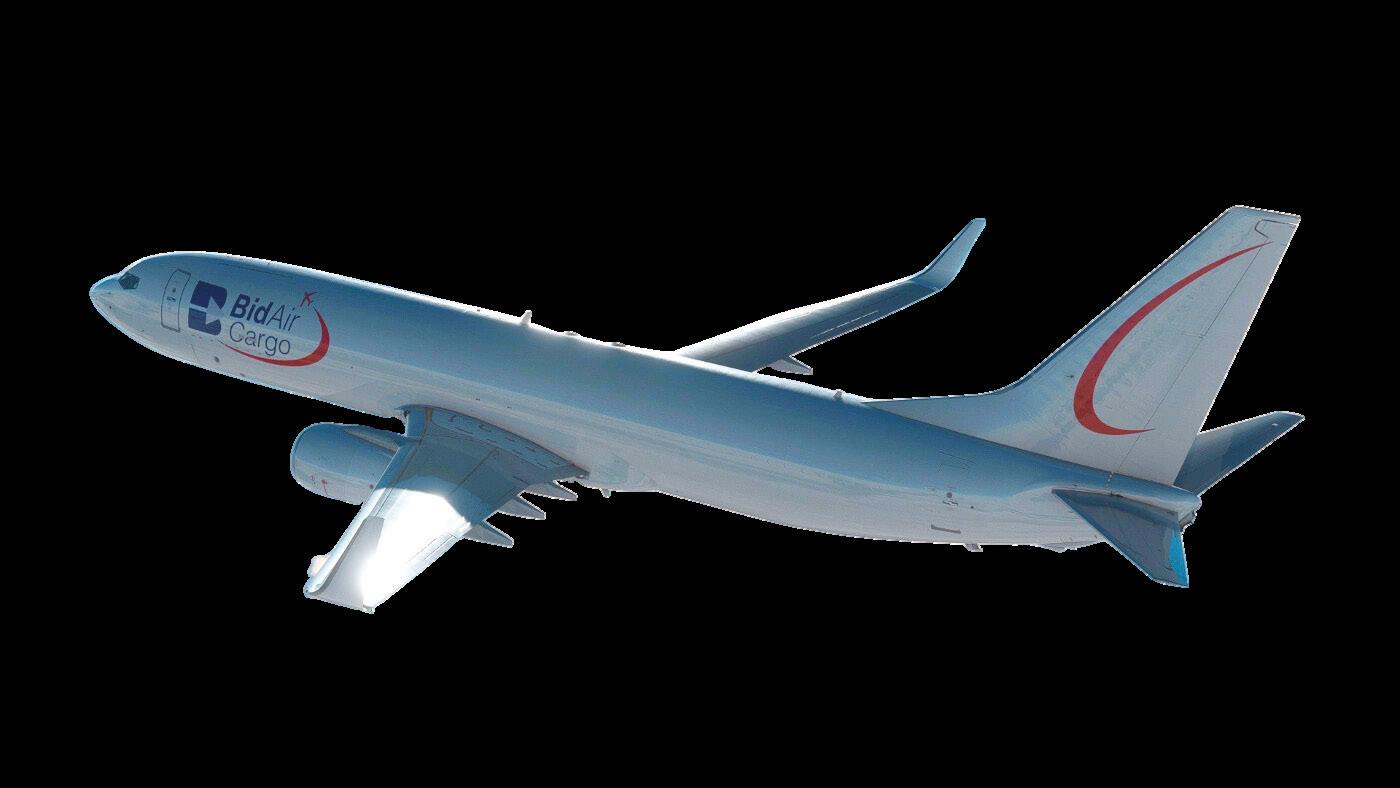

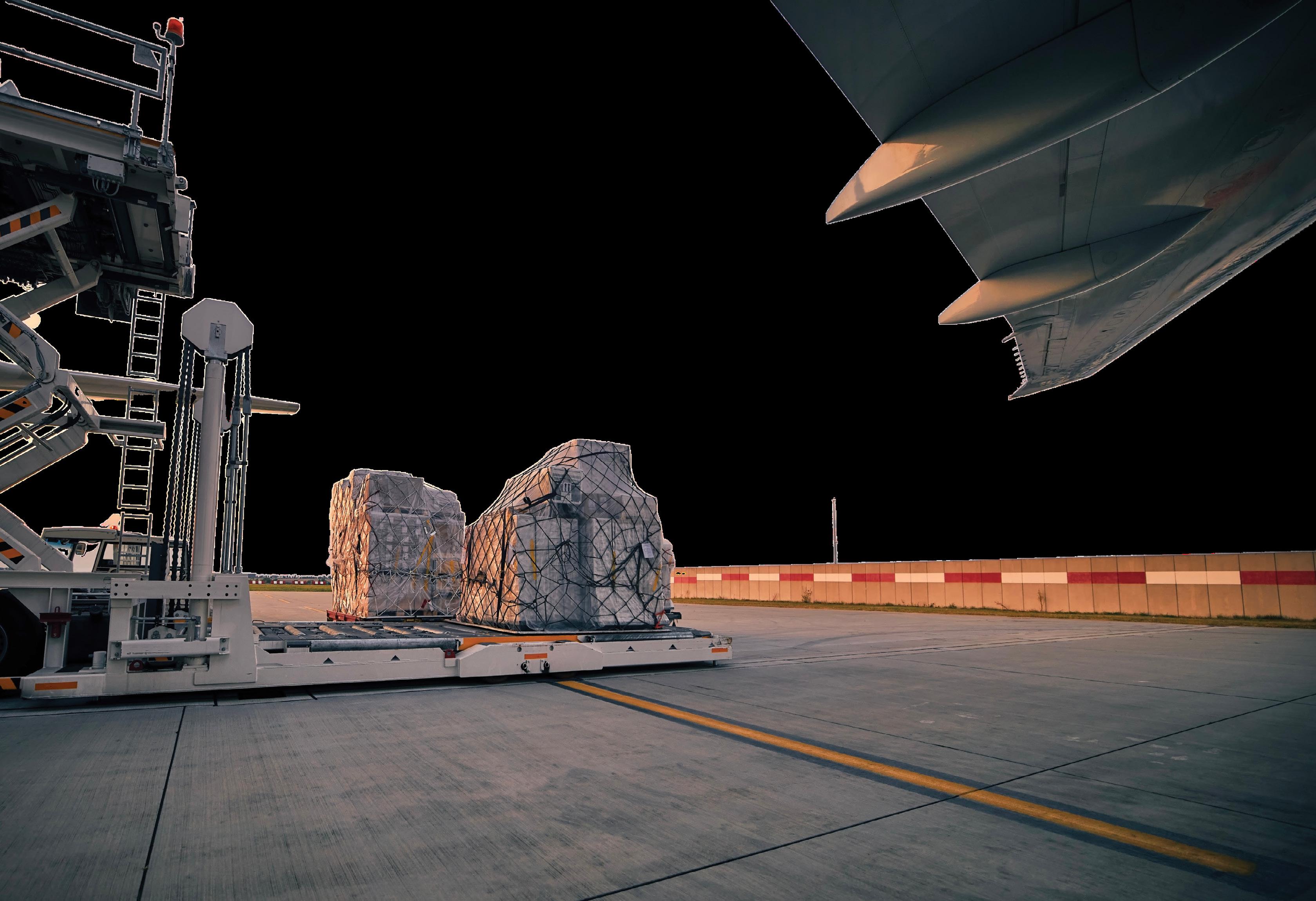

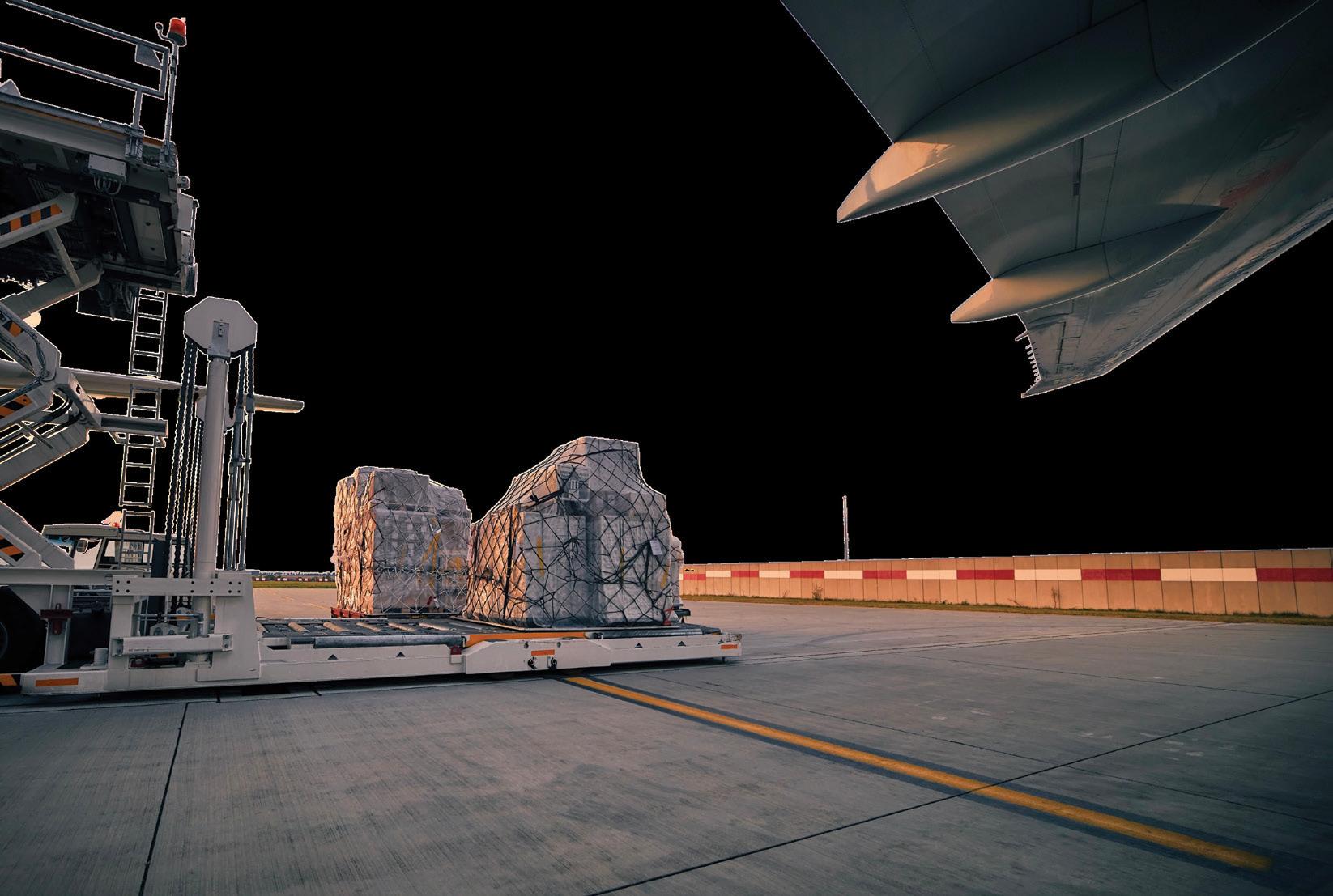


South Africa needs to use its abundant domestic natural gas to fix its energy crisis today

South Africans do not want to breathe clean air in the dark. Energy woes are synonymous with South Africa right now. As the country’s fleet of mostly coal-powered plants struggles to keep up with electricity demand, South Africans are enduring daily power outages that last six to 10 hours a day.
With businesses and institutions struggling to function, and tension mounting among South Africa’s people, the need for solutions is beyond urgent.
I say 'solutions' because providing the reliable power that South Africa needs now, and ensuring the growing country will have what it needs well into the future, will require multiple strategies.
As I have written, because of the country’s current reliance on coal to fire its power plants—and coal mines to fuel the economy— increased coal usage must be one of those solutions for the time being.
South Africa also will need to continue building its renewable energy sector, and it has committed to do so in alignment with global goals to achieve netzero greenhouse gas emissions.
But perhaps one of the most impactful solutions will be natural
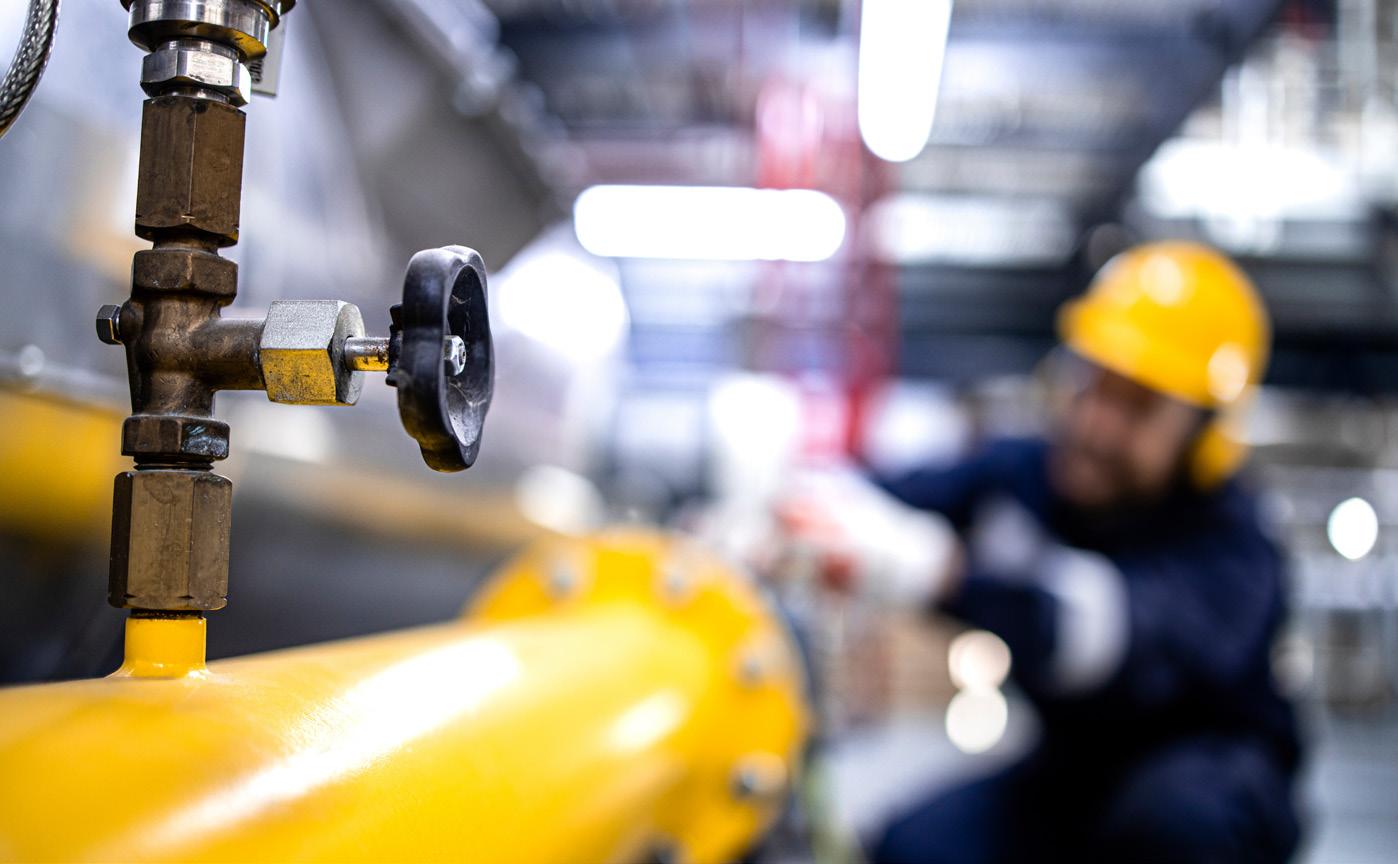
gas, which not only can power reliable electricity generation but also is a clean energy source— one that can be monetised and one that supports economic diversification as a feedstock for chemical and fertiliser factories.
It only makes sense for South Africa to harness its massive— and largely untapped—reserves of natural gas. As described in the new African Energy Chamber (AEC) report, “The State of South African Energy Outlook” (t.ly/ YbZpk), cumulative output for South Africa’s large-scale Brulpadda and Luiperd natural gas discoveries, when developed, are estimated to be 50 000 barrels per day of liquids and 125 000 barrels of oil equivalent per day. South Africa must do what it takes

to reach that point as quickly as possible.
During the 2023 African Energy Week in Cape Town, Gwede Mantashe, South African Minister of Mineral Resources and Energy, stated: “In recognition of the continued role of the fossil fuels in supporting energy security and the fact that 82% of energy sources in the world are from these fossil fuels, Africa must intensify its efforts aimed at developing its oil & gas sector in order to benefit from the expected increase of natural gas market in global supply”.
I agree; that is why South Africa should be encouraging ongoing oil and gas exploration through an enabling regulatory environment.
And we cannot forget the importance of natural gas projects in neighbouring African countries, including Gigajoule’s $550-million Matola Liquefied Natural Gas (LNG) Project in Mozambique, which will supply South Africa with gas; the 865-kilometre Rompco Gas Pipeline from Mozambique to South Africa; and Renergen’s Virginia LNG project in South Africa. These projects need to be fasttracked.
Natural gas, if directed toward domestic markets and gas-fired electricity plants, can help
South Africa find its way out of its current power crisis. Natural gas can also help ensure energy security and economic growth while the country transitions from fossil fuels to renewables for power generation. South Africa must move decisively to accelerate its gas agenda and start realising these benefits.
I have heard repeated arguments that South Africa’s energy crisis is proof that now is the time for the country to move, at lightning speed, to renewable energy sources like wind and solar power.
As I have said more than once, South Africa can and should embrace solar and wind, but it also must consider the intermittency issues that come with them. They cannot be counted on to provide electricity around the clock.
South Africa does not need more power fluctuations. It needs baseload power sources that can generate dependable power capable of consistently meeting

demand. And the only way to get that is from coal and natural gas.
We also have to be realistic about the financial requirements for a complete transition to natural gas. Yes, South Africa’s Just Energy Transition Investment Plan is an excellent programme, but as of yet, the money generated is a drop in the bucket. South Africa has acknowledged it will need about $99 billion to pay for a full transition to renewable energy. Currently, it has received commitments for about $8.5 billion.
So, as South Africa pursues renewable energy, the logical approach would be to embrace natural gas as well. It can serve as a reliable energy source for the country’s current and future needs—and, as it is monetised, it can help generate revenue for South Africa’s energy transition. I was pleased to hear South

African President Cyril Ramaphosa express that logic. He has made it clear that, while the country does plan to replace coal with lower carbon alternatives, those alternatives will include both renewables and natural gas.
South Africa has an Integrated Resource Plan in place that calls for gas technology generating 6 000MW from combined-cycle gas turbines, including 3 000MW from LNG-to-power, 726MW from gas-to-power, and 1 500MW from non-specified gas.
This is doable, and it aligns with the AEC report’s forecast for South African power generation during the next decade and beyond. While coal currently accounts for about 80% of power generation, coal usage likely will decrease to 65% by the end of the decade, our report says. Gas and renewables, meanwhile, will see growth around the same time: Natural gas will account for 5% of power generation in 2031, while onshore wind and solar photovoltaic (PV) generated power will make up 17% and 7%, respectively. In the long term, natural gas, onshore wind and solar PV are expected to increase to 15%, 30% and 20%, respectively, making up 65% of total power generation.
South Africa’s commitment to pursuing these avenues is praiseworthy, but when it comes to harnessing natural gas, more


work is needed. I am talking about government policies.
South Africa needs a regulatory environment that encourages ongoing investment and exploration by oil and gas companies. Consider the Orange Basin, where Namibia is seeing record-breaking discoveries that will ensure its energy security. But only 20% of the Orange Basin is in Namibia, while 80% of it is in South Africa. Now is the time to capitalise on the opportunity it offers.
Unfortunately, South Africa seems to be stuck: Exploration and production is being hindered by unnecessary government red tape. We need to change that right away. Oil and gas companies already face tremendous pressure not to produce in Africa; this is no time to pile on the challenges.
The AEC strongly urges South Africa to ease regulatory burdens on oil and gas companies. And we call upon South Africa to fasttrack permit approvals for more drilling, seismic surveys, pipeline developments and LNG terminal construction.
South Africa also needs to eliminate red tape that could slow the Brulpadda and Luiperd projects.
These steps will be critical for South Africa to start putting natural gas to work for its people, its businesses and its communities.
Not surprisingly, if you consider the constant pressure Africa has faced in recent years to leave our fossil fuels in the ground, the prospect of pursuing gas-to-power projects in South Africa is being met with sharp resistance. 'Dirty gas' is not the answer, environmentalists and Western voices insist.
I strongly disagree. We must be pragmatic: South Africa must harness every solution at its disposal, natural gas in particular, to address the country’s energy needs.
Fortunately, President Ramaphosa has been pushing back against the anti-gas narrative as well. "Countries on the African continent need to be able to explore and extract oil and gas in an environmentally responsible and sustainable manner," he said earlier this year during an address
at the Investing in African Mining Indaba. "These resources are important for energy security, for social and economic development, and for reducing energy poverty on the continent. And we do not see this trajectory as being mutually exclusive to our focus on moving toward ensuring we reduce our carbon footprint… In our onward march toward a low-carbon future, it is critical that our efforts are both realistic and sustainable.”
I would add that many of the environmental groups trying to keep people in the dark in South Africa—and across our continent—do not have the same struggles with energy security. In fact, in a move that balances environmental stewardship with energy security, the United States just approved an $8-billion drilling programme in Alaska. If it is acceptable for wealthy countries to perform this balancing act, there is no reason Africa’s most industrialised nation cannot do the same.
Having clean air does not mean we have to be in the dark.
NJ Ayuk Executive Chairperson African Energy Chamber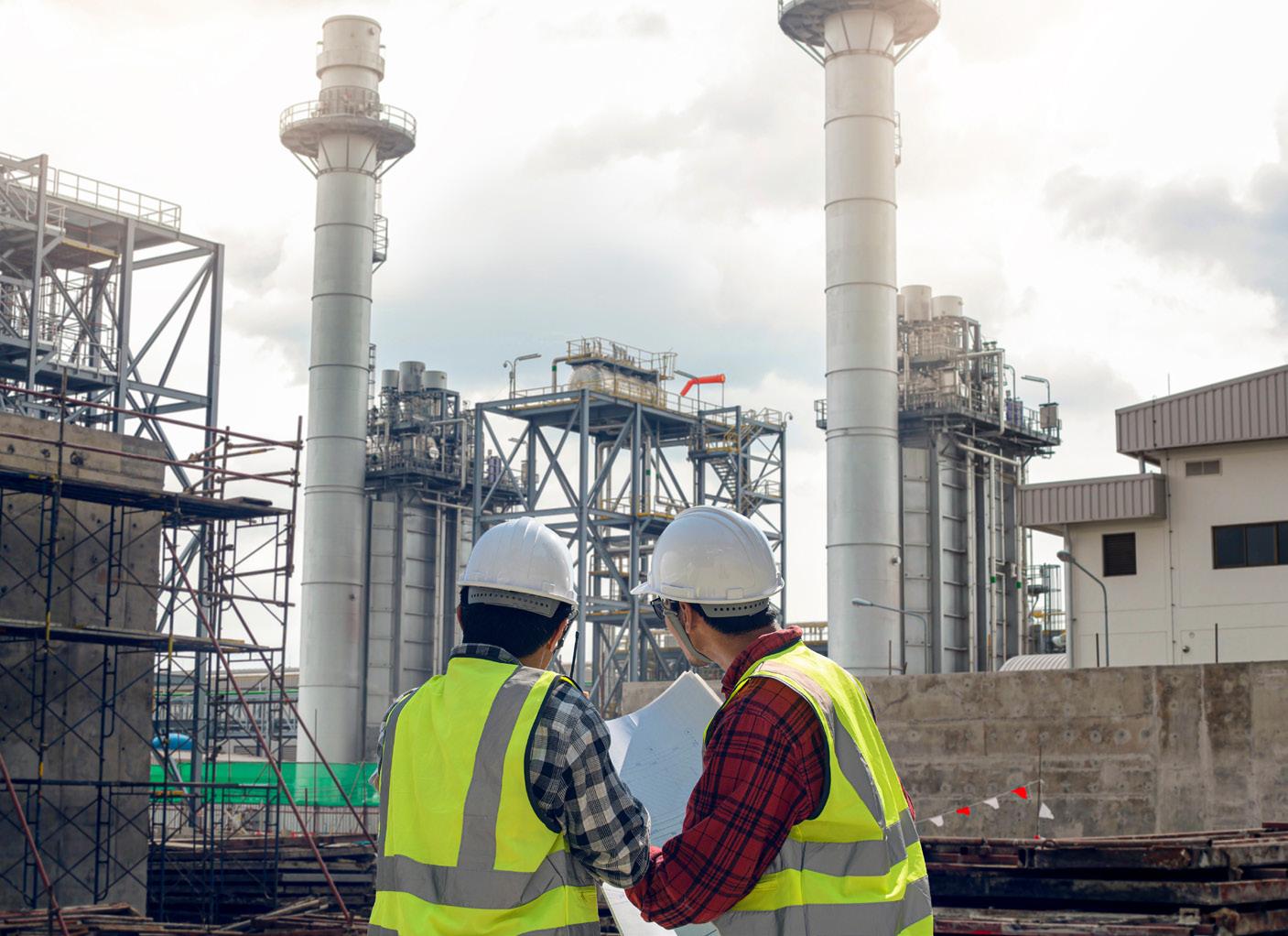


For over 85 years, St Joseph’s Home has given thousands of medically fragile children a second chance at childhood. We provide much-needed post-acute, chronic, palliative and respite care to children with life-threatening illnesses. Want to know how you can support? Visit our website and follow us on social media!

The Minerals Council highlights the relevance and impact of mining

South Africa’s mining industry matters for its employees and their families, communities and the country. It is a vital cog in the South African economy, and it can deliver greater positive shifts and grow its impact at home and abroad.
“Through the national economic gain from taxes and royalties, the social impact through the provision of jobs, wages and benefits, investing in education and training to employees and communities, and developing social projects and infrastructure, as well as providing the critical minerals to supplement our health and well-being, the mining industry consistently upholds its side of the social bargain and plays a meaningful—and at times an unappreciated—role in our economy,” says Mzila Mthenjane, CEO of the Minerals Council South Africa (MCSA).
Launching the MCSA's information sharing initiative, #MiningMatters, the breadth and depth of the positive impact of the mining industry on South African society reminds us that this sector, which is more than 130 years old, still has much to offer as a good corporate citizen and in playing its part in the just and green transition to a lowcarbon future.

Members of the MCSA and the wider mining industry are actively involved in their host communities to improve lives and livelihoods primarily through their social and labour plans (SLPs), which include investment and developments in schools, healthcare facilities and infrastructure projects, bursaries, and directing procurement spending to new entrants and suppliers to establish startup businesses and to spread the economic benefits from mining.
A survey of one year of reports from 12 of the MCSA's members across five commodities (gold, platinum group metals, coal, diamonds and iron ore),
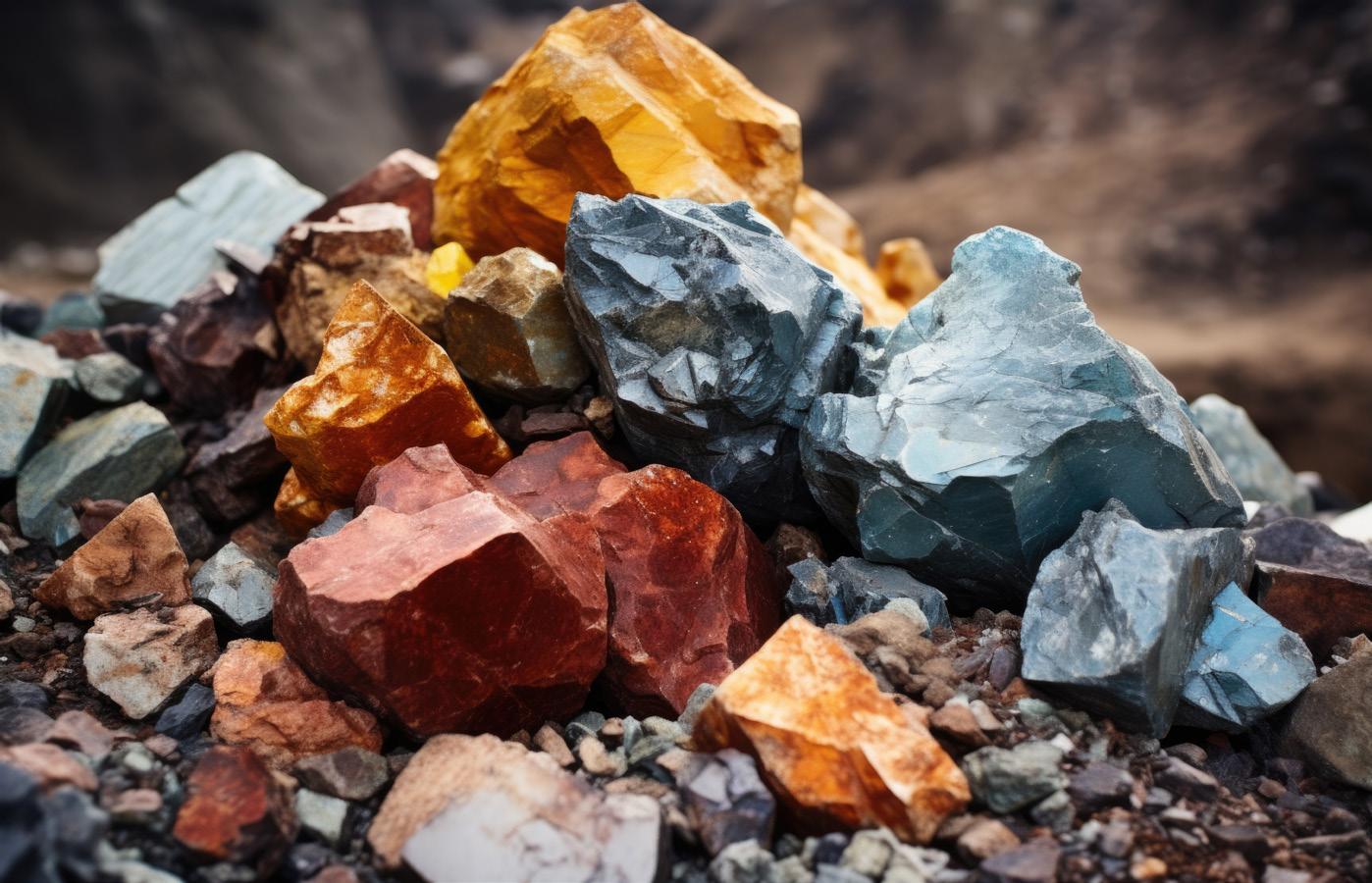
representing about 60% of formal employment in the mining industry, showed that they spent R2.3 billion on socio-economic development, focusing largely on education and health.
In addition, the companies surveyed spent R5.1 billion on training and development in a single financial year, with an estimated value of between R13 500 and R21 700 per full-time employee across the various sectors.
The mining industry was one of the few formal sectors to grow employment in 2023, adding more than 7 500 jobs, while wages increased by R12 billion to R186.5 billion—supporting the lives and
THE MINING INDUSTRY WAS ONE OF THE FEW FORMAL SECTORS TO GROW EMPLOYMENT IN 2023
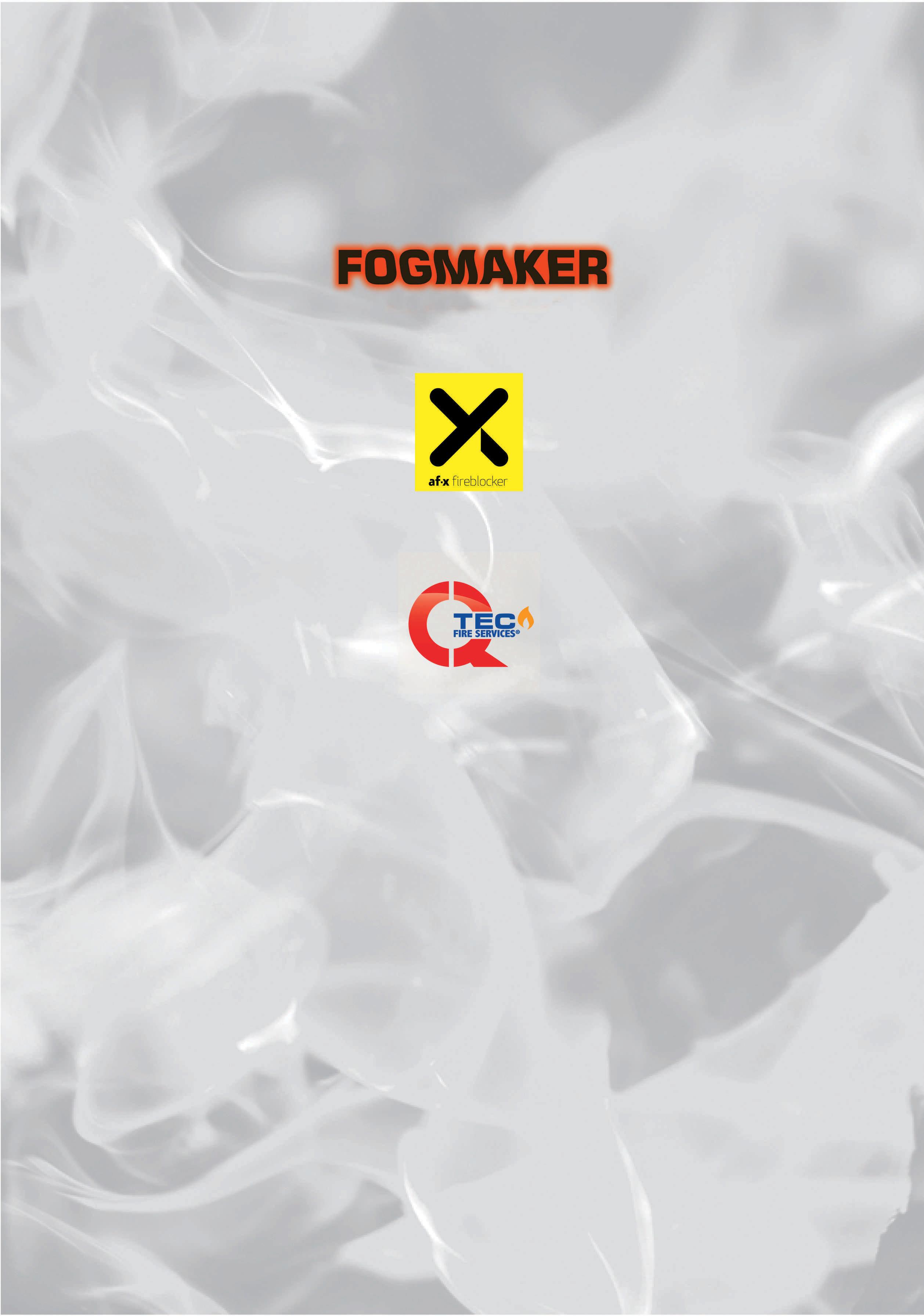
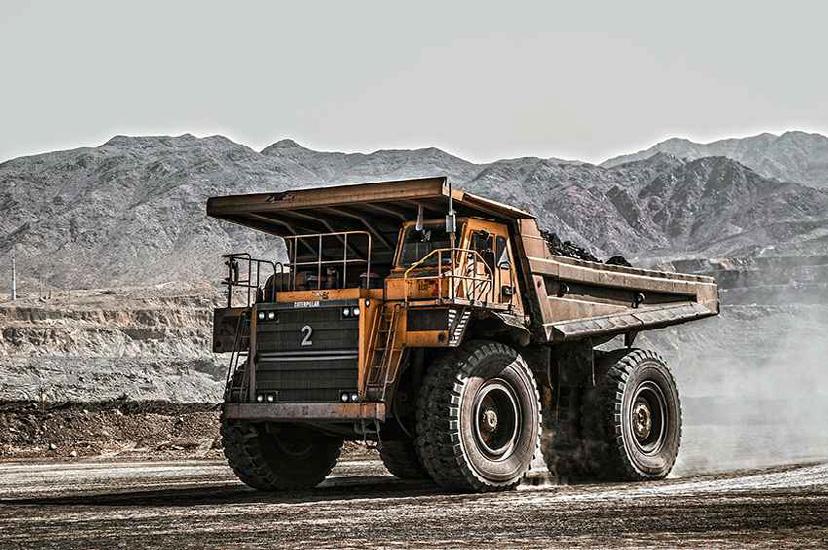






livelihoods of employees and their families in a difficult economic climate.
Based on the survey, the assessed companies employed 36 480 women, representing 19% of full-time staff, with coal, iron ore and diamond producers having the largest numbers of women (29%, 26% and 24% respectively). Women employed by the gold and platinum group metals companies in the survey accounted for 18% of the workforce.
This survey infers that the industry as a whole employed 90 630 women in 2023, comprising 19% of the total full-time workforce—a noteworthy progression from the previous 15% in prior years.
According to the survey, women accounted for 25% of management in the companies assessed.
The sector increased total taxes (company tax paid, royalties and PAYE by mining employees) by R9 billion, or 7%, to R135 billion for the intended benefit of all South Africans.
The MCSA’s initiative highlights the industry’s contribution to the country, to employees and to communities.
“Mining is a long-term investment play, through market and economic cycles. It is imperative that there is a stable and predictable environment in relation to factors that can be controlled, such as legislation and critical and enabling infrastructure. Within such an operating environment in South Africa, mining is a growth industry that can perform to deliver on many expected areas of society,” says Mthenjane.
The MCSA and its members are actively involved with the Presidency and organised business to address energy,
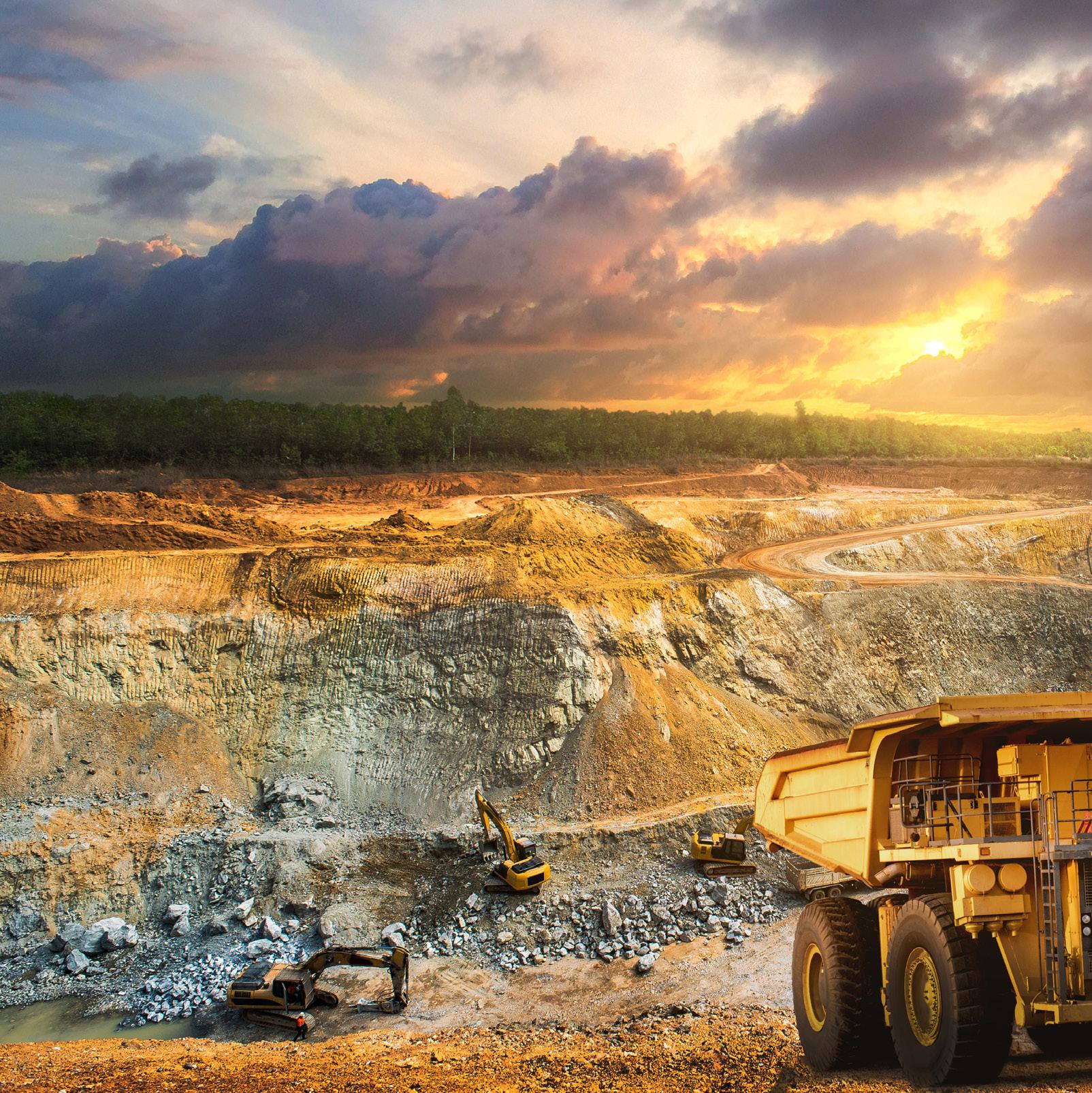
“MINING IS A GROWTH INDUSTRY THAT CAN PERFORM TO DELIVER ON MANY EXPECTED AREAS OF SOCIETY”
transport and crime and corruption to arrest the decline in the mining industry’s performance and enable a vision for growth of the sector and the South African economy, and to create meaningful jobs and provide for a life with dignity and hope.
“Our industry’s future, and its ability to continue to ensure #MiningMatters to all of us, depends on the willingness and commitment of the people of
Mzansi—including government, employees, communities and mining companies— to collaborate to create a conducive policy, legislative and operating environment that will shift the economic potential of the mining sector to performance and delivery for the benefit of all South Africans,” concludes Mthenjane.
Visit tinyurl.com/mtu2zn37 for more information on the #MiningMatters initiative.
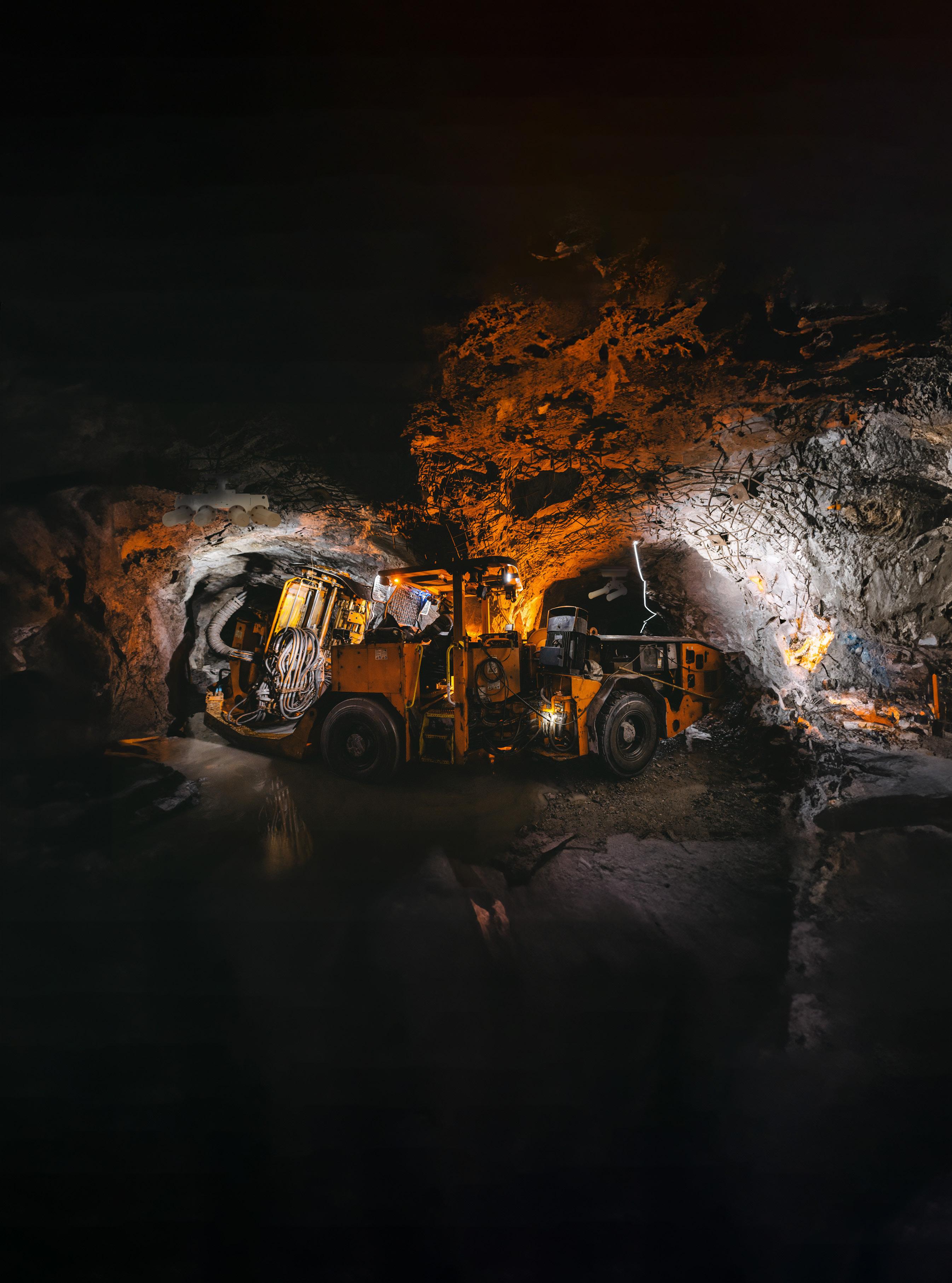






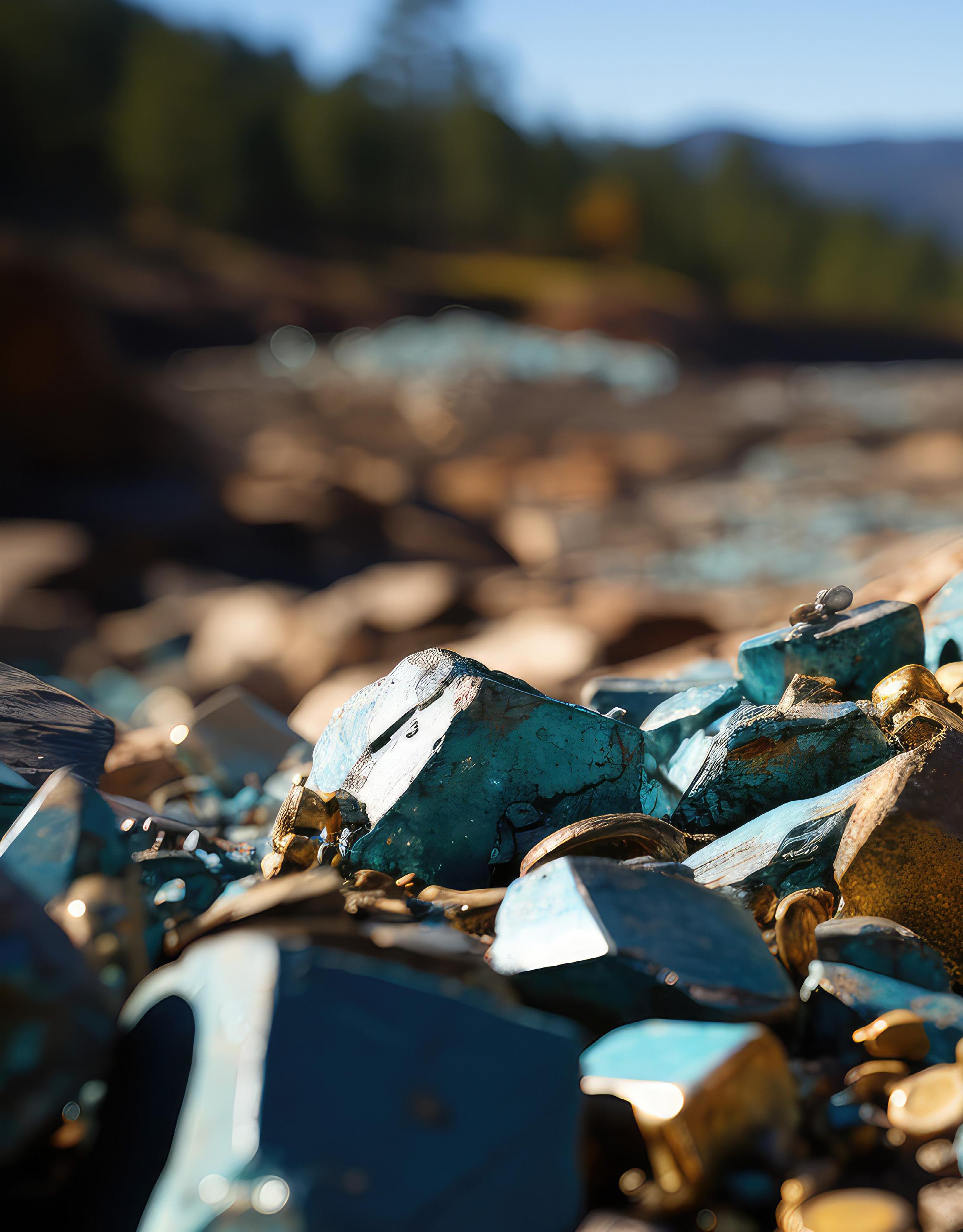
African Development Bank project returns thousands of children from cobalt mines to schools in the DRC

Launched in the Democratic Republic of Congo in 2019, the Support Project for the Alternative Welfare of Children and Young People Involved in the Cobalt Supply Chain (PABEA-Cobalt) is nearing the end, in December 2024, of its planned implementation (shorturl.at/ajpQY).
Funded to the tune of US$78 million by the African Development Fund— the concessional financing window of the African Development Bank Group—and the Transition Support Facility, the project has helped to extricate many Congolese children from artisanal cobalt mines and to train thousands of their young parents to become farmers.
The project implementation and results report (shorturl.at/psuEN), published by the AfDB on 26 January 2024, emphasised that 9 016 children (46.2% of whom are girls) have been taken out of the mines and 3 235 young people (of an initial target of 6 250) have been retrained in the agriculture sector.
The project has also brought 2 425 boys and 2 044 girls back to school so far, to provide them with a better education.
Raymond Eyoh Besong, who is
“THROUGH ONGOING AWARENESS-RAISING INITIATIVES, PABEA-COBALT HAS CONSTANTLY REMINDED CHILDREN THAT THEIR PLACE IS IN SCHOOL AND NOT IN THE MINES. ”
managing the project for the AfDB, shares his thoughts on the results of the initiative.
He considers that the overall objectives of contributing to improving the living conditions of people in the Lualaba and Haut-Katanga Provinces and establishing a responsible cobalt ore supply chain in the DRC will “definitely be achieved”.
Getting children out of mines is not always easy, but the project has succeeded. How did you go about it?
The project’s appraisal report included a comprehensive analysis to identify the root causes of children’s presence in mines and at artisanal mining sites. These are mainly household poverty and the inadequacy or lack of basic social infrastructure.

The project’s intervention strategy therefore concentrated on resolving these two main causes, and included all stakeholders in the project area who have been fighting to end child labour, including political and administrative authorities, civil society, the private sector and so on.
Some of the children went straight from the mines to the classroom. How did you manage to get them back into school, and how did they adapt to the change?
The project’s holistic approach, combining children’s social reintegration (with regard to schooling, nutrition, health, psychology and civil registration) and the socio-economic transition to agribusiness for their parents, as well as awareness-raising and the many activities planned since the project appraisal such as identifying the direct beneficiaries, are the major incentives for encouraging the children to go back to school and their parents to keep them there.
The establishment of Centres for the Promotion of Youth Entrepreneurship in Agribusiness has convinced local leaders, the communities themselves as well as the parents of the children in question of the project’s effectiveness, sustainability and ownership while reassuring them that parents can maintain social responsibility for their children post-project.

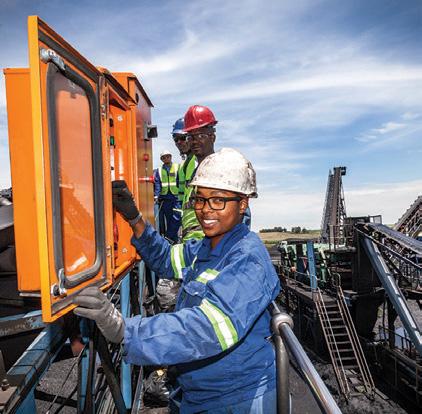
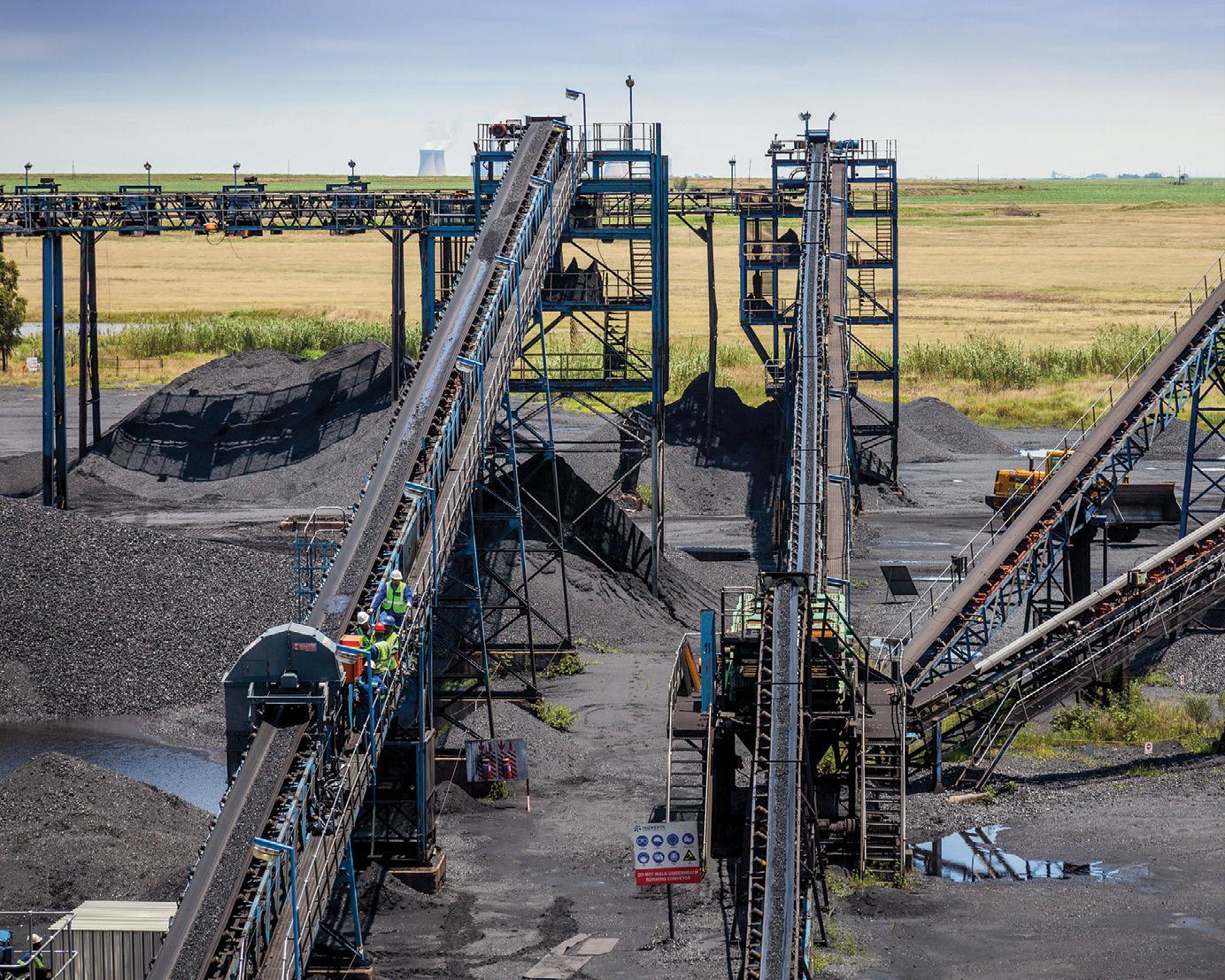

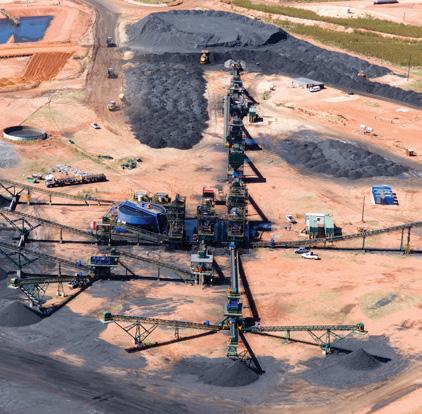
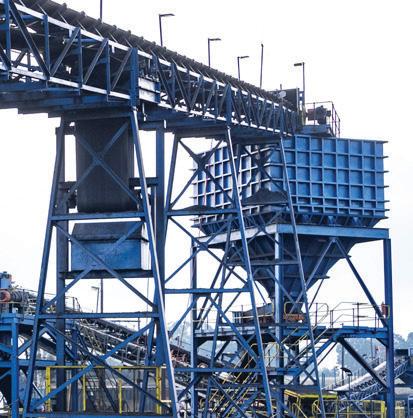
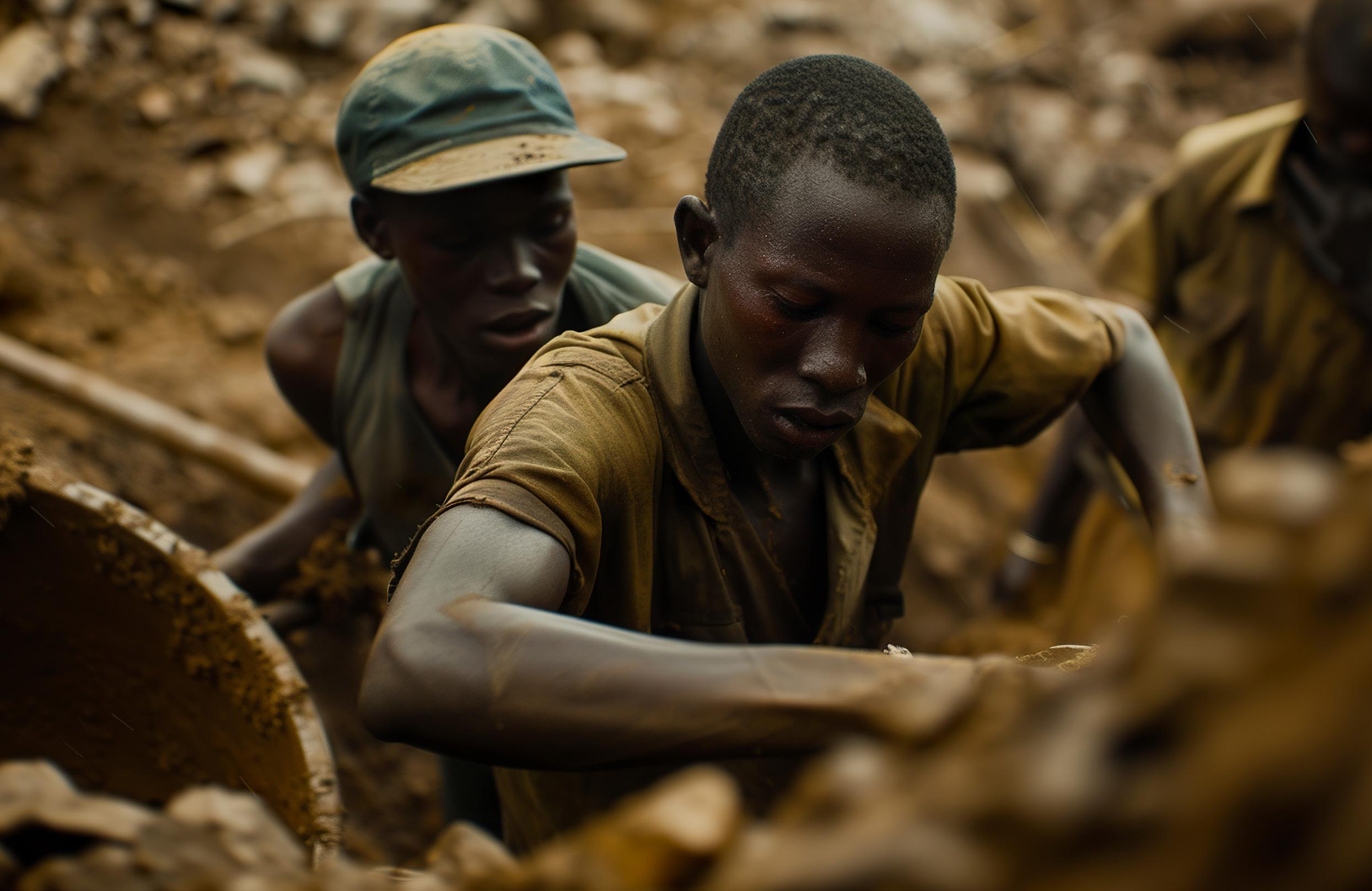
Through ongoing awarenessraising initiatives, PABEA-Cobalt has constantly reminded children that their place is in school and not in the mines.
The distribution of school kits (bags, exercise books, uniforms, shoes etc.) and hygiene kits, and the payment of school fees, have made it easier for the children benefiting from the project to feel they are on an equal footing with other pupils, and for them to integrate into and adapt to other groups of children with confidence.
Nearly half of the young people earmarked for a transition to farming have actually followed through with it. Why have they been so keen?
These young people are very aware that artisanal mining, under the conditions in which
it is carried out, is high-risk work (respiratory illnesses, skin diseases, fatal accidents due to mine collapses etc.).
When agribusiness was presented to them as an alternative to mining, they expressed a desire to undergo training in the agriculture sector, particularly as they could also see agricultural infrastructure being built to support them in this transition.
The AfDB's appraisal report suggests the project should be extended. What remains to be done?
We still must build and bring into operation the vocational training centres for roles in farming, artisanal mining, and tailoring and sewing, among others, and provide effective support for the agricultural co-operatives that
have been set up as part of the agribusiness production activities.
The appraisal report also notes that project information was actively communicated. How has this helped you reach your target audiences?
PABEA-Cobalt drew up a communication strategy and a strategic communication and awareness-raising plan to promote alternative welfare.
The project used all available communication channels— community radio stations, knocking on doors, social media, focus groups and traditional national and local media (radio, TV, newspapers, posters, visuals etc.)—to implement them.
African Development Bank Group www.AfDB.org
No two industries or projects are alike, which is why you need a partner that understands your unique challenges
Only ESAB offers complete welding and cutting solutions for the most demanding industries
Optimise your operations like never before with the strength of ESAB. Lower your operating costs and increase you=r output with products designed around your business. From single machines to complete packages, ESAB’s full range of heavy metal fabrication solutions has been developed to boost your bottom line.

ES 200
cordless , battery
- powered welder
Renegade VOLT is a highly portable and powerful unit perfect for mobile welders operating in remote, offsite or hard-to-reach locations without easy access to AC mains power.
This portable, cordless battery-

powered Stick (SMAW) and Live TIG (GTAW) welder has the versatility to operate in battery, mains or AMP+ Hybrid Mode. It provides the power to burn up to 33 (E6013) electrodes on a single charge, using four 12Ah batteries.
It features a rugged industrial design with durable, impactresistant housing and multiple lift points for easy operation and transport in the field. The bright, intuitive colour-screen user interface is designed for outdoor use, even in direct sunlight, and features a battery status display and remaining arc time calculator.
The powerful welder offers the highest arc quality, with special features that include hot start, arc force, memory storage and cellulosic mode (6010) to optimise performance based on application or user preference.
Experience exceptional cutting and welding performance with our state-of-the-art plasma systems. Driven by advanced
plasma technology, these systems ensure precise results and unmatched efficiency. The Cutmaster 50+ (50 amps) and Cutmaster 70+ (70 amps) are the perfect combination of power and portability for handheld plasma cutting machines.
These machines are portable and durable with three handles as well as lightweight, industrial all-weather housing.
‘Plus’ means more, so we’ve added a user-friendly 10.9cm TFT LCD screen (with glovefriendly adjustment knob) and upgraded features that give you even more control and flexibility to master any pierce and cut up to 16mm (Cutmaster 50+) or 19mm (Cutmaster 70+). You can also switch between normal and grate cutting modes.
Together with the SL60 1Torch featuring 2T/4T function, safety trigger lock and double-tap trigger to conserve bottled air, it all adds up to the total plasma cutting package.
Visit esab.com/za for more information on these products and more.
